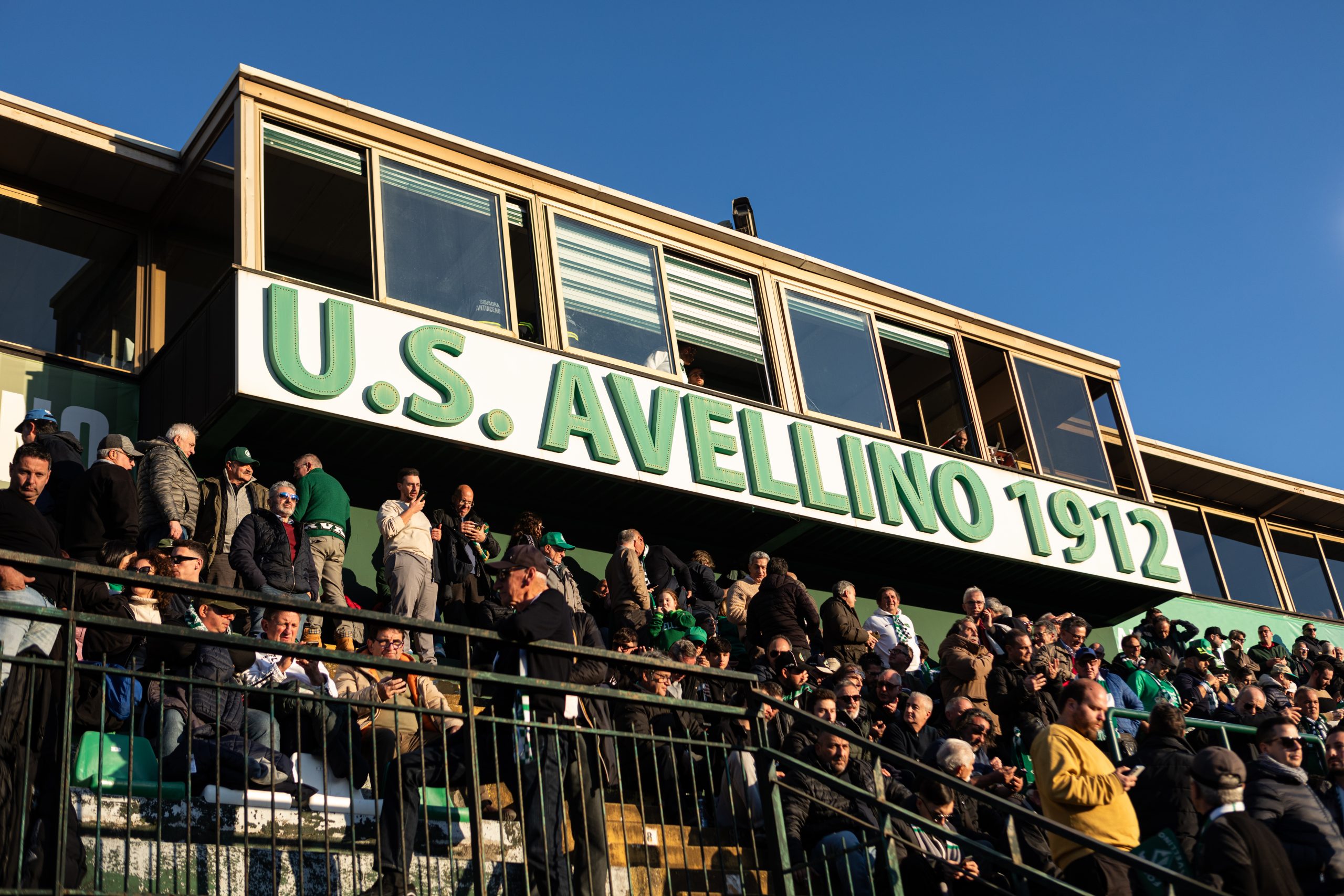In Focus
In Focus
In-depth conversations with the voices shaping culture, calcio, and society. Explore unique perspectives, personal stories, and inspiring journeys from around the world.
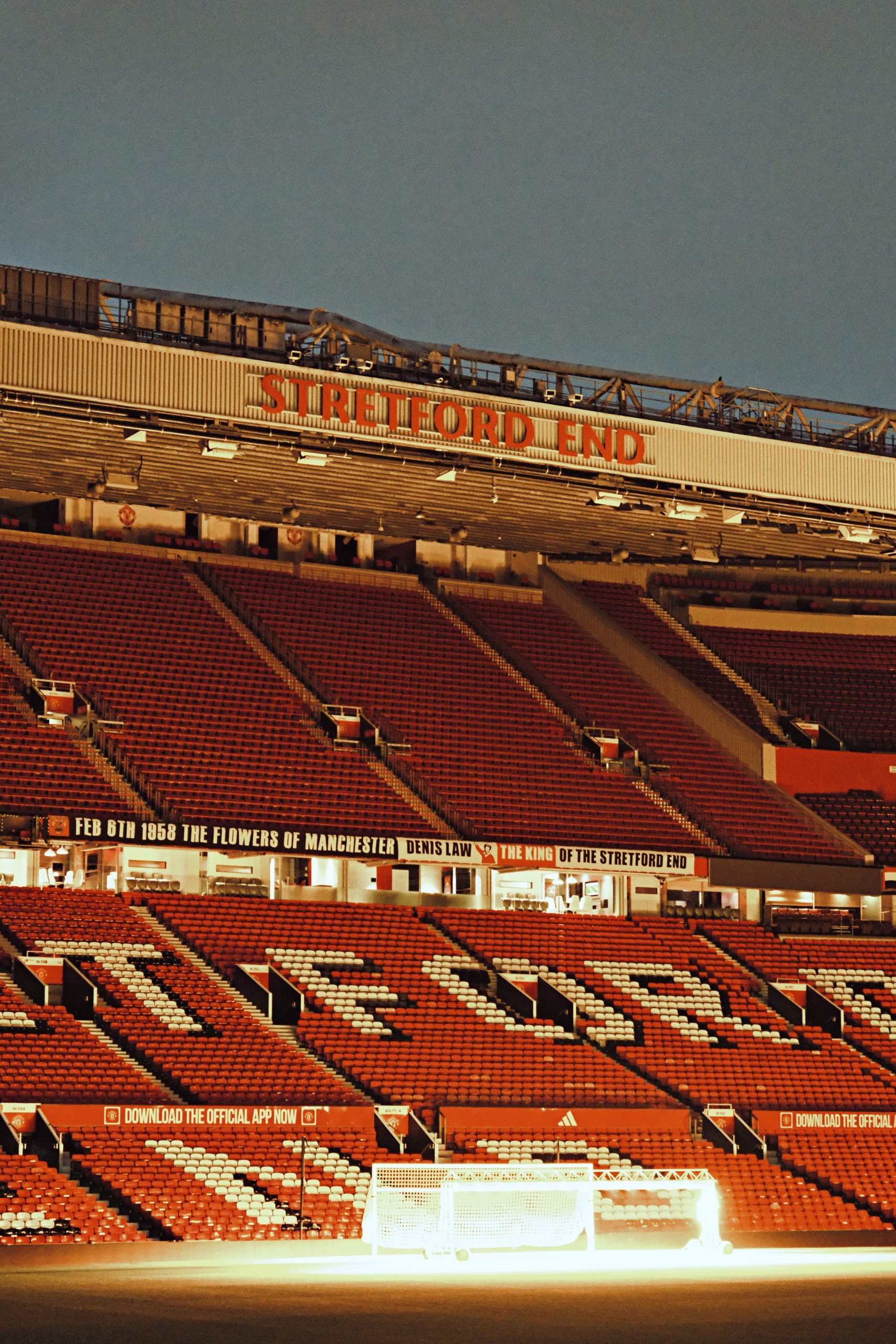
Through the Theatre of Dreams
Photographer Jorge Barna reflects on the history, emotion, and unshakeable
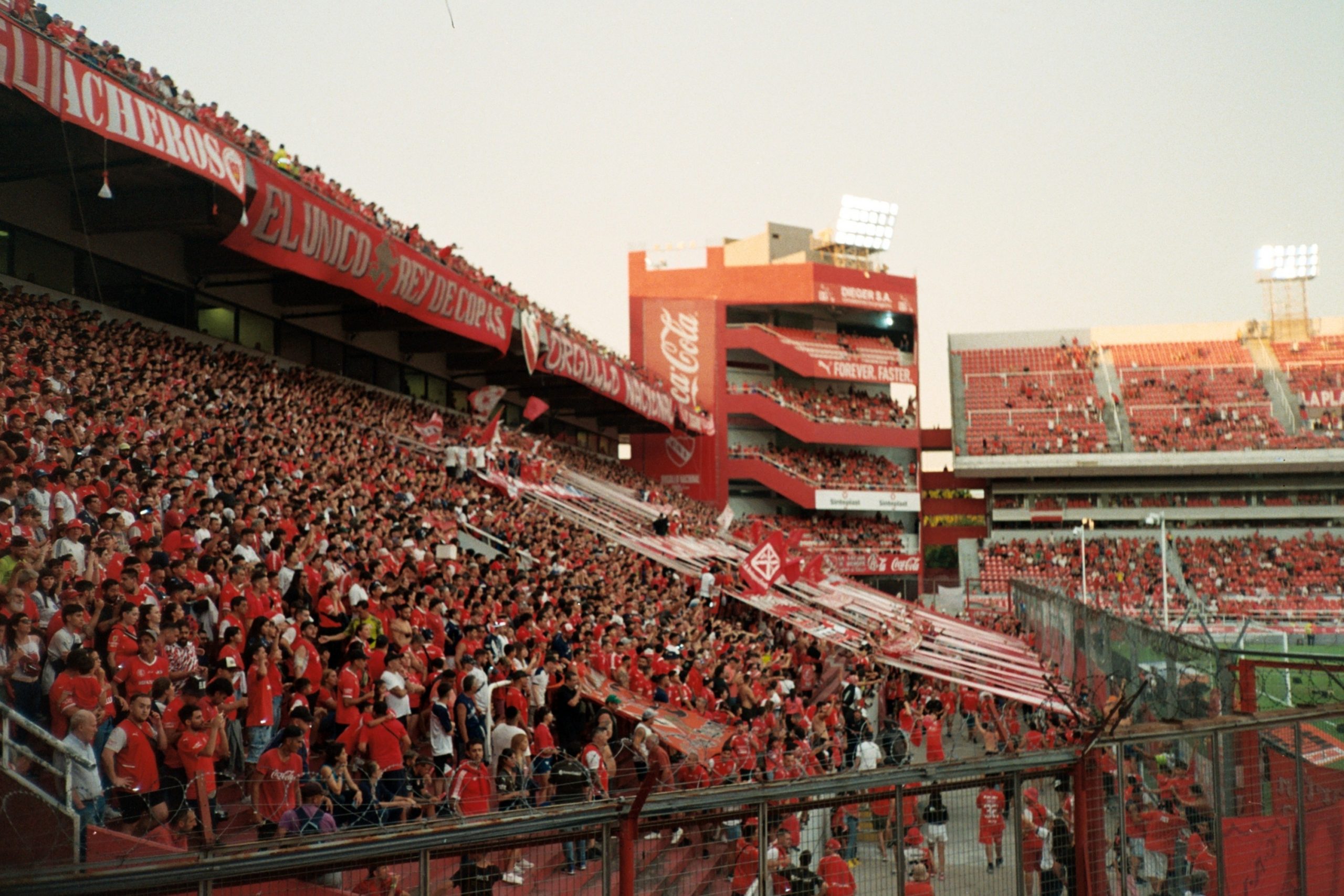
Independiente Chose Me
The late afternoon light spills across the streets of Avellaneda,
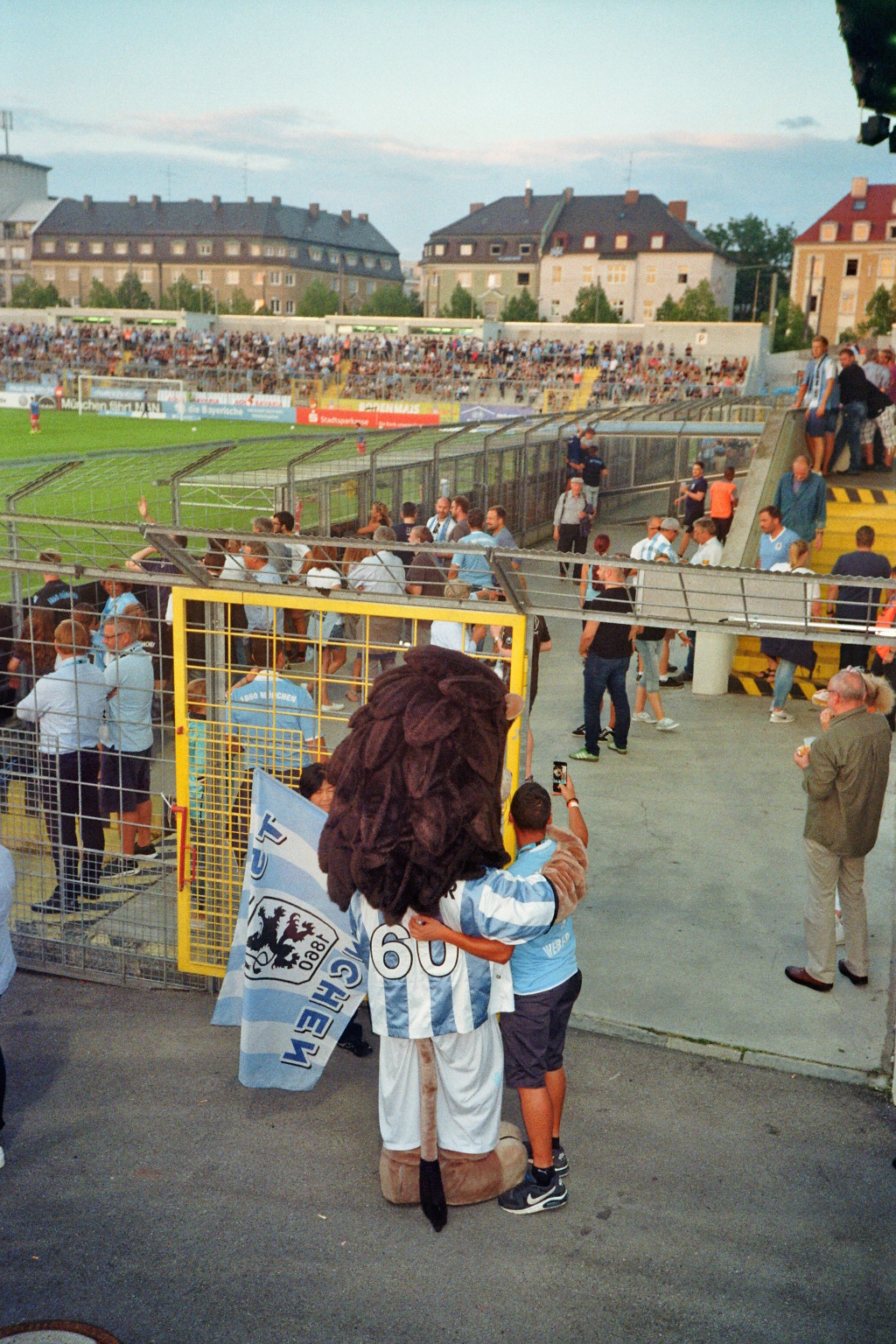

Photographer Jorge Barna reflects on the history, emotion, and unshakeable devotion that define his love for Manchester United.
For Manchester-based photographer Jorge Barna, Manchester United is a story, a legacy, and a lifelong source of identity. Born into an era of dominance, raised on the mythology of Old Trafford, and shaped by the values and emotion that surround the badge, Jorge carries United with him wherever he goes. In his own words, he explores the culture, history, heartbreak, resilience, and unforgettable moments that make Manchester United, in his opinion, the biggest club in the world.
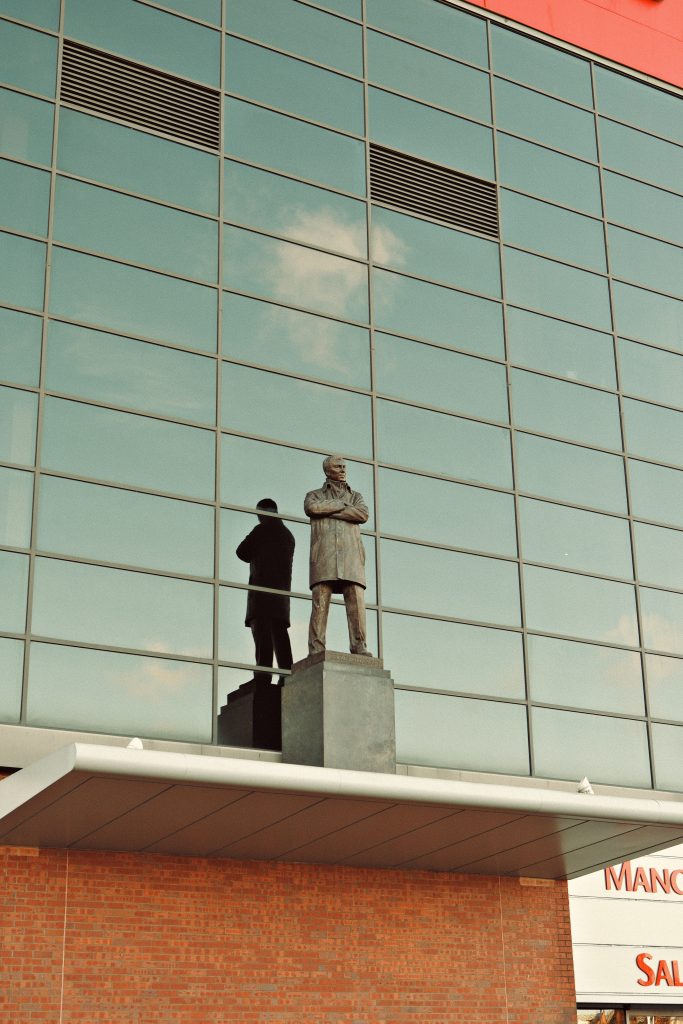
Words and Images by Jorge Barna
What makes Manchester United such a special, iconic club are its values and traditions — the belief in youth, the ability to produce a comeback, and the constant creation of superstars. Time and time again, this club has produced magical moments. That’s why they call Old Trafford the Theatre of Dreams. From the Busby Babes to the Munich Air Disaster and the rebuild that followed, United’s story is one of resilience, tragedy, and triumph. You can go anywhere in the world, and people will know Manchester United. It’s the biggest football club in the world — simple as that.

Growing Up United
My love for the club came from a young age. My brother made me a United fan. I was born the year United won the treble in 1999, but I would say my era was the team that came after that — the team that dominated the Premier League. We dominated the league during a period where all the rival teams were very strong as well, but the difference was Sir Alex Ferguson. We will never see a manager achieve what he did in England again. It was complete dominance.

The Magic of Old Trafford
Old Trafford is special because it’s where so many iconic moments have happened. From George Best to Cristiano Ronaldo, it’s where some of the greatest players of all time have performed. The stadium has not changed in my lifetime. Many clubs have brand new stadiums, but Old Trafford holds the memories of generations of fans and players. It’s timeless.

Belief in the Return
Do I think Manchester United will get back? One hundred per cent. Even during this era of the past 10 years, the obsession with United is still there. We say, “Hated, adored, but never ignored.” Sir Alex Ferguson is the greatest manager of all time — it was always going to take time to replace him, especially when the core of our team also retired. No matter where the club is in the table, everyone still speaks about Manchester United. Other fans are enjoying this difficult era for United, and it’s understandable — we dominated for 20 years.
Since the new owners have come in, it seems to be a new era. They are investing in players who fight for the badge and fit the system. It’s not about the big-name signing anymore. Even during one of our worst eras, we have still won trophies. The shirt is very heavy — some of the best players in the world have arrived and could not deliver. Manchester United is not a club that celebrates a top-four finish. We celebrate titles. We have seen it all — we have won the lot. You never write off Manchester United.
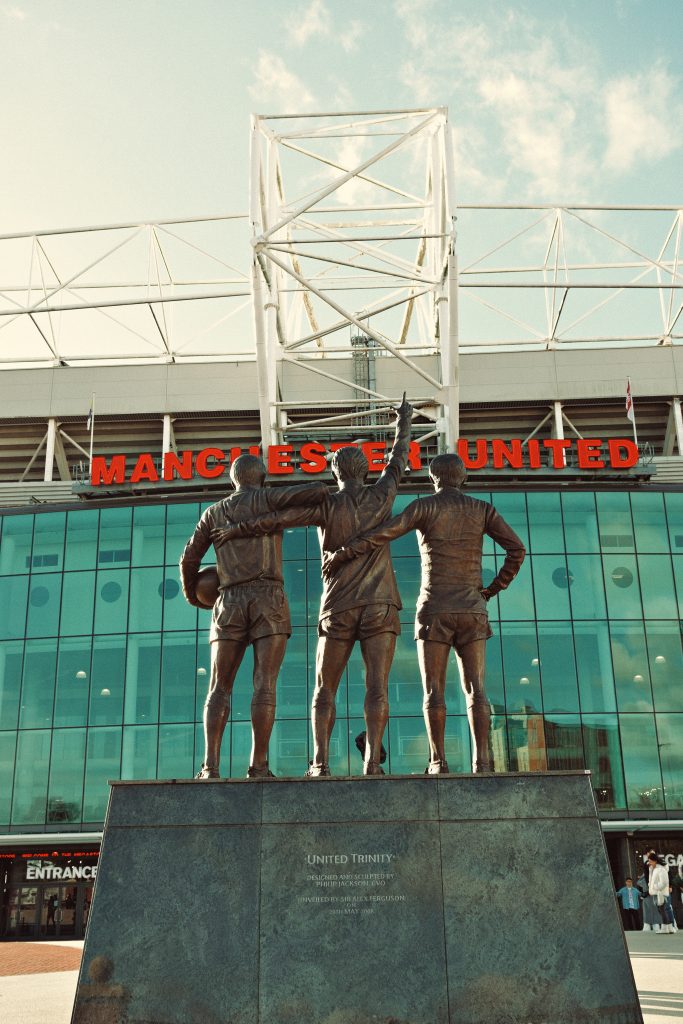
A Favourite Era
My favourite United moment? It’s hard to pick one. I have watched the club win everything. I would say the 2008 team was my favourite time — watching Ronaldo become the best player in the world, and watching Rooney, who I think is the best player to ever play for United. There will never be another player like him. Every player understood the values of playing for United — attacking football, where you could see the fear in the other teams. Three Champions League finals in four years and three league titles in a row. People often compare the ’99 team with ’08, but for me, this team was the best United side we ever had.
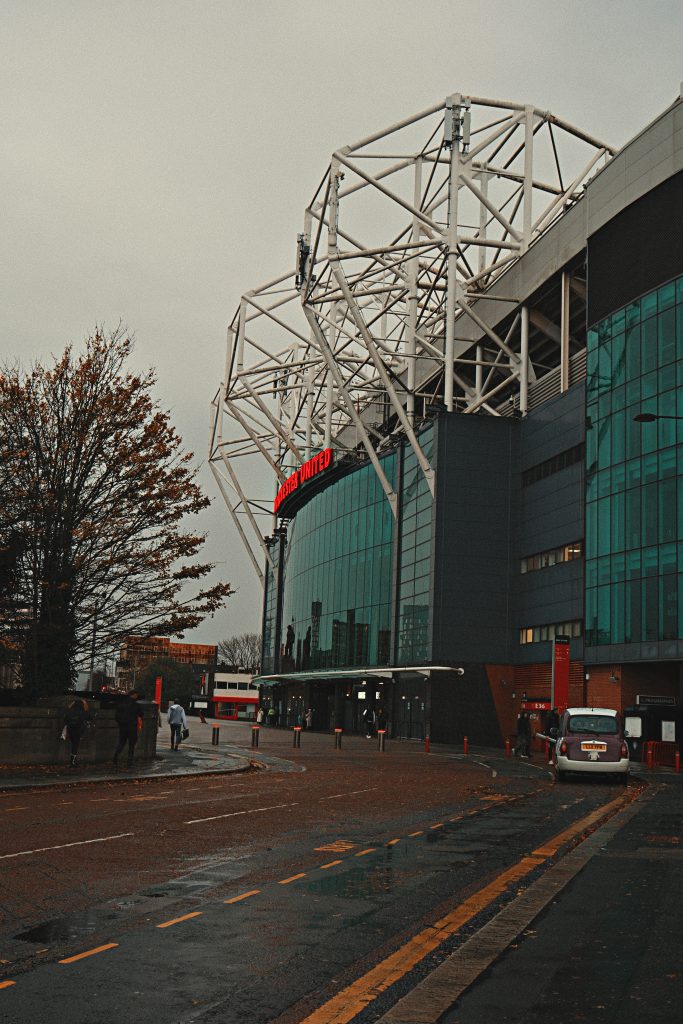
A Pilgrimage Worth Making
People should visit Old Trafford because it’s one of the most iconic stadiums in the world. A lot of the traditional old stadiums have gone now, but Old Trafford is still standing. It’s a place built on history, passion, and unforgettable moments.
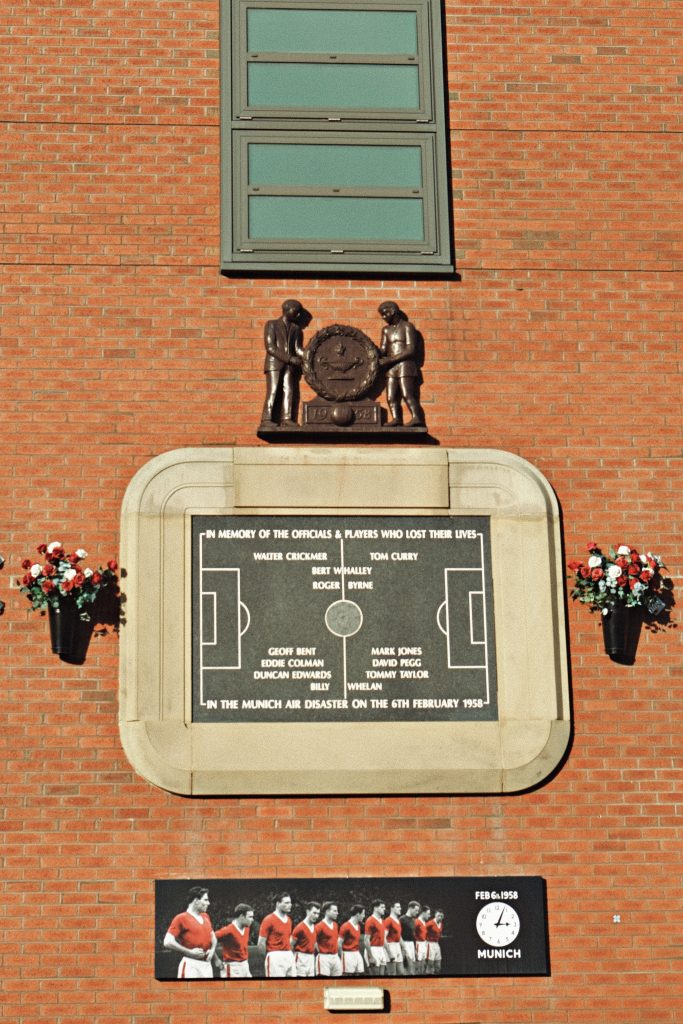
All our thanks to Jorge Barna
You can follow Jorge on social media here.

The late afternoon light spills across the streets of Avellaneda, washing the red-and-white shopfronts in a warm glow. We’re sitting at a small café near Avenida Mitre, the kind of place where conversation hums and football talk never really stops. Across the table, photographer Lucio Cosenza stirs his coffee and smiles — the kind of smile that hints at stories tied to family, memory, and a lifelong love of Club Atlético Independiente.
“From the day I was born,” he says, almost matter-of-factly. “My membership card has the same date as my birth certificate. My dad is a die-hard fan too, and he passed it all on to me. I don’t have a single memory in my life without Independiente being part of it somehow.”
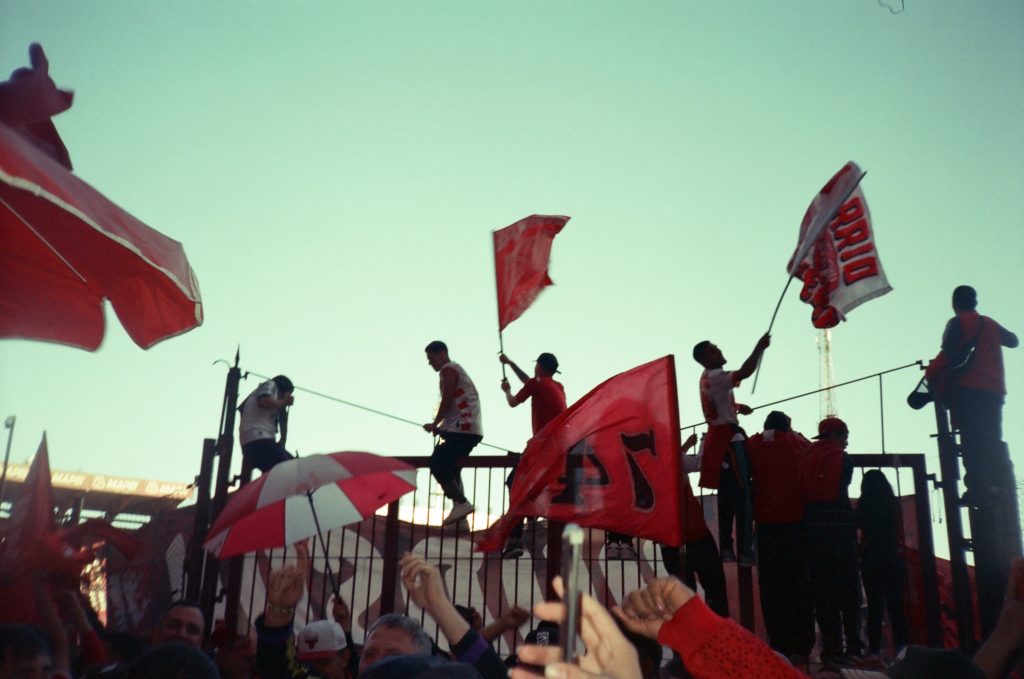
“Independiente isn’t just a club,” he says, his tone softening. “It’s something you inherit. A feeling passed down quietly from generation to generation. Its history is massive, full of glory, but what makes it truly unique is what it sparks in people. There’s something sacred in those colours, something that stays with you for life. You don’t choose to support Independiente. Independiente chooses you.”
It’s hard not to get swept up in his devotion. The way he speaks about his club feels almost spiritual, like a faith that you carry with you in everyday life. When matchday arrives, that faith becomes electric. “A home match is felt from the moment you wake up, heart racing, nerves building,” he says. “There’s something magical about the stadium, like the whole neighbourhood breathes football that day.”
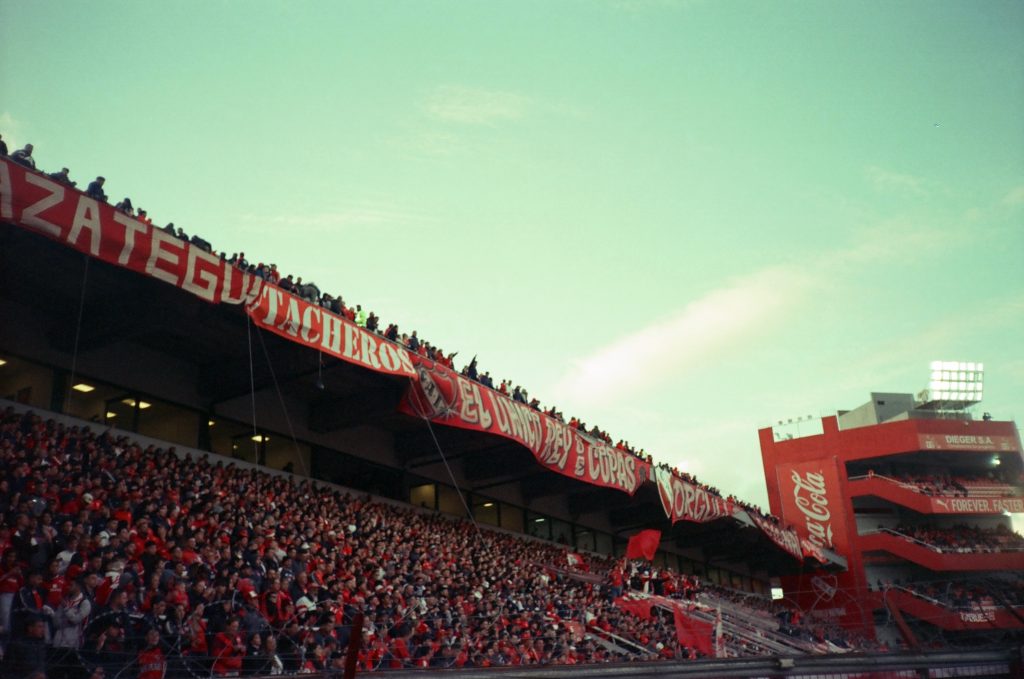
And then there’s the derby, Independiente versus Racing Club, one of Argentina’s fiercest rivalries. “The derby against Racing… that’s not just a game,” Lucio says, eyes lighting up. “It’s pride, tension, passion — all mixed together. Everything else fades away. All that matters is Independiente. All that matters is winning.”
His favourite memories, though, aren’t necessarily about results or trophies. “My favourite memories are walking to the stadium with my grandad and my dad,” he recalls. “Those walks were more than just the journey to a match — they were a ritual, a story passed down through generations. Sometimes I can’t even remember the final score, but I’ll never forget those walks together.”
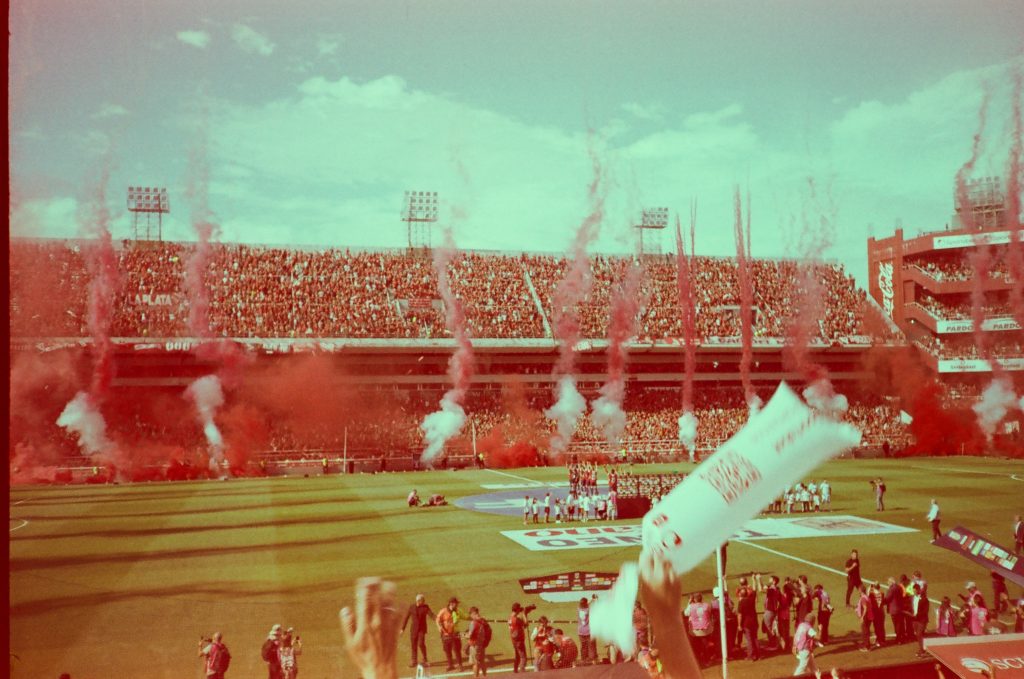
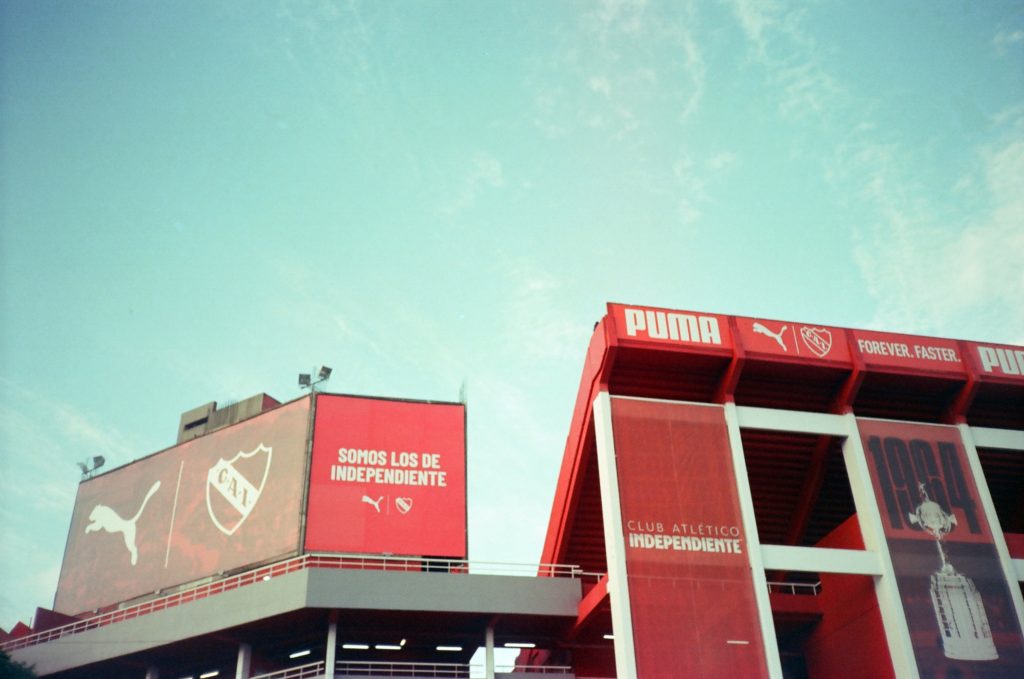

When the conversation turns to players, Lucio doesn’t hesitate. “If you say Independiente, you say Bochini,” he says with conviction. “You can’t think about the club without thinking of him. He played his whole career in our shirt. He won everything, but beyond the trophies, what he did with the ball was magic. He had that kind of class that made time stand still. It’s a love story between a player and his club — one that lasts a lifetime.”
As the café begins to fill with the evening crowd, the character of Buenos Aires becomes more apparent: its taxis, its laughter, and its ever-present talk of football surround us. Lucio looks out toward the street, where kids kick a battered ball against a wall painted red and white. “Football in Buenos Aires isn’t something you explain,” he says. “It’s something you live. People shape their lives around their club. Birthdays, weddings, plans — nothing matters more. Matchday is sacred. It’s pure passion. An emotional engine that brings people together, or tears them apart, but it’s always there.”
In Buenos Aires, football is like a heartbeat. And for Lucio Cosenza, that heartbeat will forever belong to Independiente.
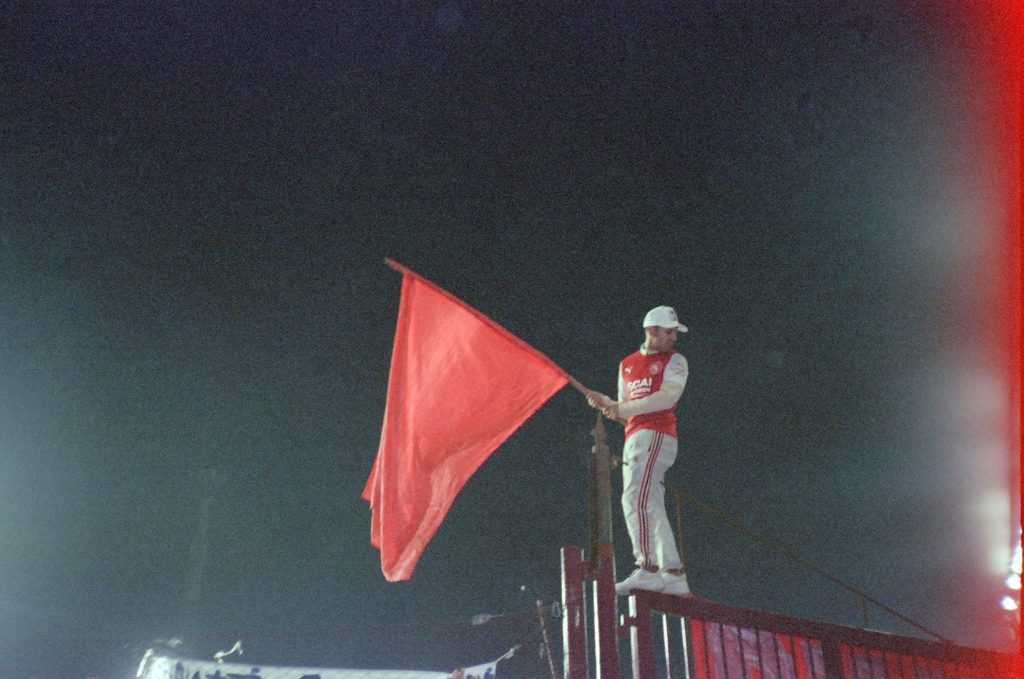
All images and all our thanks to Lucio Consenza

“In the early ’90s, my dad took me to the Grünwalder Stadion for the first time,” Marco Watson says. “The atmosphere and energy of the compact and packed stadium really impressed me as a young boy. The fact that the stadium is right in the middle of the city also made the club especially interesting to me.”
It was there, in Giesing, that his life as a supporter began. The ground is not grand, not modern, not even especially comfortable. But its presence in the heart of the neighbourhood makes it inseparable from the everyday lives of those who live around it. For Watson, it became a place that would come to define not only his weekends but also his friendships and identity.
“My fascination with 1860 has never stopped since,” he says. “Over the years, not only have many friendships been formed, but also a true love, and everything to do with the club has become a kind of life’s purpose for me.”
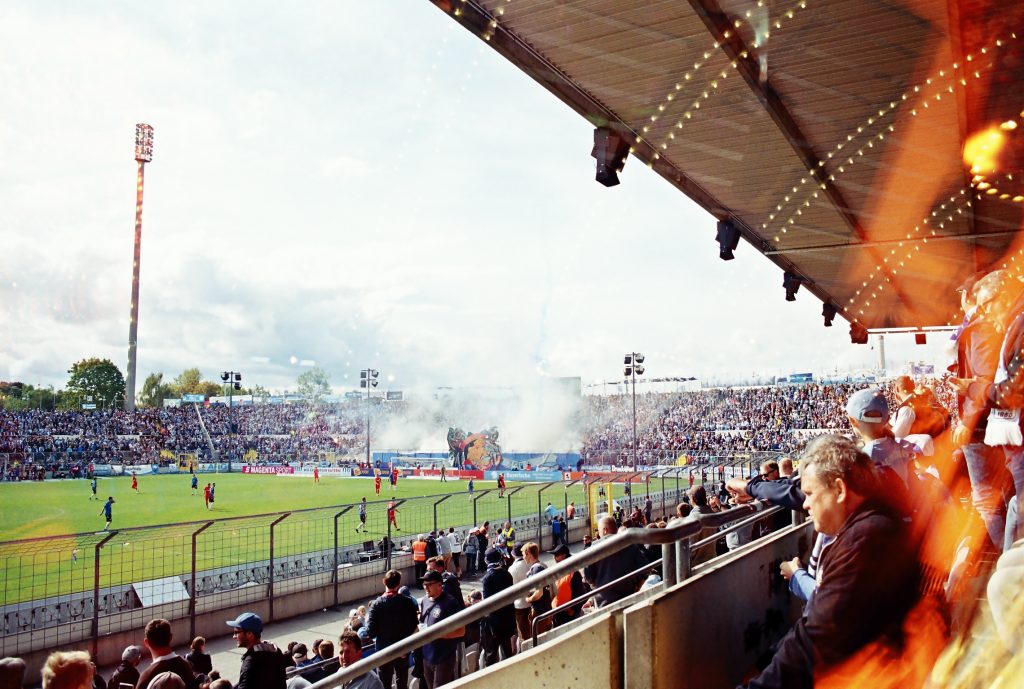
A tradition that endures
He is not alone. 1860 Munich, known simply as die Löwen—the Lions—still command devotion across the city, despite decades of struggle and decline. “What’s special about TSV 1860 Munich is the incredible tradition in this club,” Watson explains. “The team was not only a founding member of the Bundesliga but also became German champion in 1966.”
But tradition is only part of the story. “On top of that, 1860 has a massive and incredibly dedicated fanbase. The club has basically gone through every imaginable success and failure for decades, yet it still has about 27,000 members. Every home game at the Grünwalder Stadion has been completely sold out for years, even though we only play in the 3. Liga.”
This is the paradox of 1860: the higher peaks belong to history, but the loyalty belongs to the present.
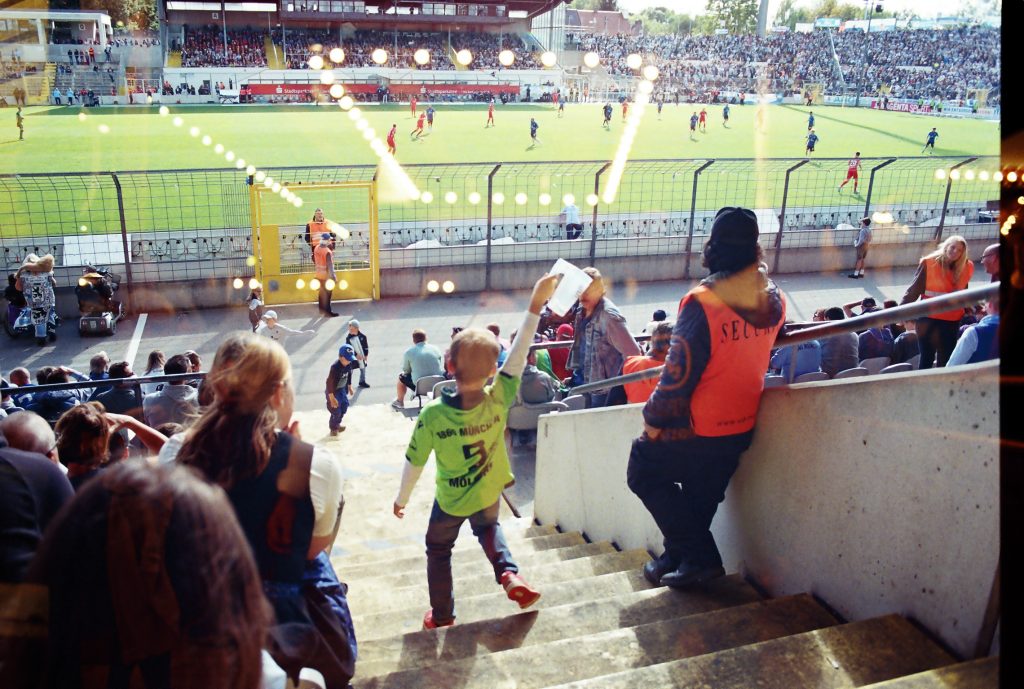
A stadium in the city
The connection is rooted in geography as much as memory. “The Grünwalder Stadion is located right in the Giesing district, making it super convenient to get to by bike, on foot, or with public transport,” Watson says. “There are lots of great places to eat and grab a drink around the stadium. When the Lions have a home game, the entire neighbourhood buzzes. And no matter if we win or lose, there’s always a celebration somewhere afterwards—it’s just about life and community.”
Here, matchdays are not contained within ninety minutes. They spill into the cafés, the beer gardens, the streets. To speak about 1860 Munich is also to speak about Giesing itself.
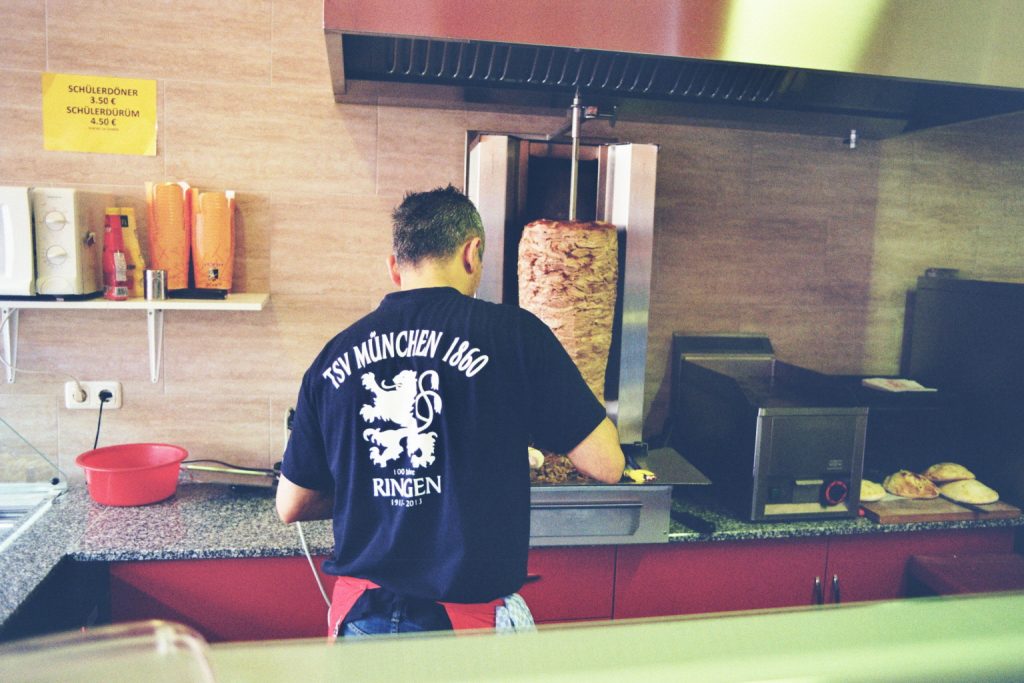
Days to remember
When Watson reflects on what stands out from his years as a supporter, he struggles to narrow it down. “Since I have so many great memories with the club, it’s hard for me to pick just one,” he admits. But he does recall the derbies. “All the derbies against the hated red neighbours from across the street. Back in the Bundesliga or a match between our amateur teams—you could always feel a special, electric atmosphere in the city for days beforehand.”
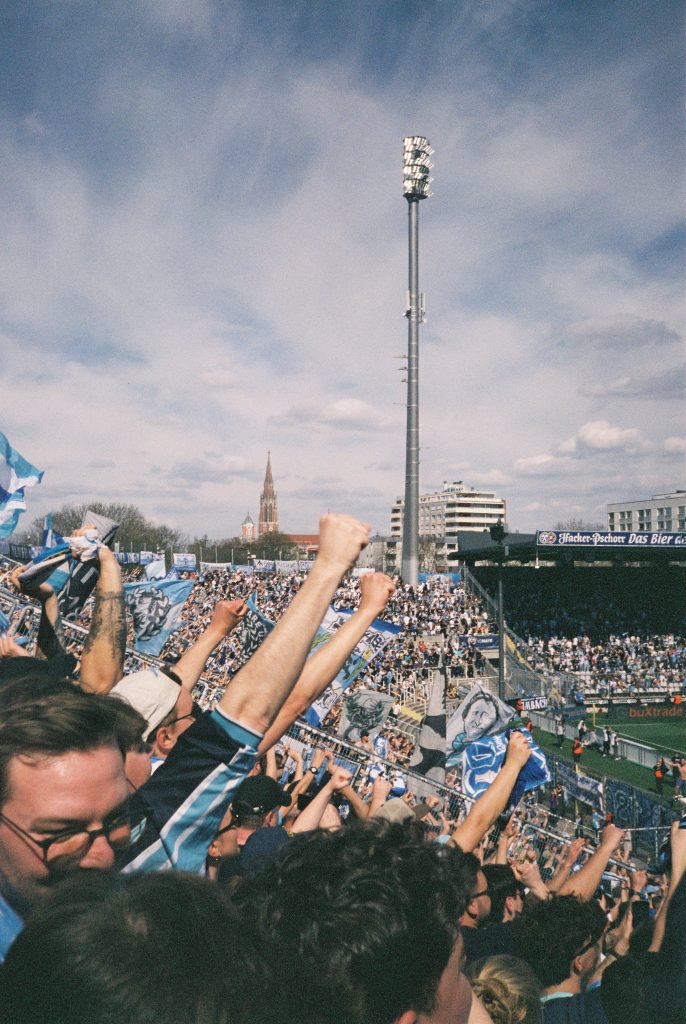
There was also the 2018 promotion, a moment that seemed to defy the decline of previous years. “Another highlight of my fan career was definitely the promotion from the Regionalliga to the 3. Liga in 2018. The whole season was like a single dream with many special away games in small villages somewhere in Bavaria. At the end, we had two incredibly exciting promotion playoff games against Saarbrücken, which were thrilling right up to the last minute.”
It was then that he experienced something he had imagined since childhood. “For the first time in my life, I got to run onto the sacred pitch at the Grünwalder Stadion, and after that, the entire Giesing district was literally ‘drunk dry’!”
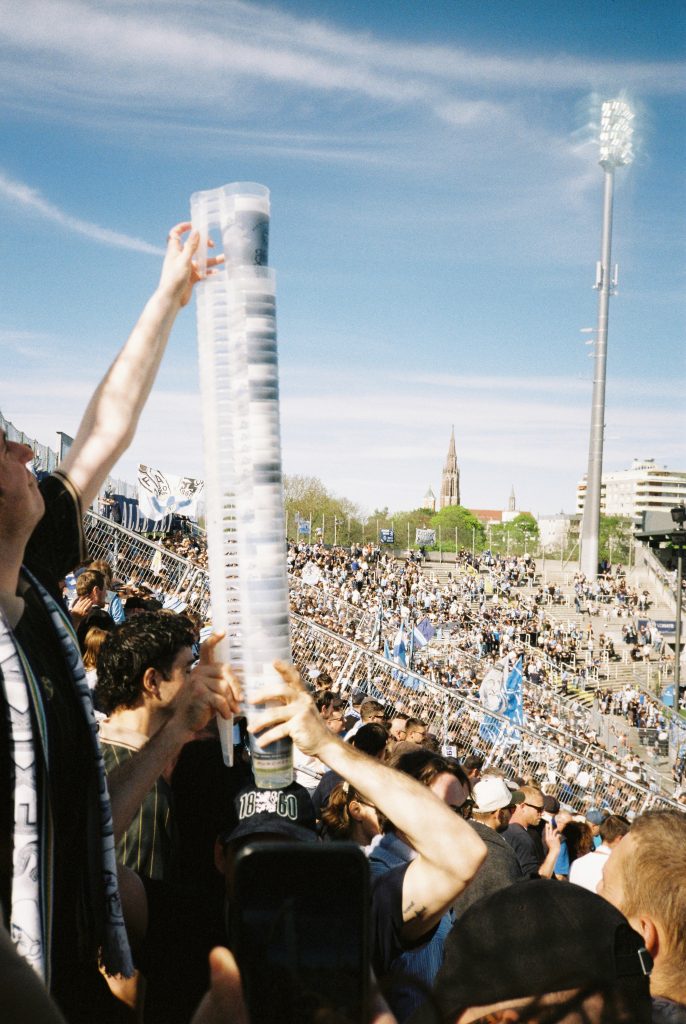
A life’s purpose
Supporting 1860 Munich means living with contradiction: the pull of history against the push of the present, the joy of belonging against the disappointment of results. Yet for Watson, there is never doubt. “My fascination with 1860 has never stopped,” he says again, as if reminding himself. “Everything to do with the club has become a kind of life’s purpose for me.”
In Giesing, the stadium remains full. The streets remain alive. And for fans like Watson, 1860 Munich remains the centre of everything.
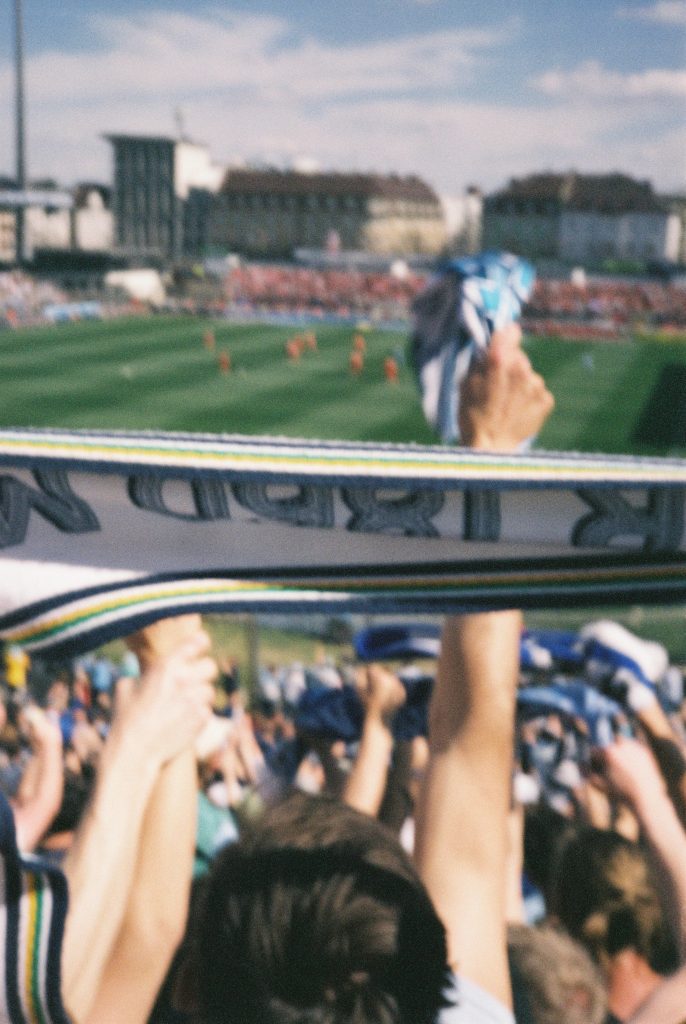

In the heart of Barcelona, steps away from Passeig de Gràcia and the iconic Casa Milà, Sir Victor Hotel offers a distinctive experience that blends contemporary design, cultural connection, and world-class hospitality.
As part of the Sircle Collection, Sir Victor reflects a commitment to integrating art, community, and thoughtful experiences, making it a standout destination for travellers and locals alike.
Van Martin, Marketing Manager for Sir Hotels in Spain, shares insights into what makes Sir Victor special. “Our goal is to create a warm, engaging atmosphere where every experience is memorable and deeply connected to Barcelona’s vibrant culture,” she explains.
With 91 beautifully designed rooms, a luxurious spa, a rooftop pool offering Mediterranean-inspired dining, and The Cover, a private members’ club, Sir Victor delivers more than a stay—it offers a gateway to the city’s energy and spirit.
Dining at Sir Victor is equally captivating. MR PORTER, the hotel’s chic steakhouse, combines refined dining with a lively lounge vibe, offering everything from rare cuts of steak to vegetarian dishes paired with inventive cocktails.
Meanwhile, The Rooftop provides breathtaking views of the city, complemented by fresh, locally inspired cuisine. “Whether it’s unwinding with cocktails or enjoying Tapas, Sir Victor captures the essence of Barcelona,” says Van.
Beyond its amenities, Sir Victor stands out by fostering connections to the city’s culture through curated events, art collections, and a commitment to sustainability. Van observes, “Travelers today seek real, local experiences and personalized stays. We respond by offering authentic interactions and wellness-focused options that resonate with guests on a deeper level.”
With its unbeatable location and curated Sir City Guide, Sir Victor ensures guests are well-equipped to explore the best of Barcelona, from iconic landmarks to hidden gems. Whether visiting for the vibrant local culture or a tranquil retreat, Sir Victor promises an experience that feels both luxurious and uniquely tied to the city.
Guests can expect a blend of luxury, culture, and contemporary design that reflects the values of the Sircle Collection. The rooms are bright and inviting, with some featuring balconies that offer stunning views of the city.
You can also relax at The Rooftop pool, rejuvenate in the spa, or enjoy delicious meals at the lively restaurant. Our goal is to create a warm, engaging atmosphere where every experience is memorable and deeply connected to Barcelona’s vibrant culture.
The Atlantic Dispatch sat down with Van Martin to learn more about what makes Sir Victor Hotel in Barcelona so unique, its dynamic cuisine, the changing trends in the hospitality industry, and why it should be on your list of places to stay in 2025.
“People are looking for real, local experiences more than ever. They want to connect with the place they’re visiting in meaningful ways and have more personalised stays.“
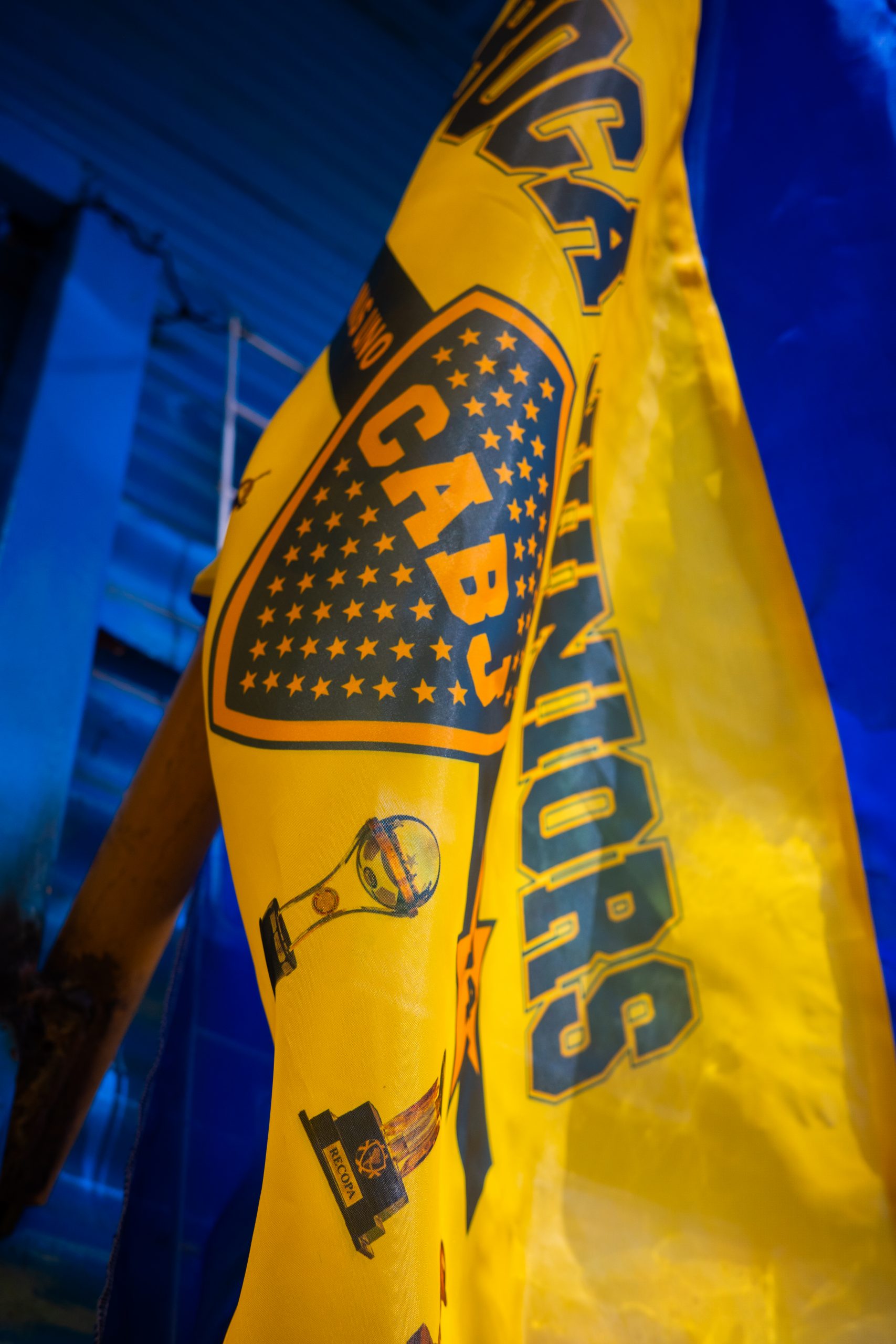
Born and raised in the picturesque seaside town of San Felice Circeo, Giulia Puspi’s story is one of passion, family, and big dreams. Although she still calls her small hometown home, she often feels its limits as she dreams of pursuing grander aspirations. Balancing work, family, and her love of football, Giulia has carved out a unique space for herself as a digital creator and Juventus supporter.
In this exclusive interview, Giulia shares how her father’s unwavering love for Juventus ignited her own lifelong passion for “la Vecchia Signora.” From cherished memories of Juventus’ nine years of dominance to her deep admiration for Alessandro Del Piero—whom she reverently describes as “not just a Juventus player, but Juventus itself”—her devotion to the club runs deep.
Giulia also opens up about her love for vintage fashion, particularly the iconic 2000 Juventus jersey, and how she incorporates Juve-inspired pieces into her casual, everyday style. For her, attending matches at the Juventus Stadium is more than just a sporting event; it’s a profound experience of belonging. She describes the joy of singing the anthem with fellow fans and the sense of home the stadium provides.
A passionate advocate for sharing her love of football with others, Giulia reveals how she has been connecting with fans for the past year, finding fulfillment in the camaraderie and support within the Juventus community. Outside of football, her days are filled with family, travel, and time spent at the gym—simple joys that ground her.
As a true optimist, Giulia reflects on the current challenges facing Juventus and her hopes for brighter days ahead. She remains steadfast in her belief in the team and its leadership, saying, “I just hope this darkness leads us to a brilliant light.”
Join us as we delve into Giulia’s journey, her unwavering support for Juventus, and her vision for the future, both as a digital creator and a devoted fan.
I was born and raised in a small seaside town, San Felice Circeo, where I still live today. However, I feel that this town is too small to hold the big dreams I have. Let’s just say I feel a bit confined. My life here revolves around work and family.
My love for football—and, by extension, for Juventus—comes from my father. A die-hard Juve fan and passionate supporter of “la Vecchia Signora,” he passed on all his enthusiasm to me from a young age.
My favorite memories are from the nine years of dominance Juventus enjoyed. I miss those times. I miss winning, the hunger Juventus had, and especially the fear we inspired in opposing teams whenever they faced the Bianconeri.
It’s never something I take for granted, and I love shouting it to the world: Alessandro Del Piero, to me, isn’t just a Juventus player—he is Juventus.
I love vintage, so my favorite jersey is from 2000. Typically, I like dressing casually, always wearing something Juve-related. I often pair it with a fuchsia cap and a scarf.
The stadium experience is truly beautiful. Beyond the stadium’s undeniable beauty, you genuinely feel at home when you step inside. My favorite moment is, without a doubt, when we all sing the anthem together.
I’ve been sharing my passion for just over a year now, and I love transmitting it to others—it’s a passion that isn’t mine alone. I enjoy the connection with other fans and especially appreciate their support.
I also love traveling and spending time with my nieces and nephews. A typical day for me, when I’m not at the stadium, is filled with work, family, and the gym.
I was very happy when he arrived, and I truly believed he could do well for Juve. To this day, I still can’t give a definitive opinion. I just hope this darkness leads us to a brilliant light. I still believe in the coach and hope he can find his balance here in Turin.
JU
In Focus
Words and Images Mike Carranza
Heart of this town, only great love. Yellow like the sun. Red like my heart.
Being pitchside for a Serie A match at the Stadio Olimpico felt surreal. I had spent the week working on pitches across Roma, moving from one field to another, yet seeing very little of the city itself. Rome, in many ways, had remained just out of reach.
The match between Roma and Napoli marked my third visit to the Stadio Olimpico in just five days. The first came as a tourist, led through the cavernous bowl by a guide, the stands empty as ground staff meticulously prepared the pitch. The second was a Europa League night against Midtjylland, where beers were shared and an espresso followed — as tradition demands.
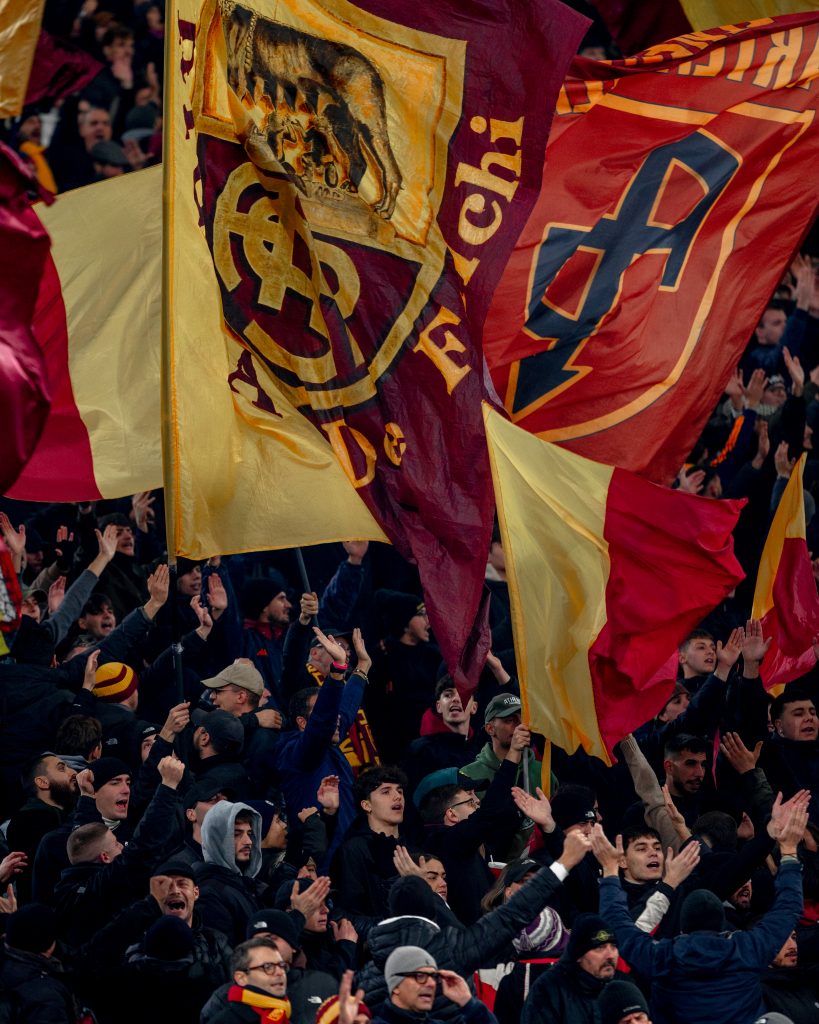
It was then that I first heard it.
“Roma Roma Roma.”
The chant poured from the stands and reverberated through the concrete, echoing long after the final note. The words struck instantly: Heart of this town, only great love. Yellow like the sun. Red like my heart. It felt less like a song and more like a declaration.
My relationship with football has always been layered — built on love, pain, struggle, and fleeting moments of triumph. It is the longest relationship of my life, one that began when I was three years old. Football became a constant: a place of comfort through heartbreak and failure, success and sadness, joy and disappointment. Long after childhood dreams faded, football remained.
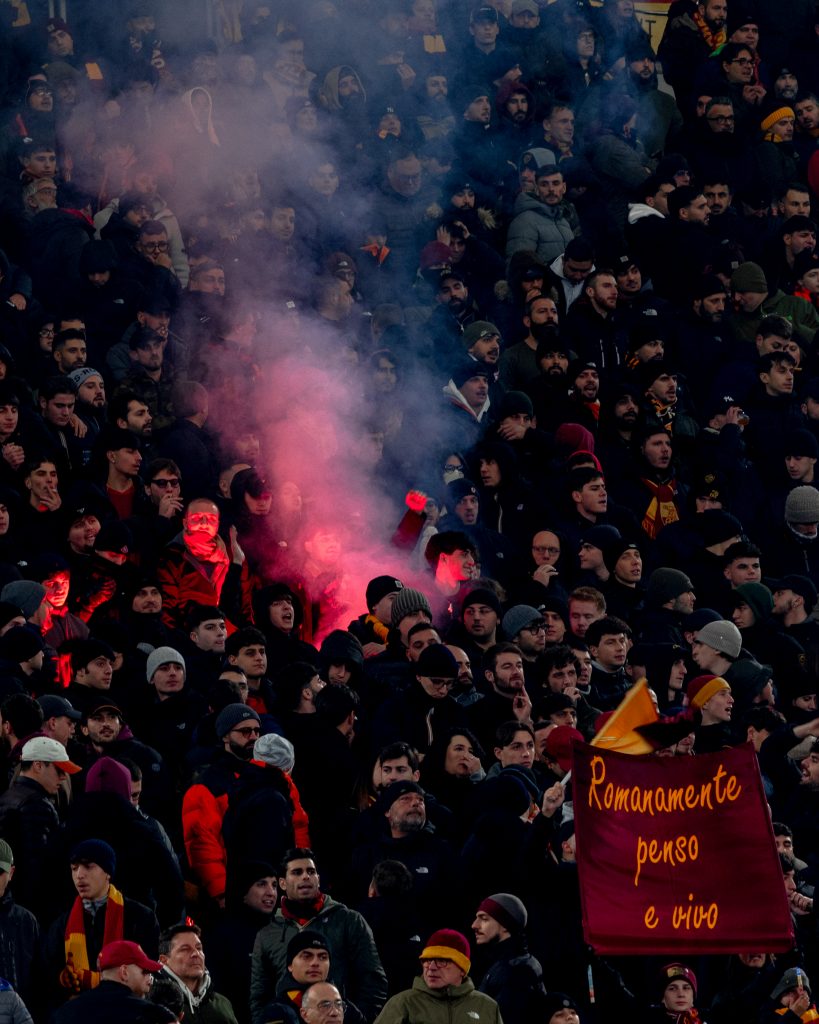
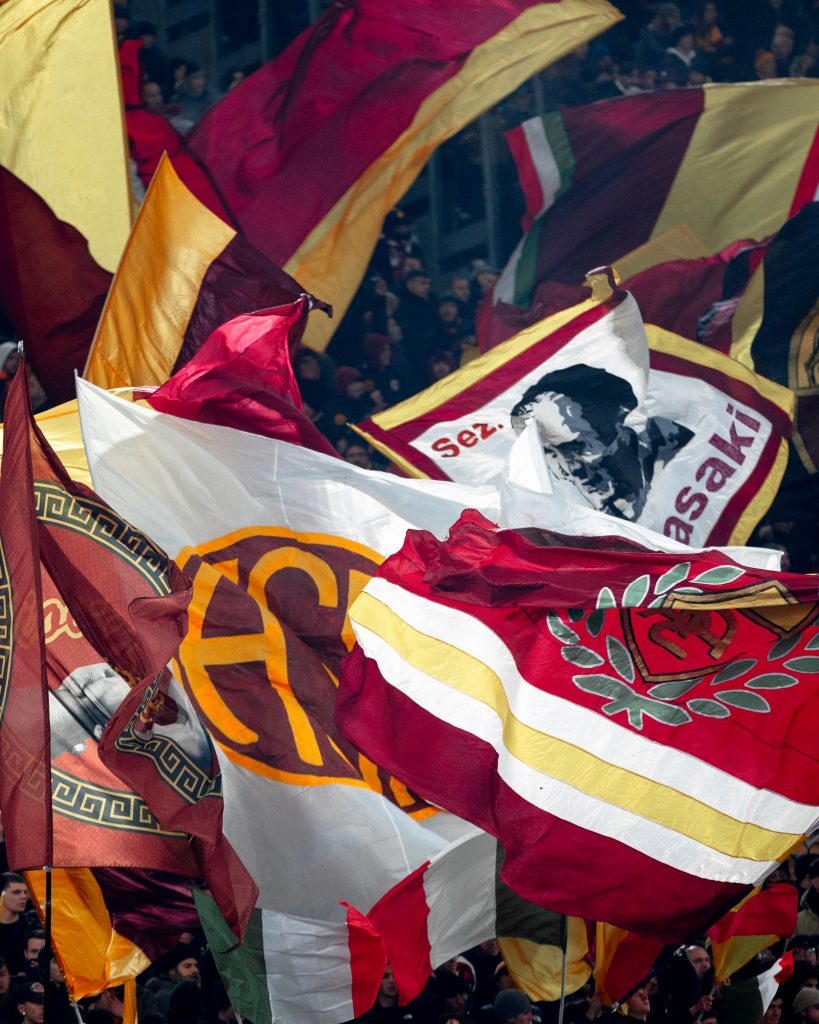
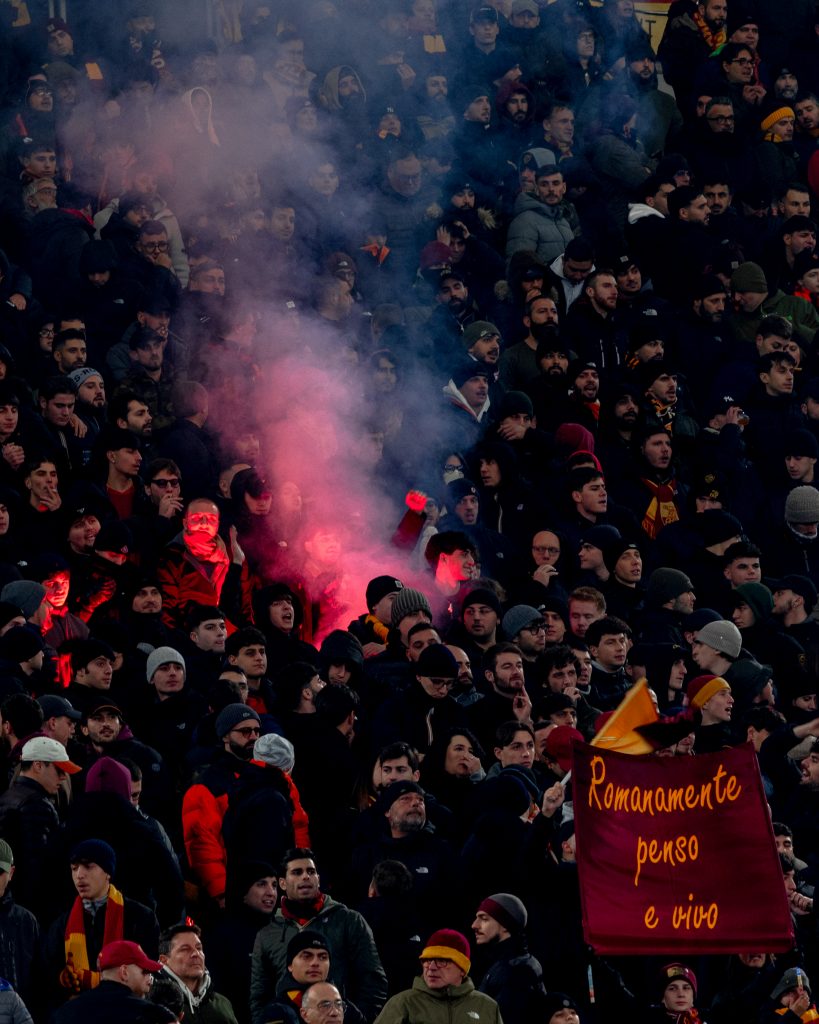
During my time in Rome, bad news arrived from home. The kind that settles quietly but heavily. Yet even then, I knew there was something I needed to fulfil — something owed to that three-year-old boy who dreamed only of football.
I arrived at the Stadio Olimpico for Napoli v Roma exhausted, overworked, and emotionally drained. But the moment I stepped onto the pitch, it returned.
“Roma, Roma, Roma — heart of this town, only great love.”
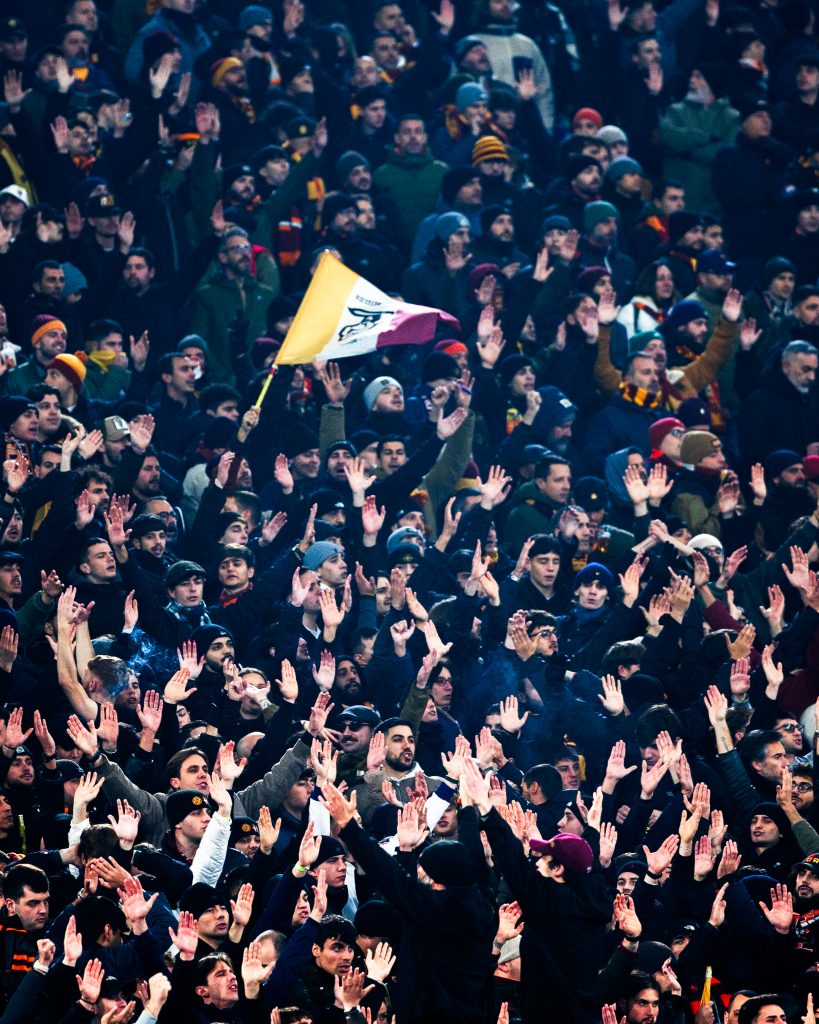
In that instant, the weight lifted. What remained was joy — pure, grounding, unmistakable. I felt at home. Not alone, but surrounded by something familiar and eternal. Football, in the Eternal City. My feet on the grass. Everything exactly where it was meant to be.
The day before my flight back to the United States, standing alone on my balcony, I realised something was ending — and something else was beginning. A closing chapter, followed by an uncertain next step. There was no time for fear or anxiety. No room for doubt.
The next day, I would be back on a football pitch. And there, as it has always been, everything would be okay.

Words and Images Mike Carranza

Latest
All words and images by Pedro J Caffa
“In Murphy, football is something more: it’s identity.“
Entering the town, a sign makes it unmistakably clear: you’re crossing the gateway to the heart of football. More than fifteen professional footballers were born in Murphy. It’s no myth, no exaggeration. It might be ordinary somewhere else, sure, but here there’s a twist: the town has fewer than five thousand people. And in this province that gave the world Messi and Di María, the “Cradle of the Santafesino Footballer” —by Law 14.172— is, fittingly, Murphy.
Murphy, named after an Irish landowner in the middle of the Argentine countryside, has only one football club. Just one, for everyone. Centro Recreativo Unión y Cultura is a pitch, a meeting point, and an inheritance. Mauricio Pochettino, Paulo Gazzaniga, and a long list of players came from here, carrying the town’s name farther than any map ever could.

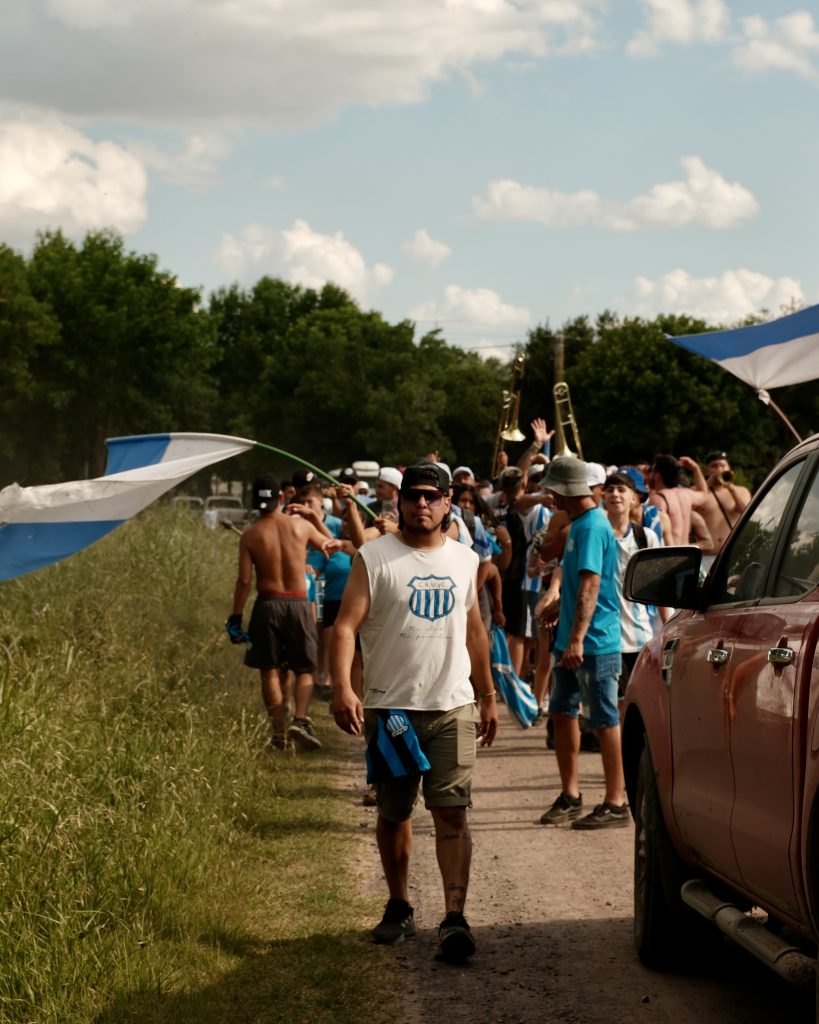
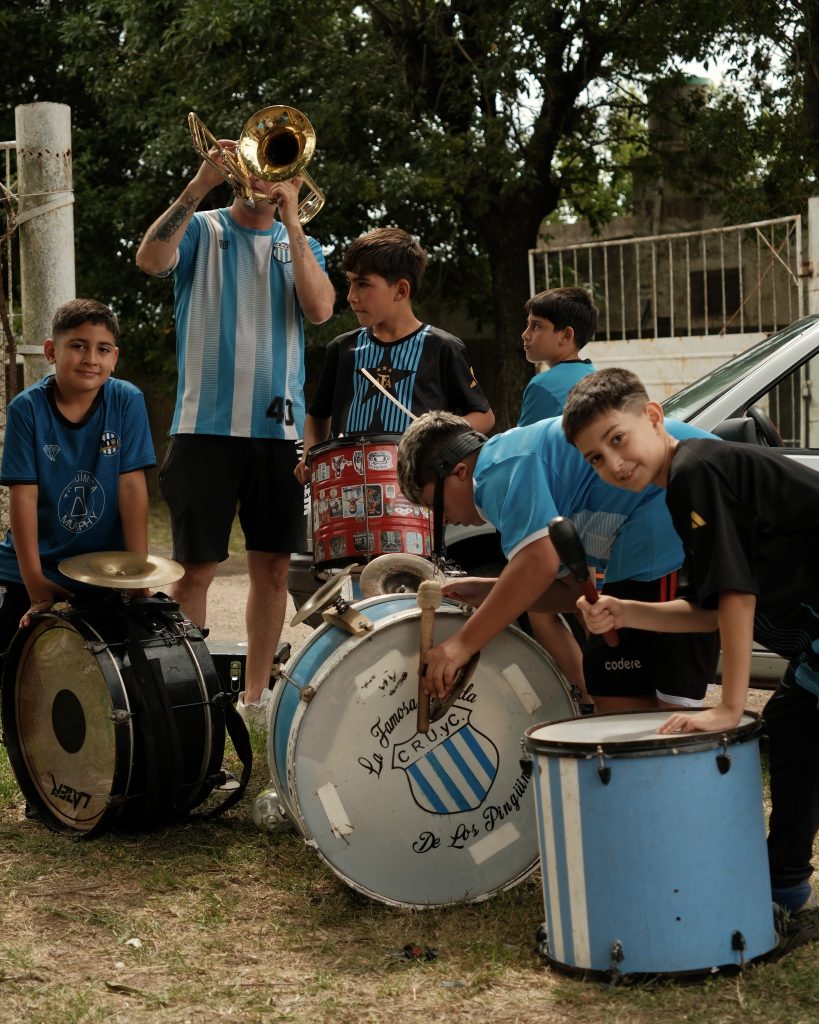
The year 2025 was special. The Centenary, and a perfect storm: a new leadership committee led by local idols; a squad and coaching staff made up almost entirely by homegrown players; and a fan base that doesn’t do things halfway, with “Los Pingüinos” leading the noise. All of them pushing together on a path that took Unión y Cultura back to the regional Liga Venadense final after eighteen long years.
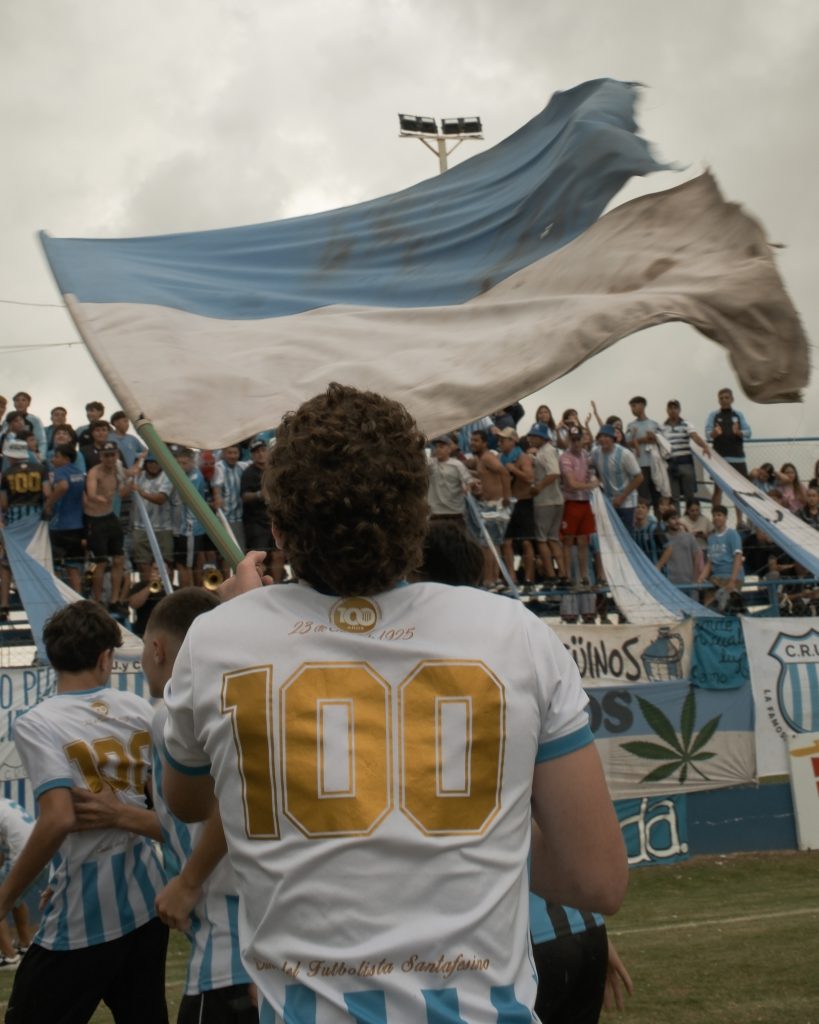

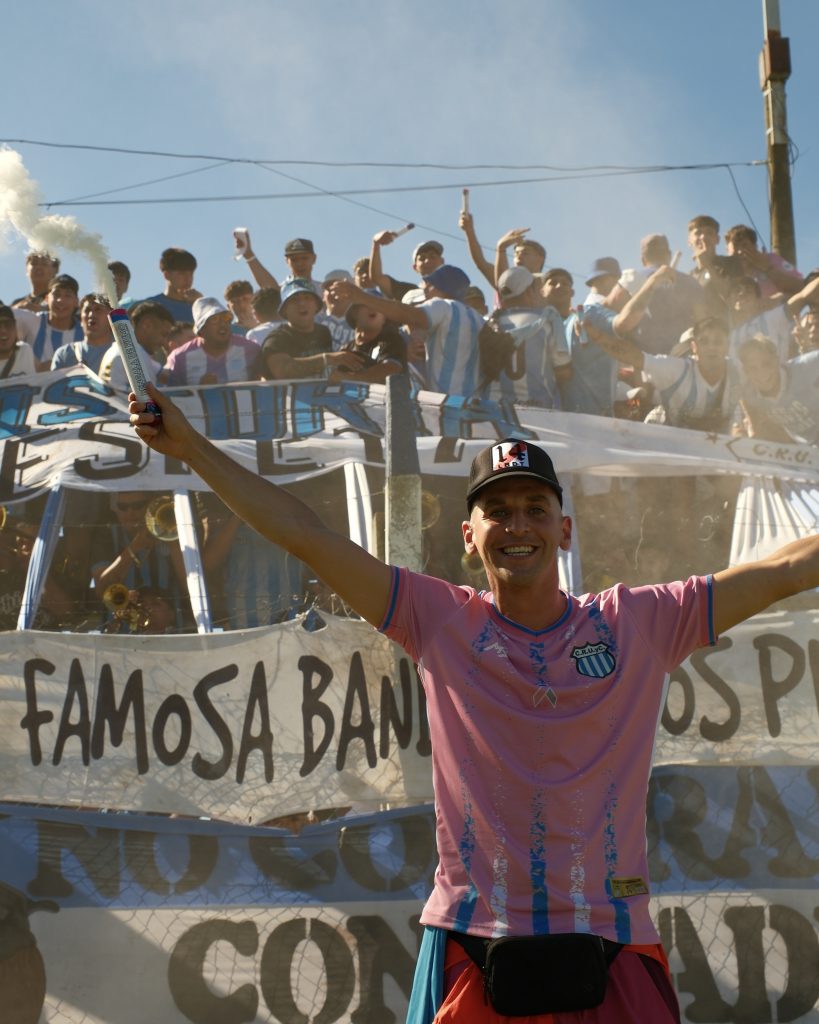

It wasn’t enough to claim the title, but that’s another story. Sometimes epic feats have nothing to do with trophies, and sometimes trophies don’t look like cups. Is there anything more powerful than watching an entire town lift a club that is its people… or a town that becomes its club?
In Argentina, football is lived in a special way, we already know that. But in Murphy, football is something more: it’s identity. To say “Murphy” is to say “Unión y Cultura.” And it’s to feel the heart swell with hope, once again.
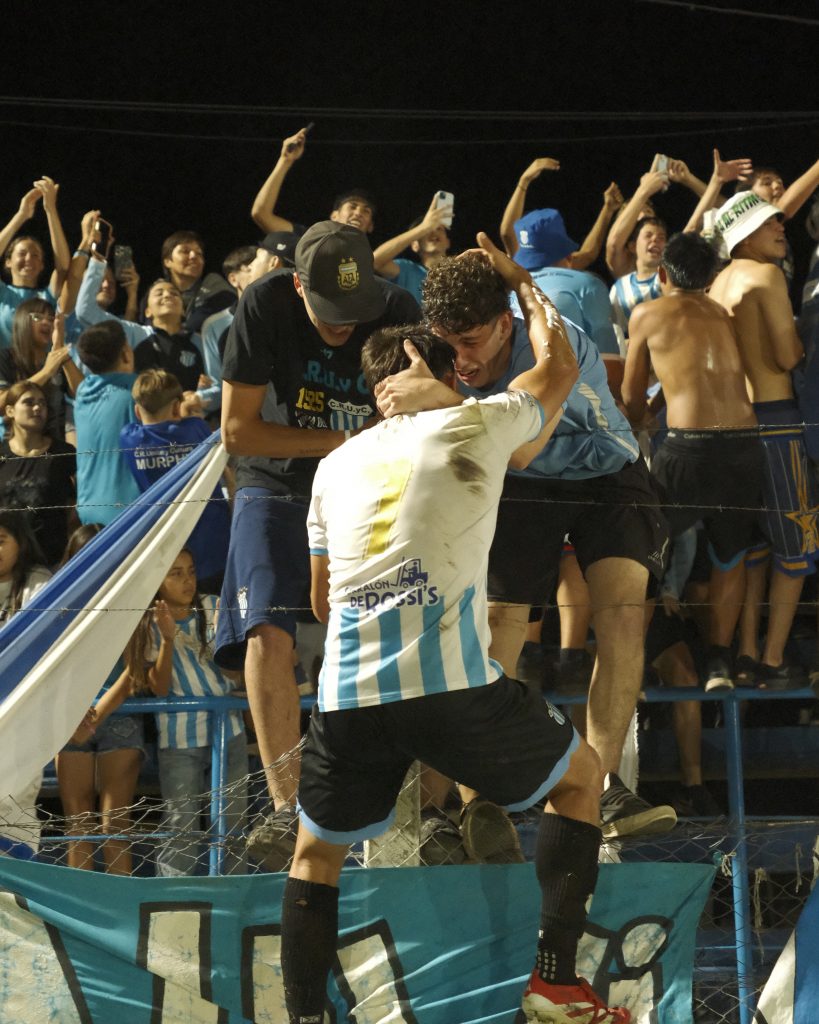
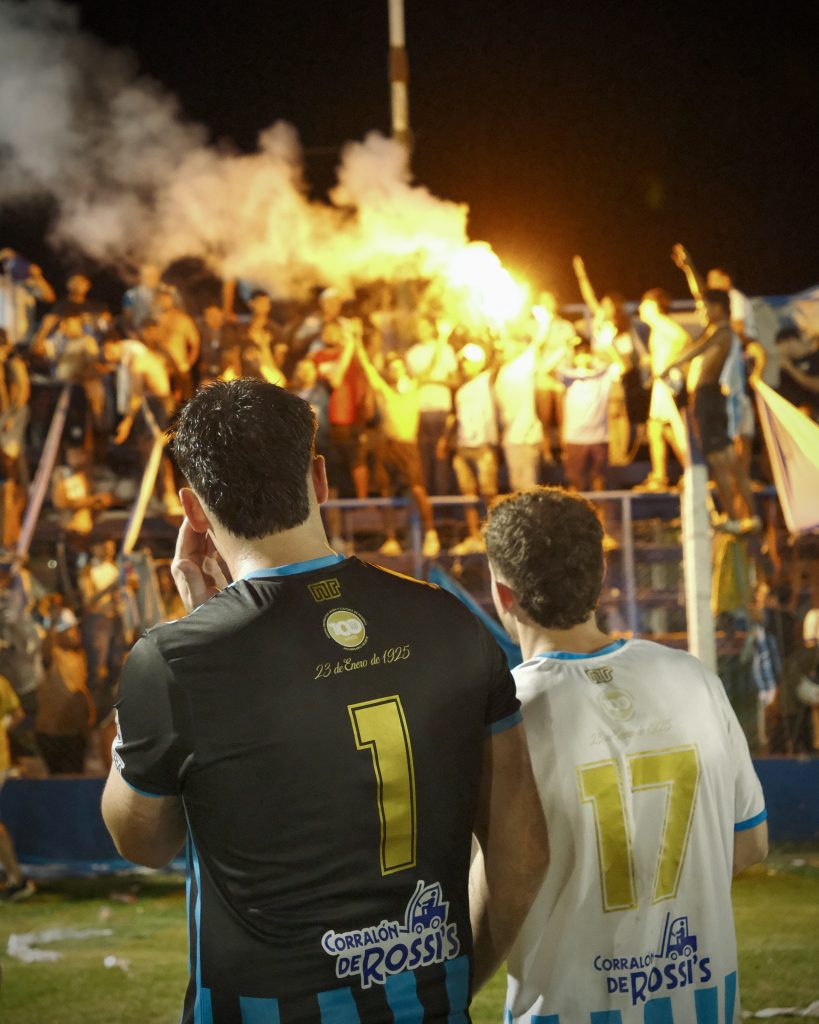
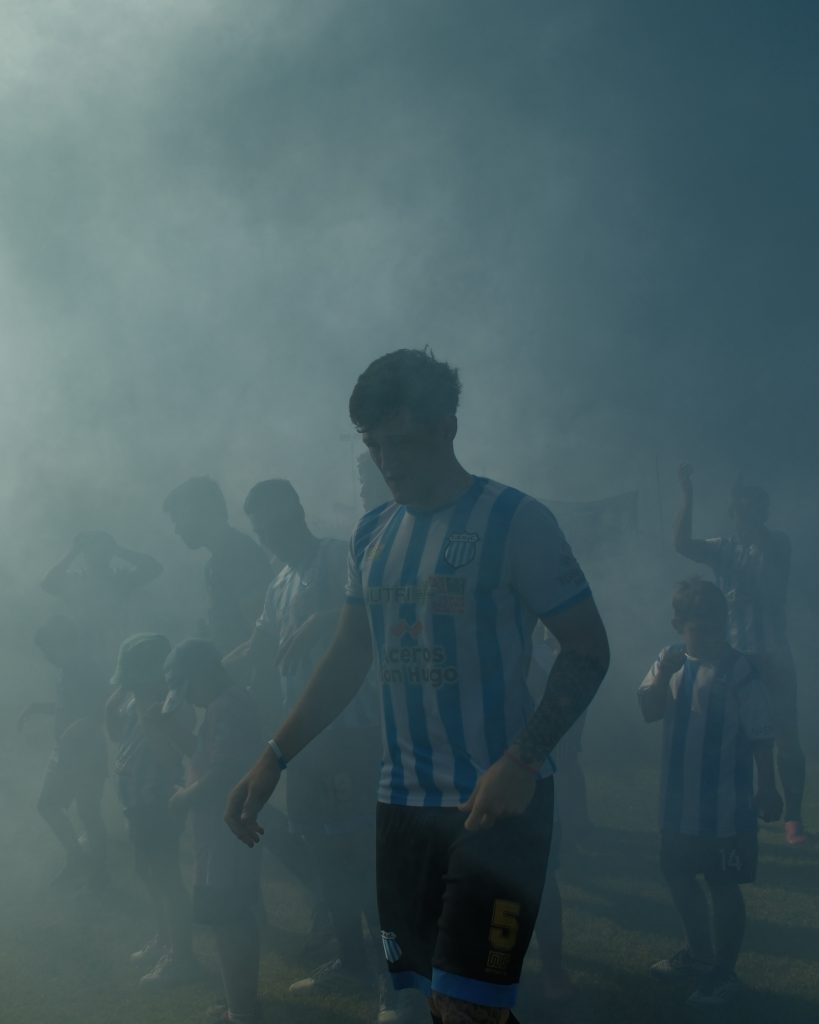

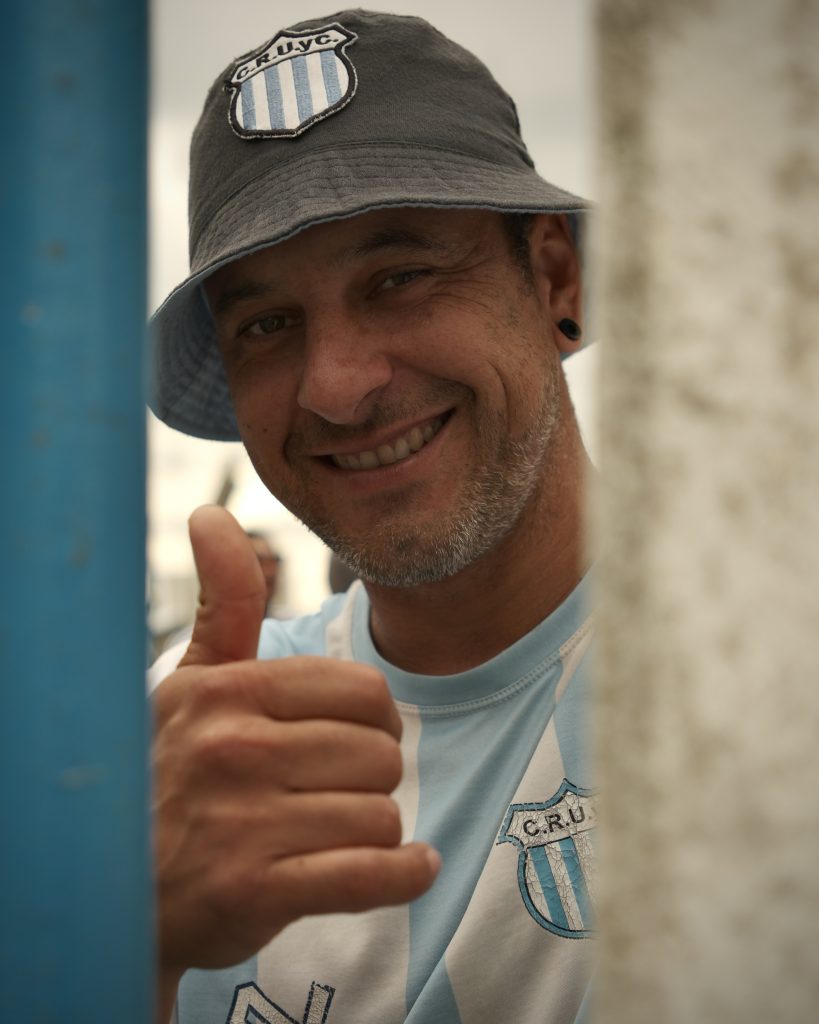
SPANISH
Entrando al pueblo, un cartel marca a fuego que estamos cruzando la puerta del corazón del fútbol. En Murphy nacieron más de quince futbolistas profesionales. No es mito ni exageración. Podría ser algo común en otros lugares, sí, pero acá hay un detalle: el pueblo tiene menos de cinco mil habitantes. Y en esta provincia que vio nacer a Messi y a Di María, la “Cuna del Futbolista Santafesino” —por ley 14.172— es, justamente, Murphy.
Murphy, nombrado así por un terrateniente irlandés en medio de la llanura pampeana, tiene un solo club de fútbol. Uno solo para todos. El Centro Recreativo Unión y Cultura es cancha, punto de encuentro y herencia. De aquí salieron Mauricio Pochettino, Paulo Gazzaniga y una larga lista de jugadores que llevaron el nombre del pueblo más lejos de lo que lo llevaría cualquier mapa.
El 2025 fue un año especial. El Centenario y una tormenta perfecta: una nueva comisión encabezada por ídolos locales; un plantel y cuerpo técnico con un noventa por ciento de jugadores del propio pueblo; y una hinchada que no entiende de medias tintas, con “Los Pingüinos” al frente. Todos empujando un camino que devolvió a Unión y Cultura a la final de la Liga Venadense después de dieciocho años.
No alcanzó para el título, pero esa es otra historia. A veces las gestas no saben de trofeos, y a veces los trofeos no tienen forma de copa. ¿Hay algo más poderoso que la ilusión de ver a un pueblo entero sosteniendo a un club que es pueblo… o a un pueblo que es club?
En Argentina el fútbol se vive de una manera especial, eso ya lo sabemos. Pero en Murphy, el fútbol es aún más: es identidad. Decir Murphy es decir Unión y Cultura. Y es sentir cómo el corazón se llena de ilusión, una vez más.
All words and images by Pedro J Caffa.
You can visit Pedro on Instagram here.
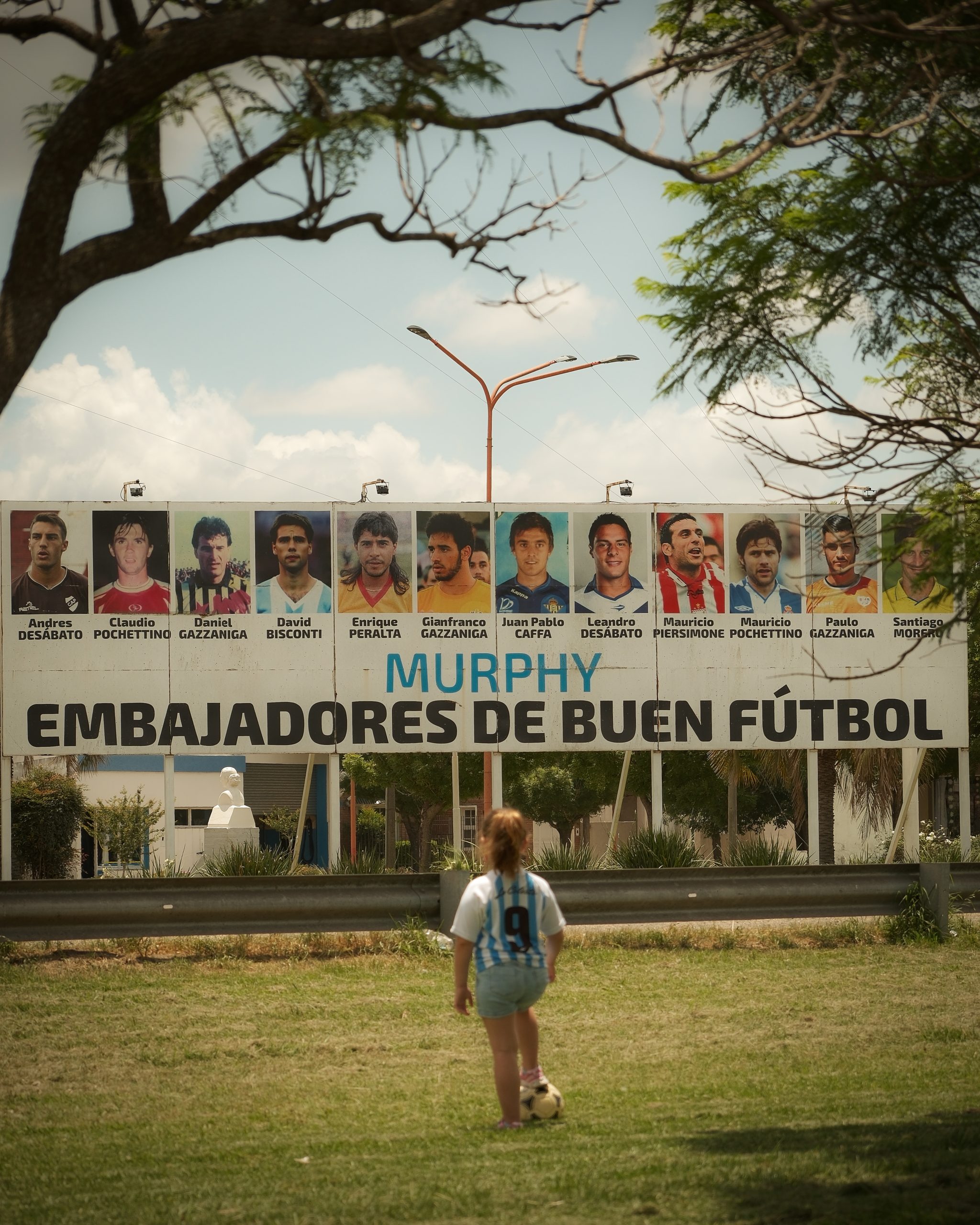
All words and images by Jonas Zöller
“Catching the last glimpses of the fading floodlights in the distance.“
It began, as so many journeys do, with football — but quickly became something else entirely.
Across South America, the game became Jonas’s entry point: a reason to wander, to ask questions, to follow floodlights into unfamiliar neighbourhoods and cities. Stadiums turned into landmarks, fixtures into excuses, and matchdays into moments of connection. What unfolded, slowly and unexpectedly, was not just a record of football grounds visited, but a diary of places, people, and passing feelings.
From vast concrete bowls to hillside stadiums carved into neighbourhoods, each stop revealed its own identity — from Chile to Argentina, and finally Brazil, where the journey draws to a close. There were nights when the noise felt endless, afternoons when the sun baked the stands into stillness, and countless conversations shared with strangers who needed no common language beyond the game. Football, in all its contradictions, opened doors — to generosity, to history, to joy, and sometimes to discomfort.
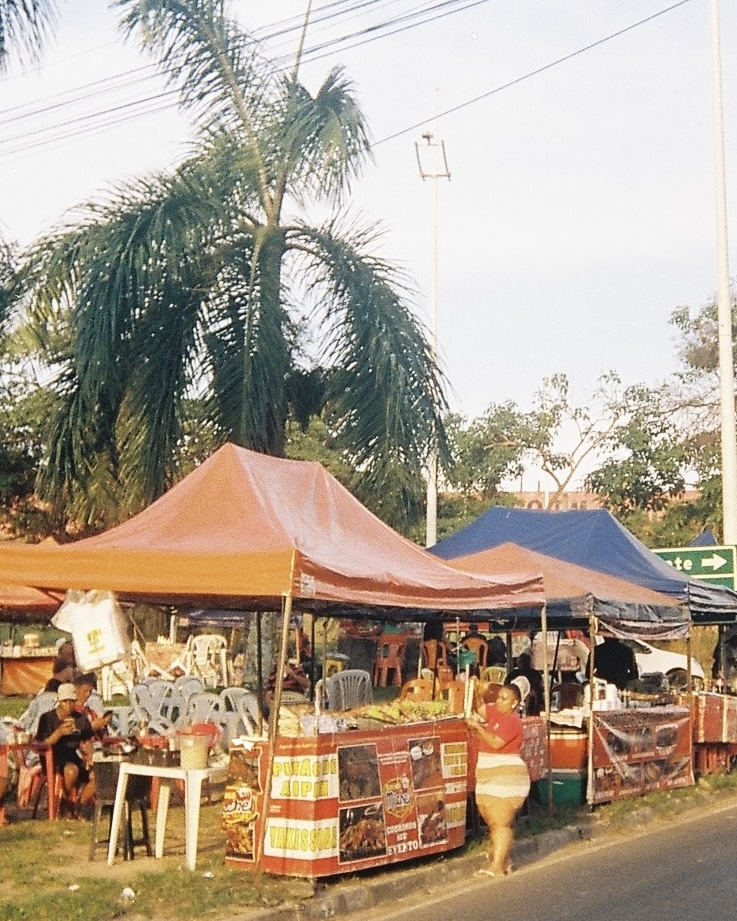
The journey was never just about romance. It carried the weight of South America’s past and present: colonial legacies etched into city centres, inequality visible long before kick-off, and the uneasy presence of modern football creeping into places that once felt untouchable. Somewhere between beauty and brutality, the game reflected the continent itself — emotional, communal, chaotic, and deeply human.
And then, almost without warning, it was coming to an end.
The final chapter unfolds in Salvador, on the last night before returning home. A day of hesitation and doubt, of resisting the pull of football altogether — before giving in one final time. One last stadium. One last set of floodlights. One last reminder of why the journey mattered in the first place.
This is not a conclusion, but a quiet landing. A moment of reflection beneath fading lights, where the journey’s many threads — football, trust, unease, connection, and belonging- briefly come together. The South American Diaries end not with a grand statement, but with a familiar feeling: standing in a stadium far from home, feeling exactly where you’re meant to be
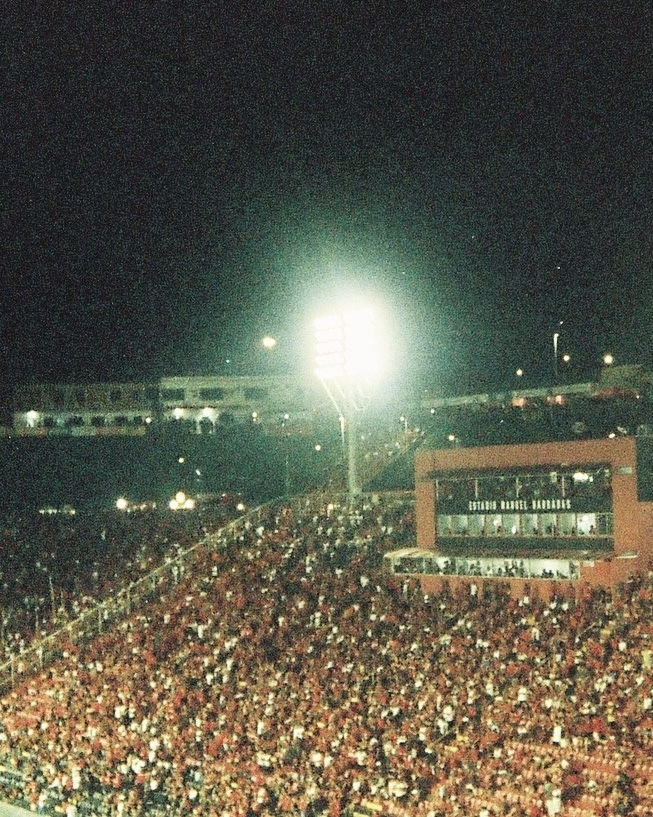
A Final Day in Salvador
Wednesday. It’s our last day in Salvador before we head back to cold Germany.
The day before, we experienced the brutal beauty of Brazil’s north one final time on Ilha de Itaparica. The island, with its white beaches and blue water, felt almost like a postcard version of everything we’d seen over the past weeks.
Maybe that trip left me a little too relaxed. Maybe it’s the many colourful colonial buildings and former mansions in Salvador that keep reminding me of the role white Europeans once played here, and how strongly that past still shapes the city today. But somehow, today, I don’t really feel like football. The match I had in mind is a bit outside the city, and once again, buying a ticket in advance isn’t possible.

Doubts, Decisions, and Modern Football
I argue with myself, weigh the pros and cons, and probably take out my phone twenty times to Google the stadium and the club. The decision finally falls in one of the souvenir shops, when I spot yet another Manchester City logo hidden among the EC Bahia merchandise. A quick search confirms what I already fear: the club is 99% owned by the City Group.
Thankfully, during my visit to Arena Fonte Nova, I didn’t notice any signs of the takeover yet — but I immediately felt connected to their city rivals, Vitória. My dislike for modern football and its multi-club ownership runs too deep.
So I decided to visit Barradão. One last match on this journey under Brazil’s floodlights. The thought is too tempting.
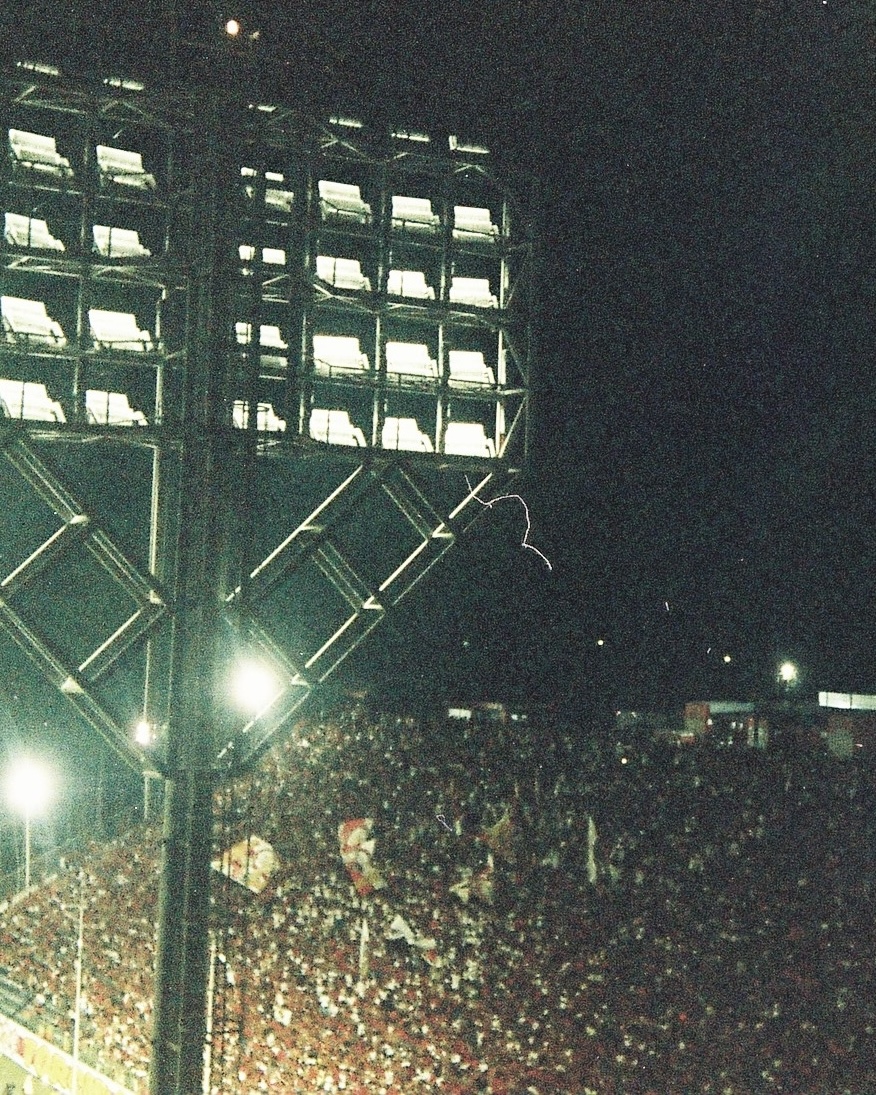
On the Way to Barradão
On the drive there, I feel uneasy at first. The stadium seems to sit right in the middle of a favela. At the same time, I’m annoyed at myself for this inner unrest. If South America has taught me anything over these weeks of football, it’s friendliness and helpfulness from complete strangers. I have no reason to feel unsafe, and I owe the people here my trust.
A little later, that trust is confirmed again at the ticket counter. As before, the process for foreigners seems absurdly complicated, but the guys and girls working there take care of me with almost touching dedication. Soon after, I’m holding my (digital) ticket.
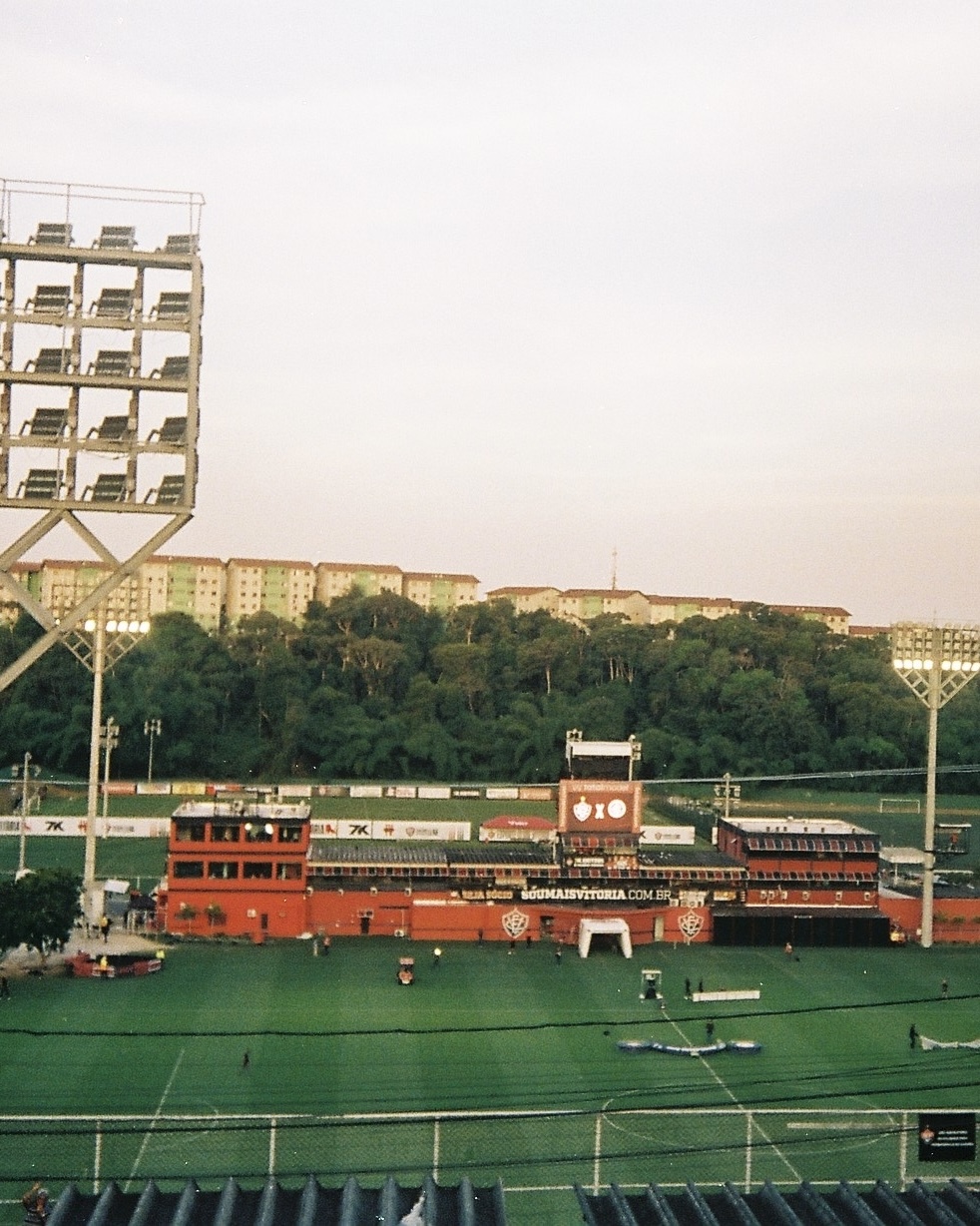
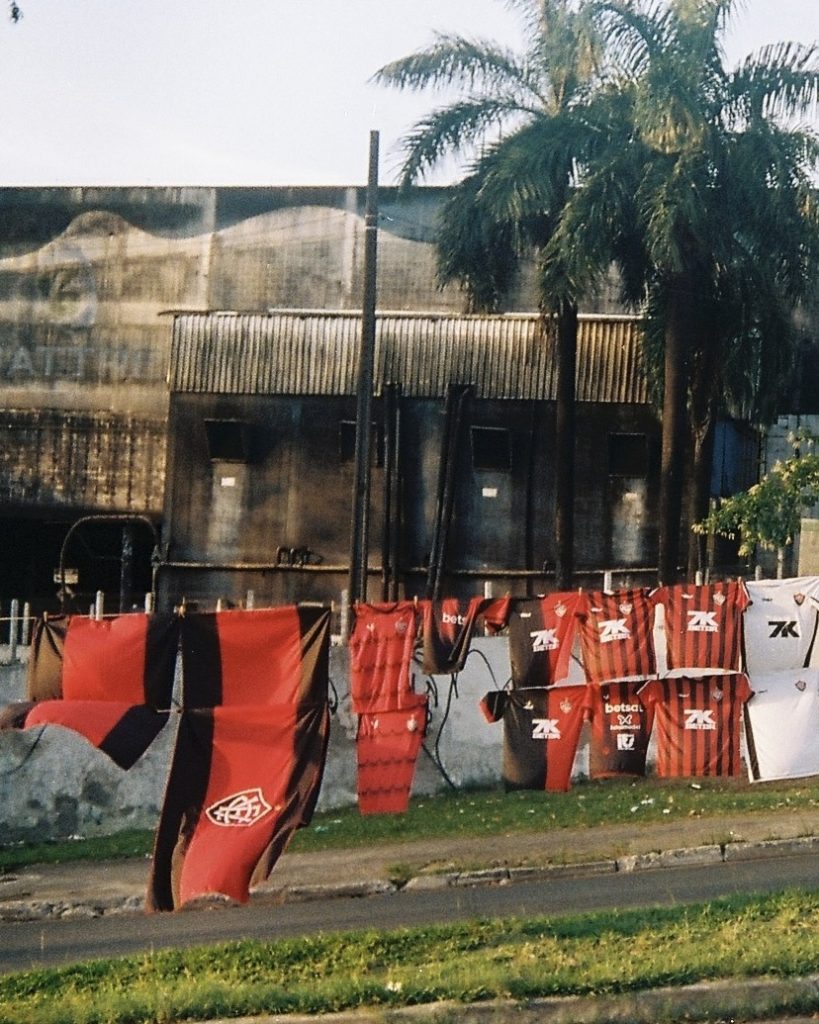

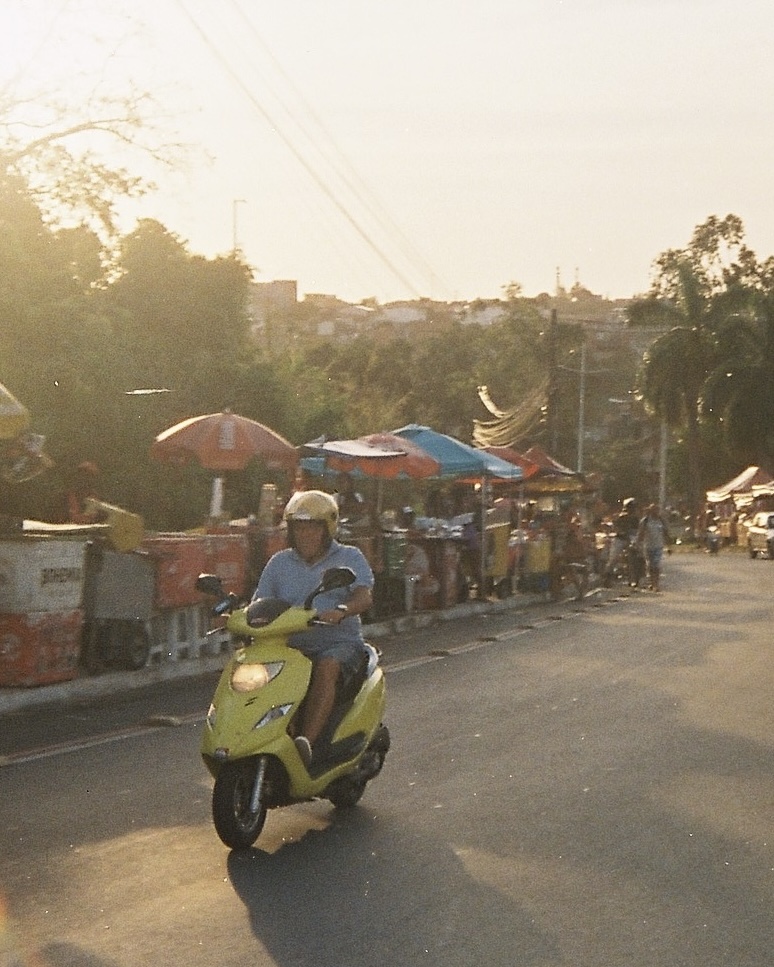
When the Stadium Reveals Itself
I take one last lap around the stadium, shoot a few photos of the street vendors, and pass through the turnstiles just as the sun begins to set. What I see when I step inside hits me within a fraction of a second — that same rush of happiness I’ve felt so many times in South American stadiums.
The pitch lies a hundred metres below me in a deep basin. Three stands are flanked by picture-book floodlights and look as if they’ve been carved directly into the surrounding hills. The stadium is still empty, so I wander around.
When I stop to take a few photos, someone approaches me quickly. Within minutes, I’m nerding out with a Vitória fan about football. I’ve had this thought a few times on this trip, but here it hits particularly hard: being 12,000 kilometres from home and sharing a passion with someone I’d never met before.

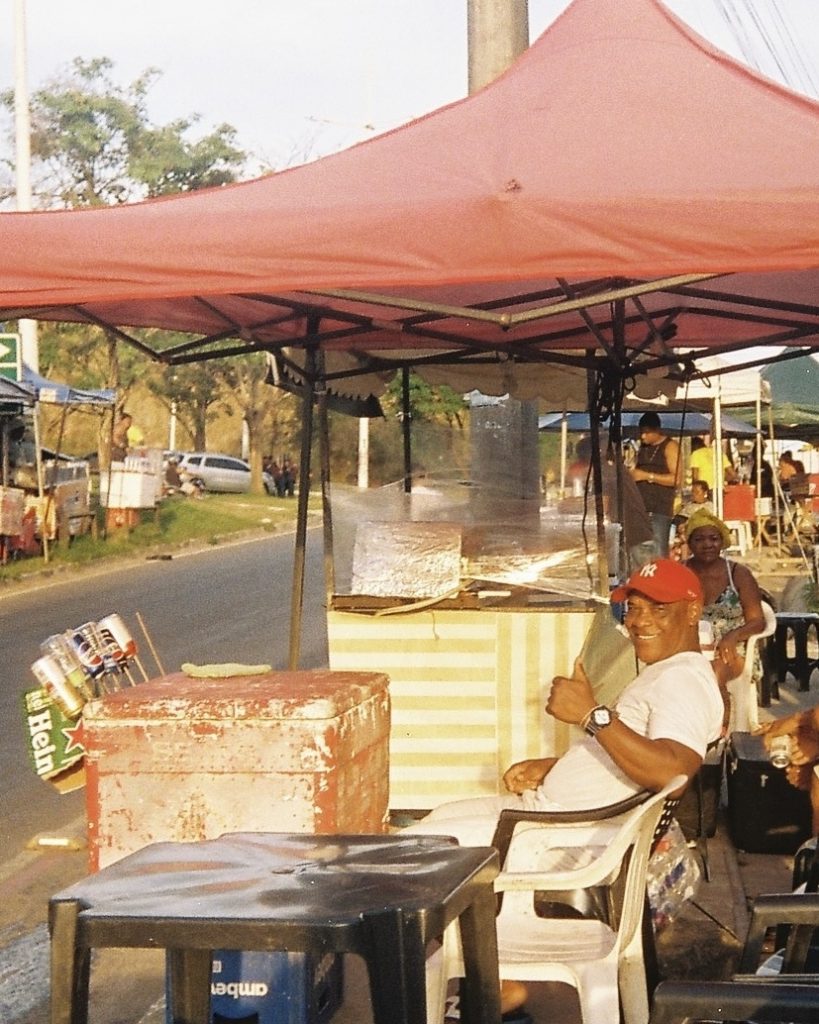
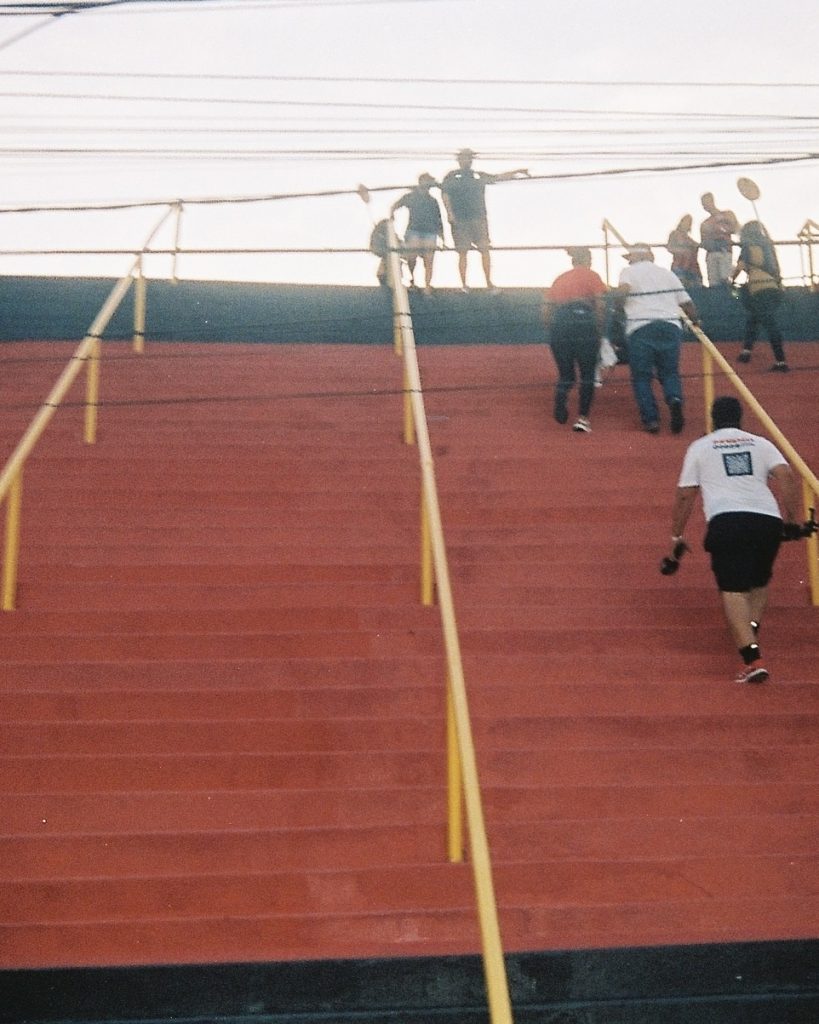
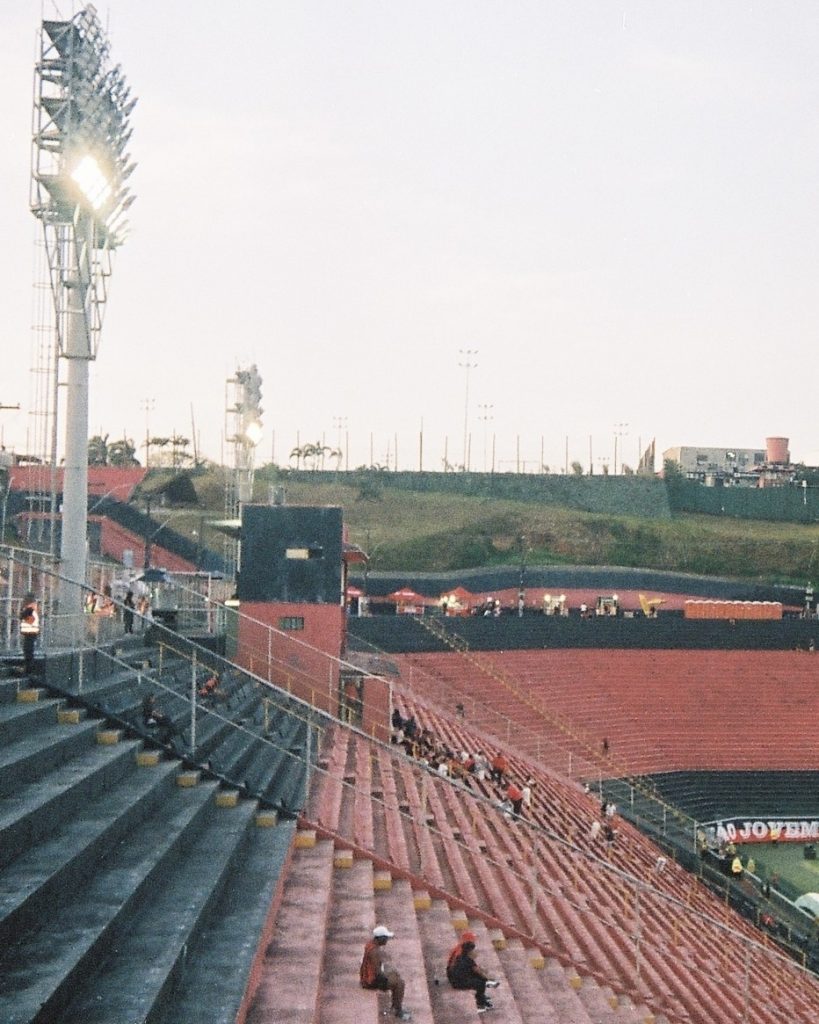
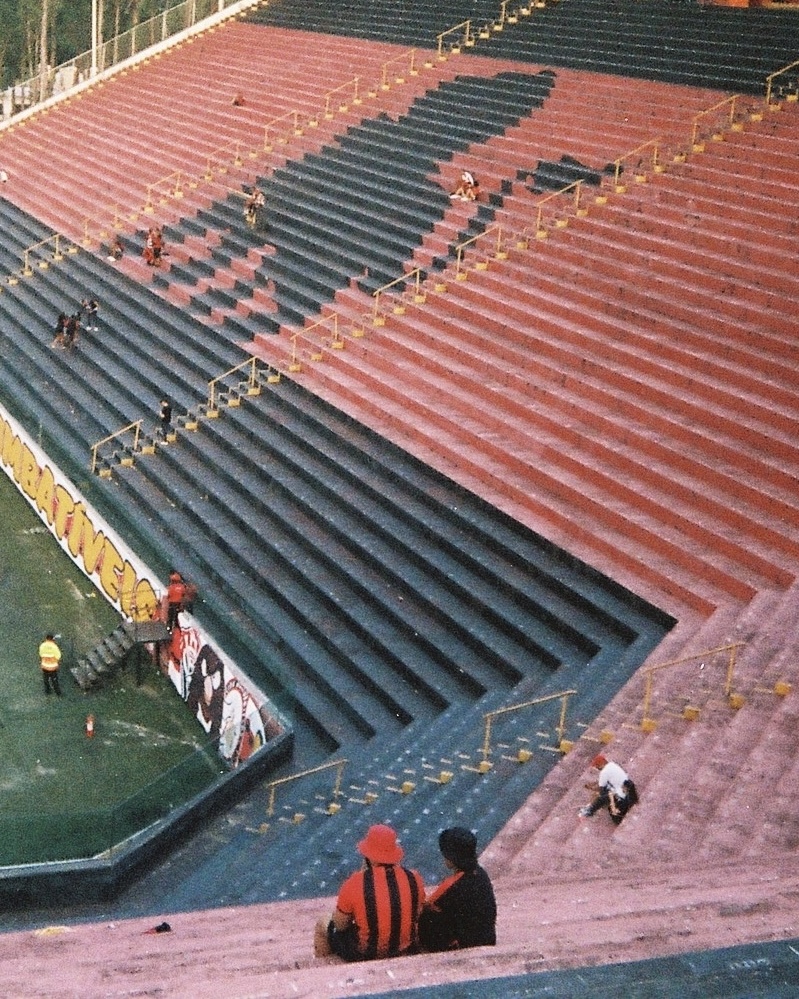
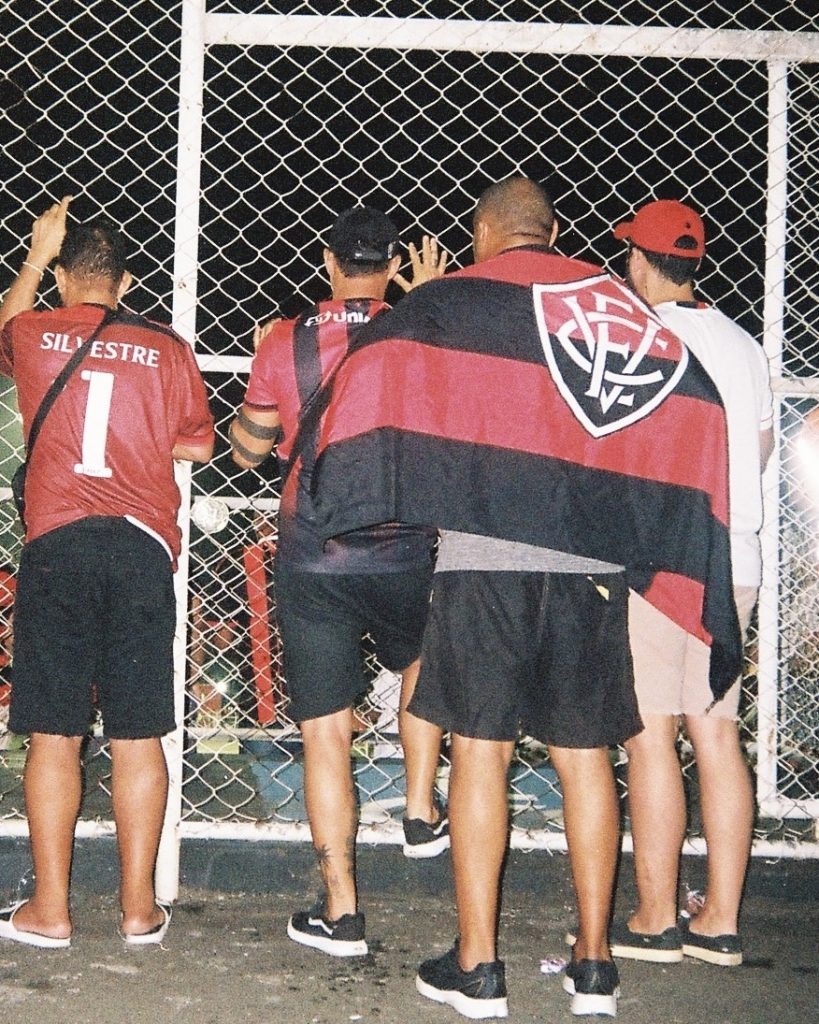
Unease in the Stands
The stadium fills slowly, but even after kick-off, the stream of people moving down the steep stairways doesn’t seem to stop. It must be the 20th or 30th minute before the stands finally reach full capacity. Even then, the place feels like it refuses to settle.
There’s constant movement between the stands and the endless food stalls, and I start to realise that the sporting situation plays a role too. Vitória are sitting in the relegation zone and playing poorly, despite desperately needing a win. The crowd grumbles and murmurs, waving arms and shaking heads with every misplaced pass.
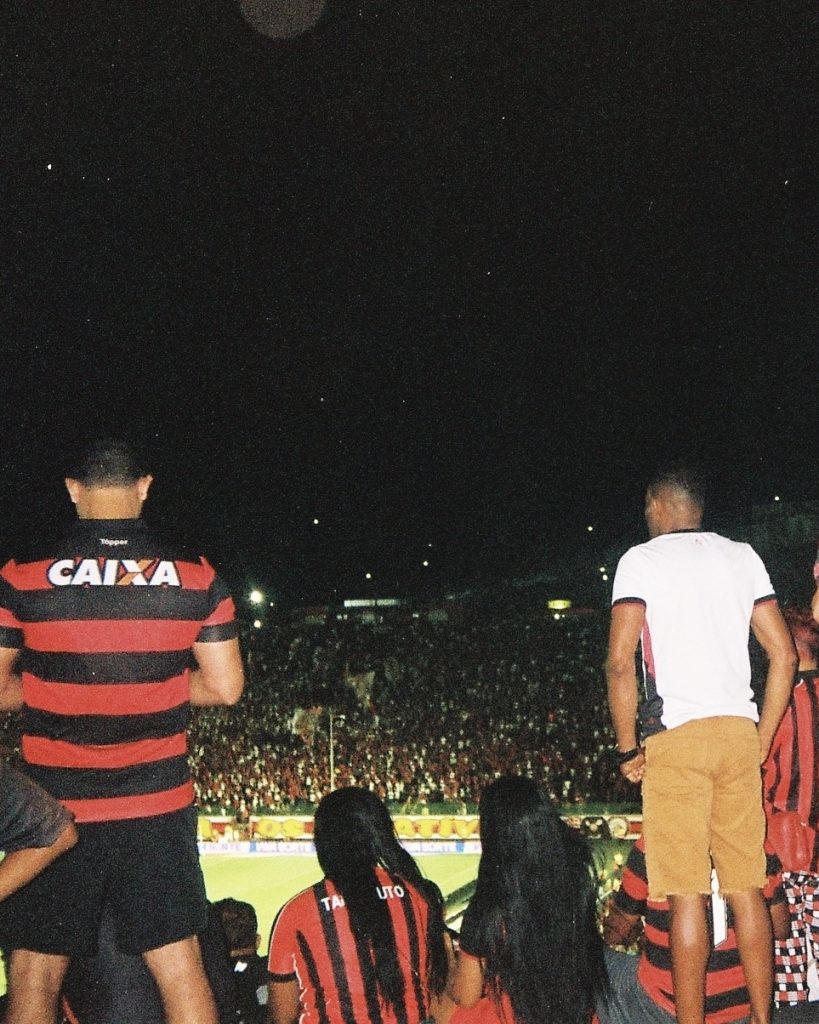
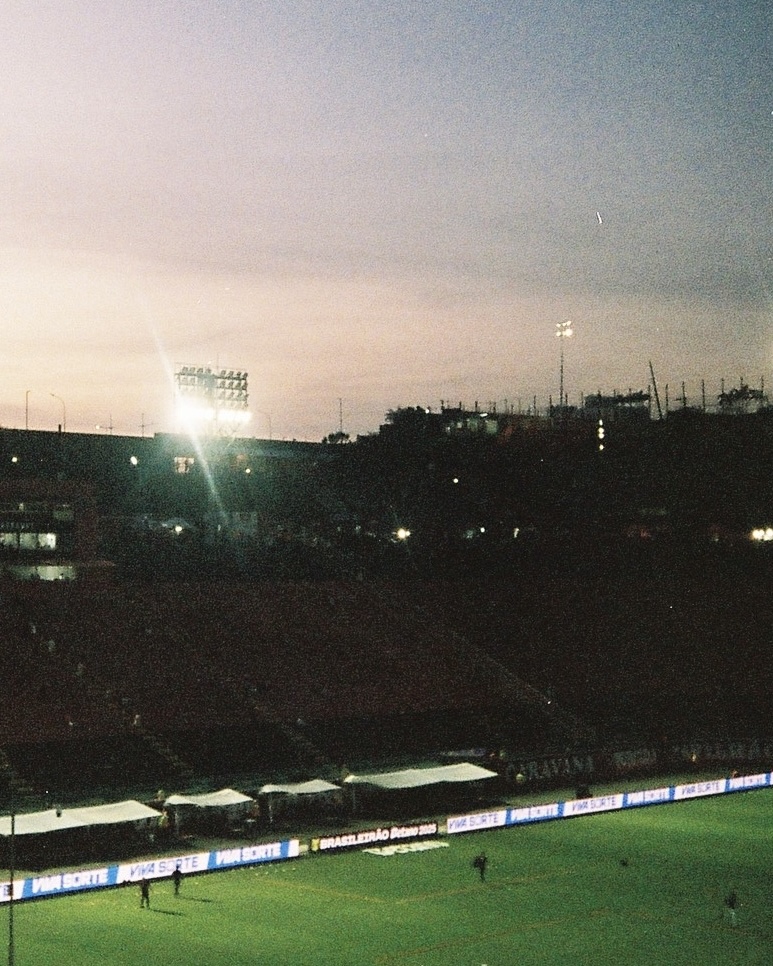
Ecstasy Under the Floodlights
The unease carries deep into the second half, until the redeeming 1–0 finally arrives. The sky above the torcida seems to explode as hundreds of flying beer cups catch the floodlights, and suddenly the tense atmosphere bursts into pure ecstasy.
I catch myself sharing the crowd’s collective relief as the referee blows the final whistle, and I make my way out.
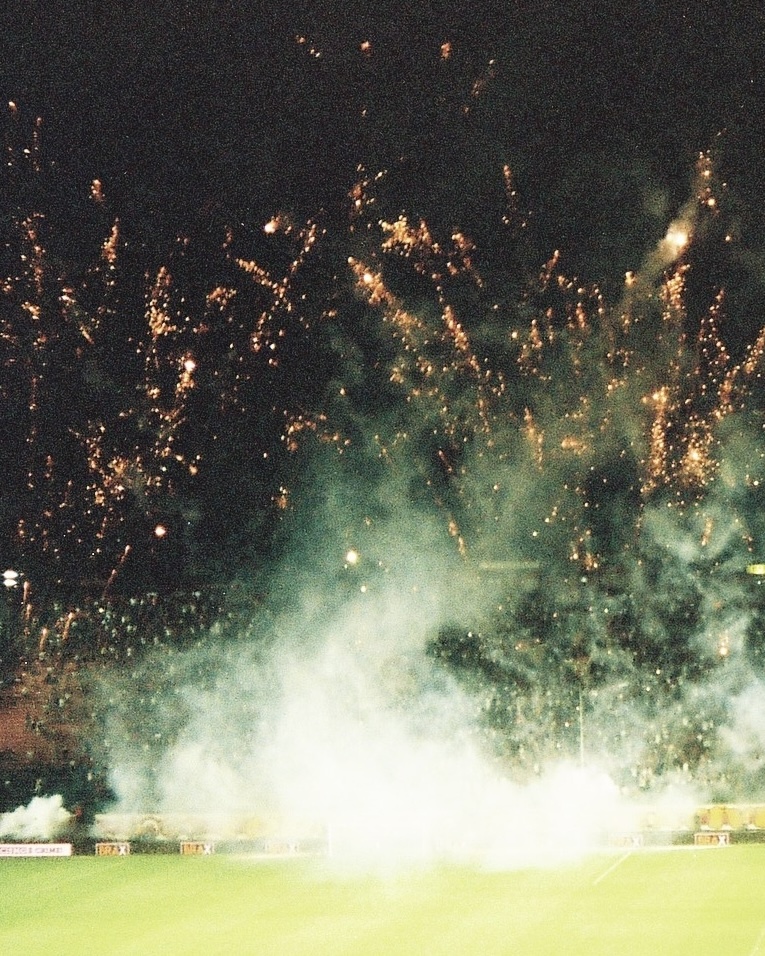
The Long Way Back
Caught in the thick traffic around the stadium, I retreat into my own thoughts. The visit to Vitória hits me with the full force of South American football romanticism. My mind jumps between memories from the past months, and a warm sense of contentment rises as I step into the final stadium Uber of my journey — catching the last glimpses of the fading floodlights in the distance.
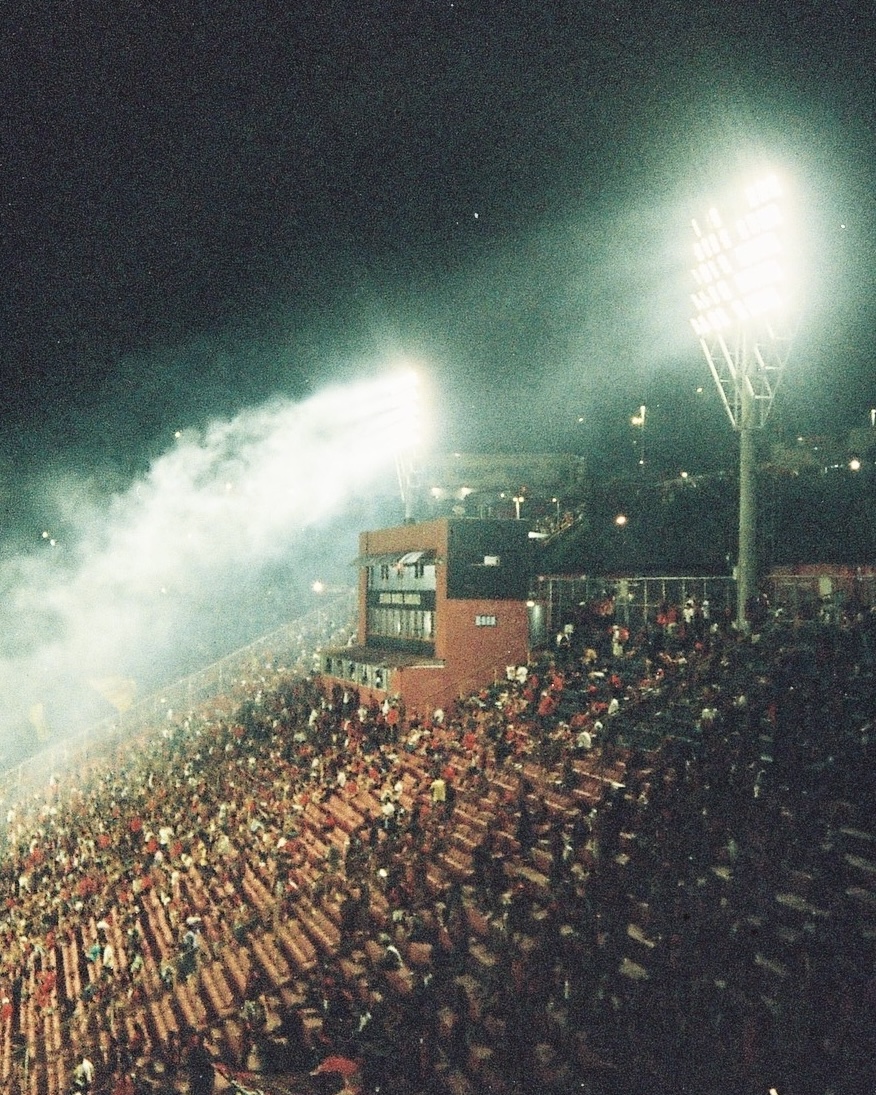
You can follow Jonas on social media by clicking here

There are clubs you follow for trophies, and clubs you follow because they feel real. US Pergolettese sits firmly in the second category.
Based in Crema, in the flat heart of Lombardy, Pergolettese are a proper provincial football side. No glamour, no illusions. Just football that means something to the people who turn up every week.
They play in Serie C, Italy’s third tier, a division where nothing comes easy and everything has to be earned. That suits Pergo just fine.
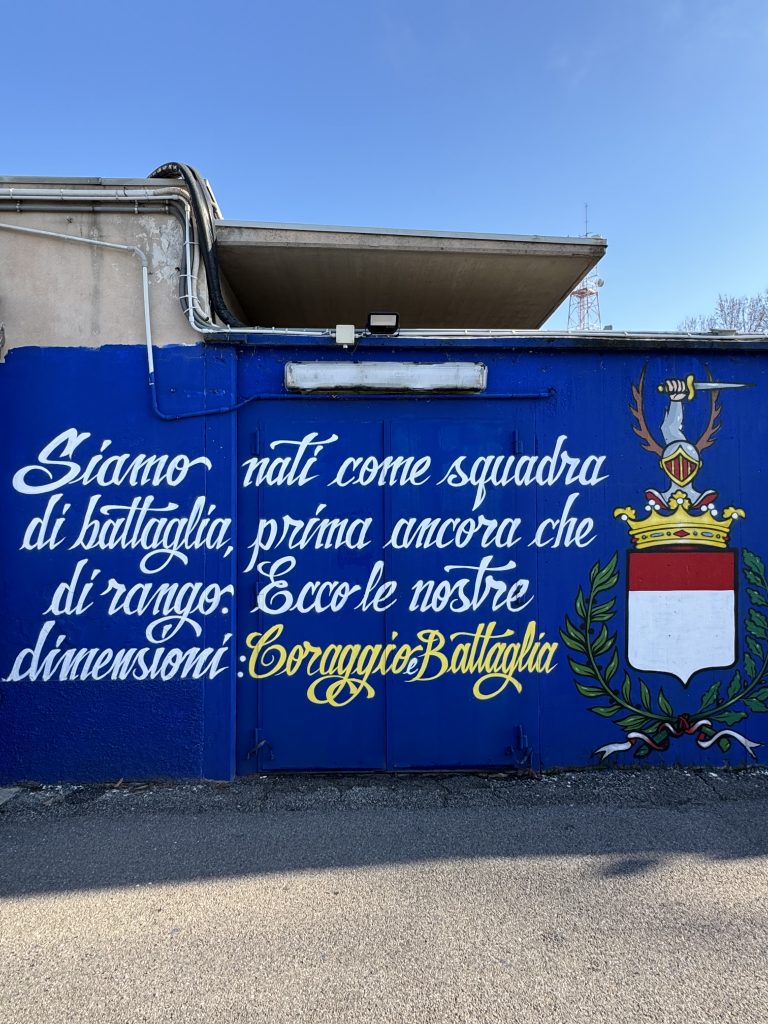
From Pergoletto to Pergo
Football in Crema officially started in 1932, when the club was founded in Pergoletto, a suburb of the town. Over the years, the name changed, Pergolettese became Pergocrema, but the identity stayed the same: local, stubborn, and proud of it.
There were highs. Winning Serie C2 in 2007–08 and finishing 11th the following season remains the best result in the club’s history. There were also lows. In 2012, financial problems caught up with Pergocrema and the club went bankrupt. Doors shut. Silence followed.
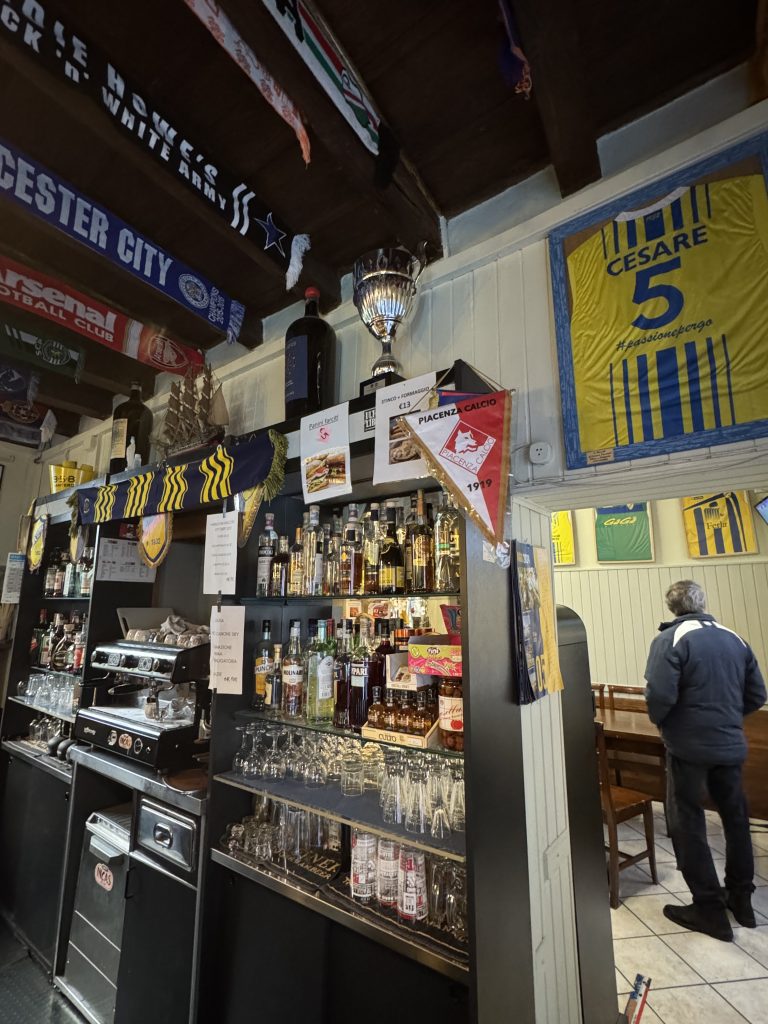

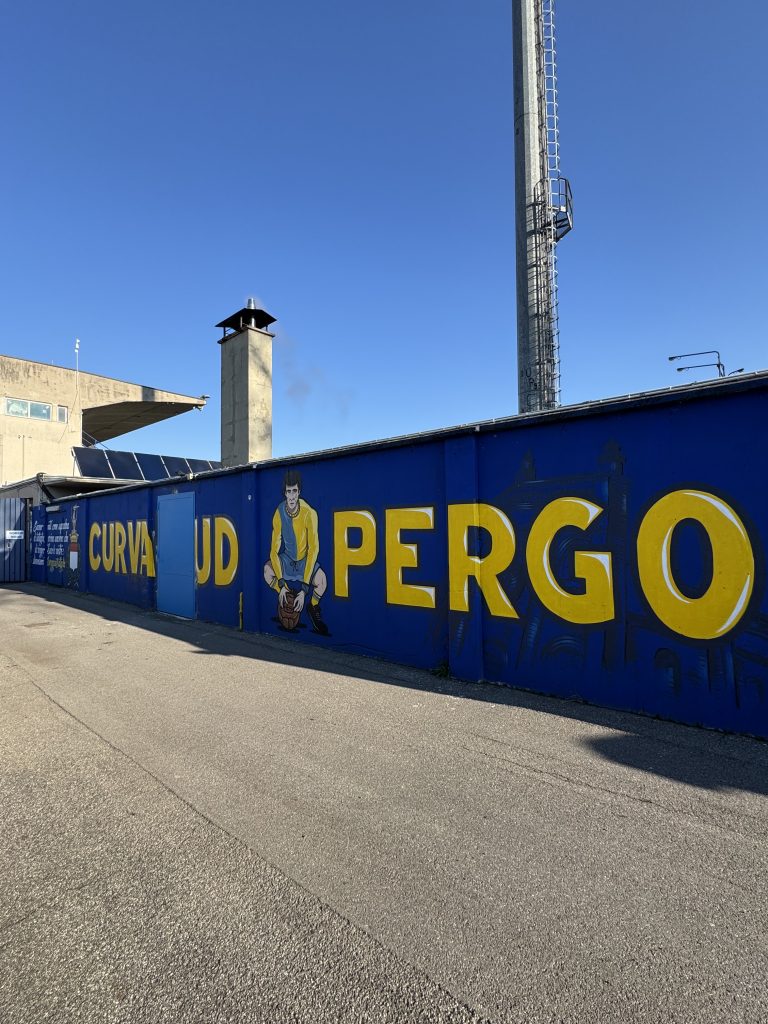
But football in places like this doesn’t just disappear.
A year later, the title of Pizzighettone moved to Crema, the name US Pergolettese 1932 returned, and the story carried on. Promotion followed, and by 2019, Pergo were back in the professional game, this time holding their own against clubs with far bigger names and budgets.
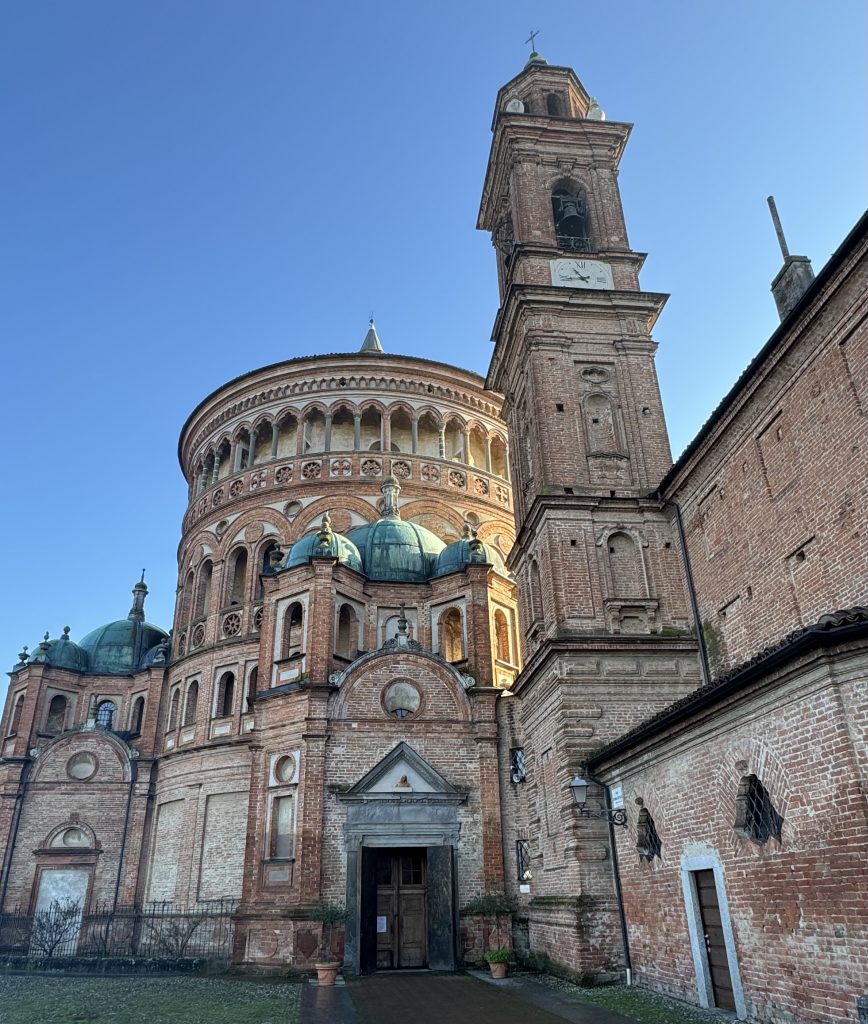
The Cannibals
Pergolettese are known as I Cannibali. It’s not a nickname dreamed up by a marketing team. It comes from how they play.
This is football built on physicality, pressure and refusal to back down. They don’t try to outplay you. They don’t pretend to be something they’re not. They get close, they make it uncomfortable, and they keep going until you crack.
Small ground. Tight pitch. Fans right on top of you. Away teams know they’ve been somewhere after a visit to Crema. Around here, football has always been more of a contest than a performance.
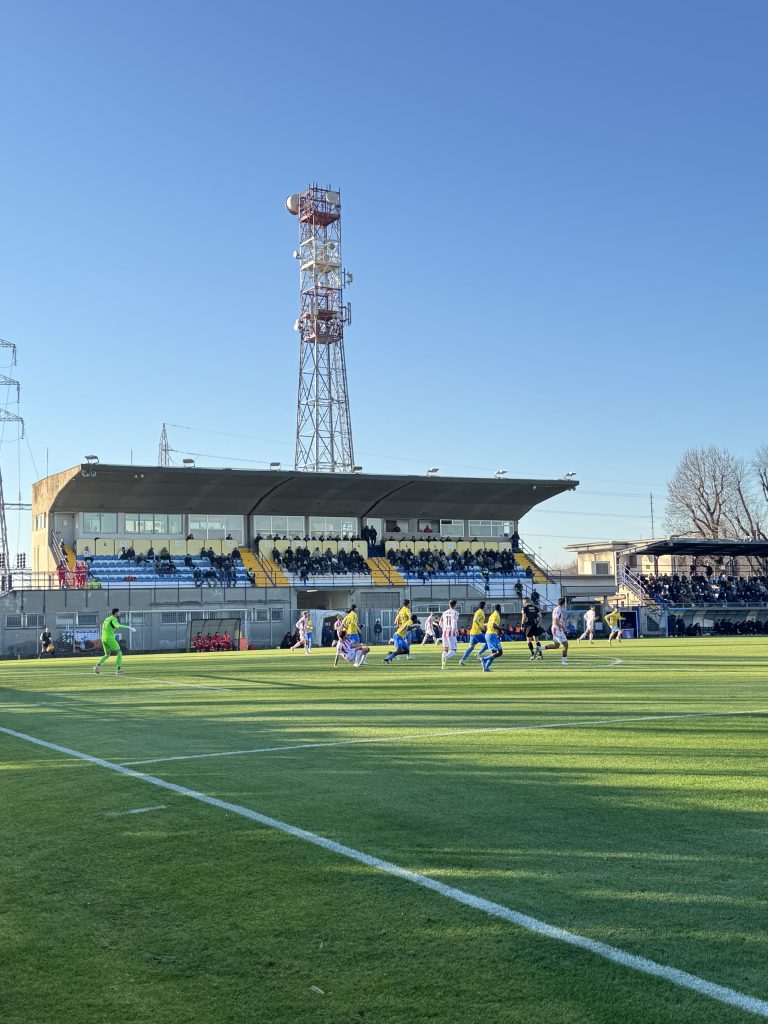

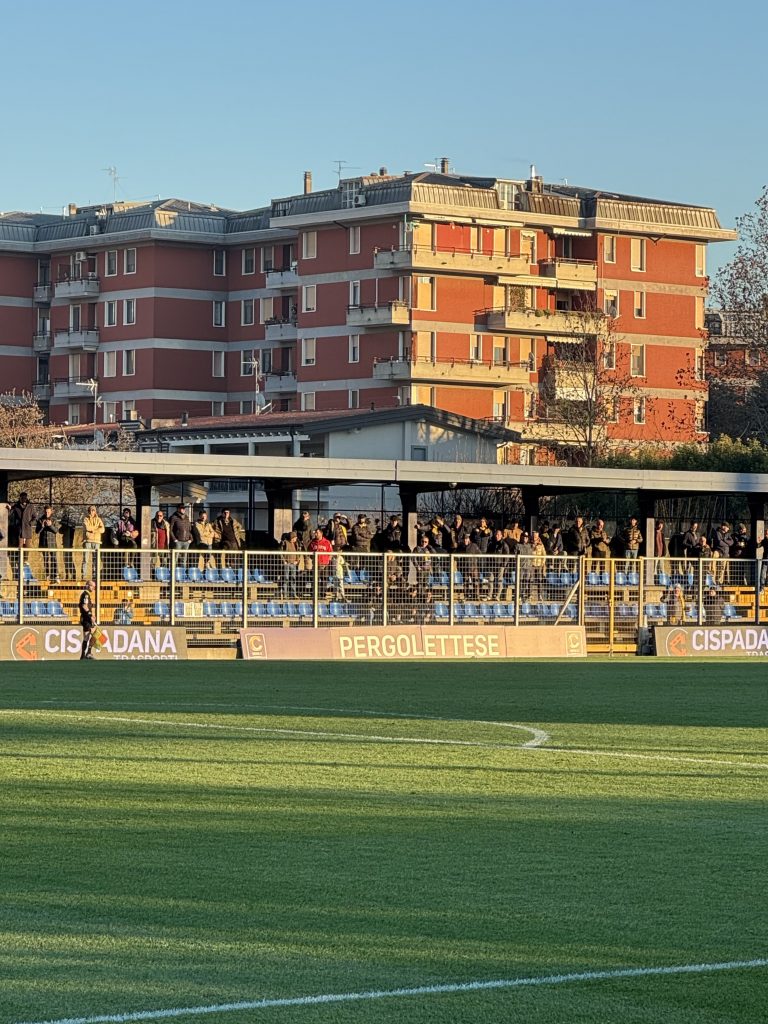
The Stands and the City
Pergolettese share the Stadio Giuseppe Voltini with city rivals AC Crema, which only adds fuel to the local derby. Rivalries with Mantova, Pro Patria, Lecco and others run deep, while friendships with Piacenza supporters and even Union Saint-Gilloise fans show how these connections stretch well beyond Lombardy.
Crema itself often surprises people. It’s best known internationally for Call Me By Your Name, filmed among its streets and piazzas, but there’s more here than cinema tourism. Agriculture, cheese, small industry and a strong sense of local identity define the town.
And then there’s the food. Tortelli cremaschi — sweet, stuffed pasta that confuses first-timers — alongside salva cheese, winter dishes like pipèto, and pastries that belong to this place alone. Matchday doesn’t end at the final whistle. It spills into cafés, bakeries and late conversations.
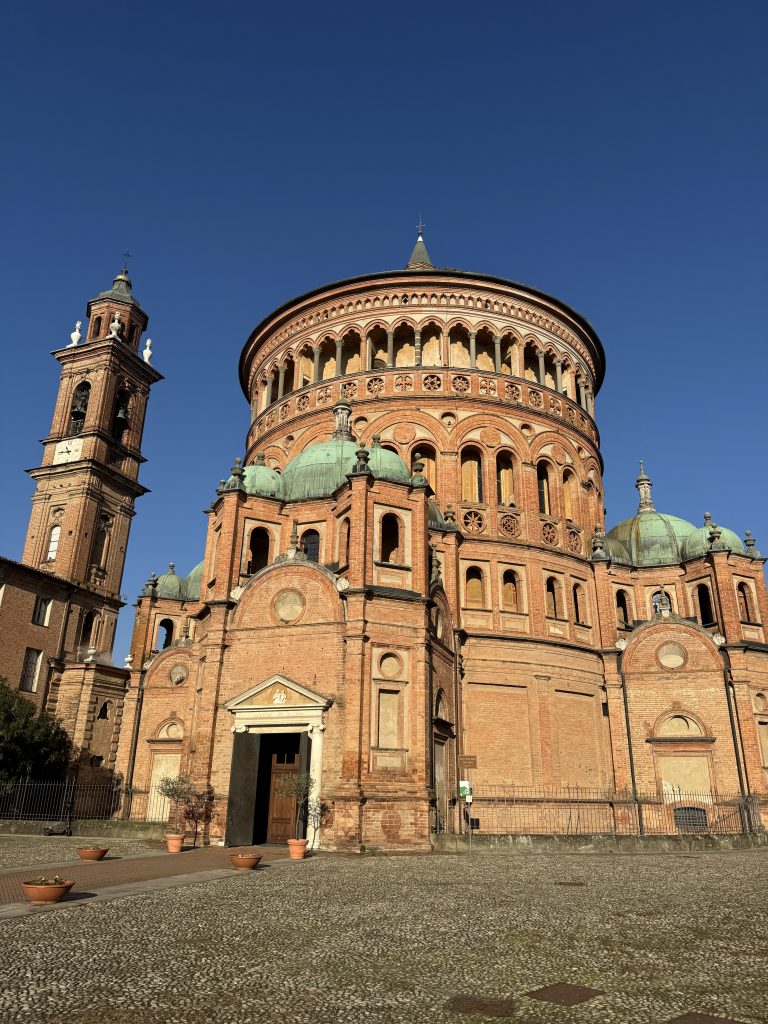


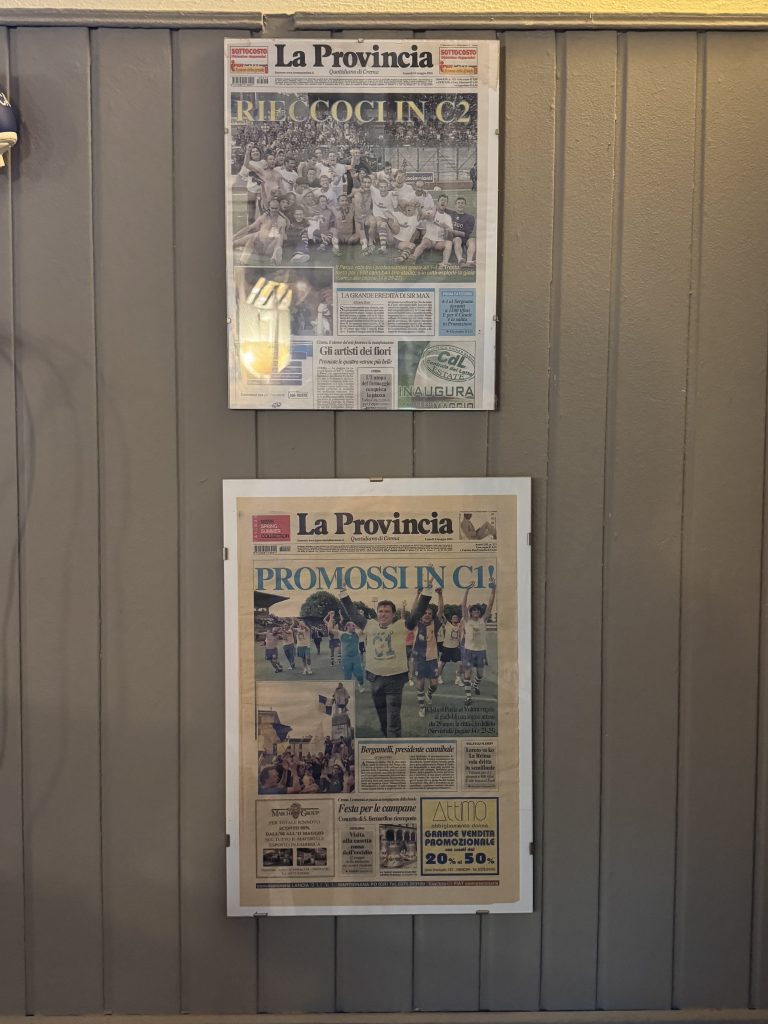
Today’s Pergolettese
The current squad is exactly what you’d expect from Pergo: experienced Serie C heads, younger players on loan from bigger clubs, and a core that knows what it means to play here. Captain Mariano Arini sets the tone, while the team continues to lean into that Cannibals’ reputation — organised, intense and difficult to beat.
They’re not chasing fairy tales. Survival, stability and pride come first.
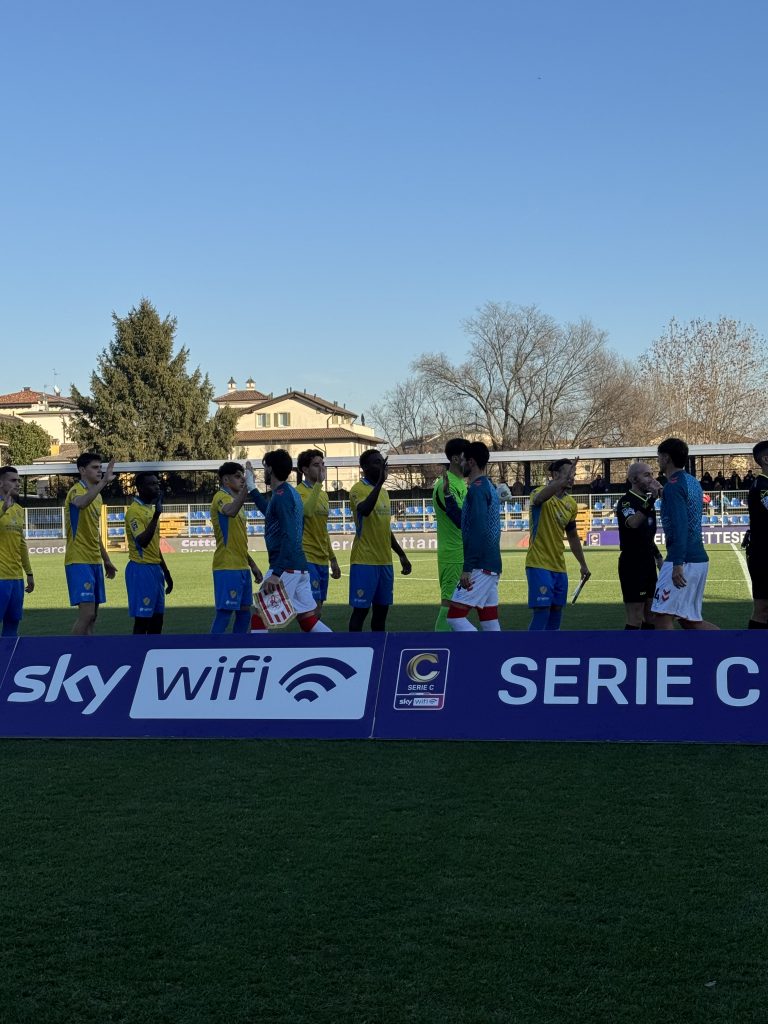
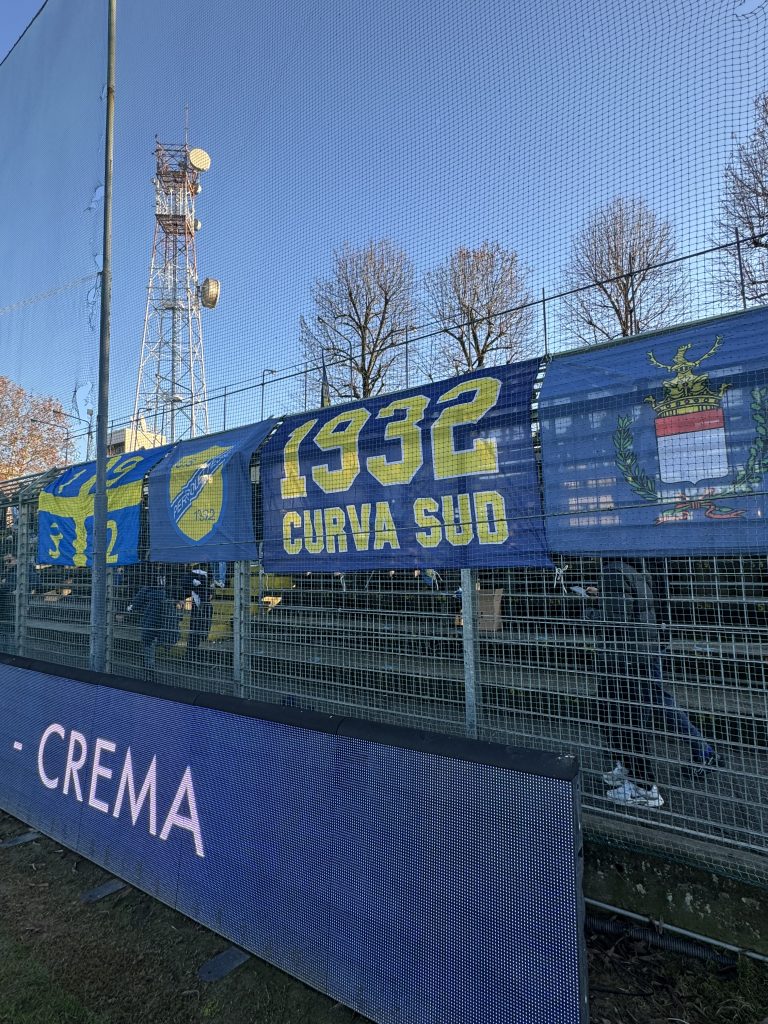
Why Pergolettese matter
US Pergolettese won’t dominate headlines. They won’t trend online. But they represent something essential about Italian football: community clubs, rebuilt after failure, still standing because people care enough to keep them alive.
In Crema, football isn’t about status. It’s about turning up, backing your side, and knowing exactly who you are. Pergolettese know that better than most.

All our thanks to Luca Gaiera and U.S. Pergolettese 1932
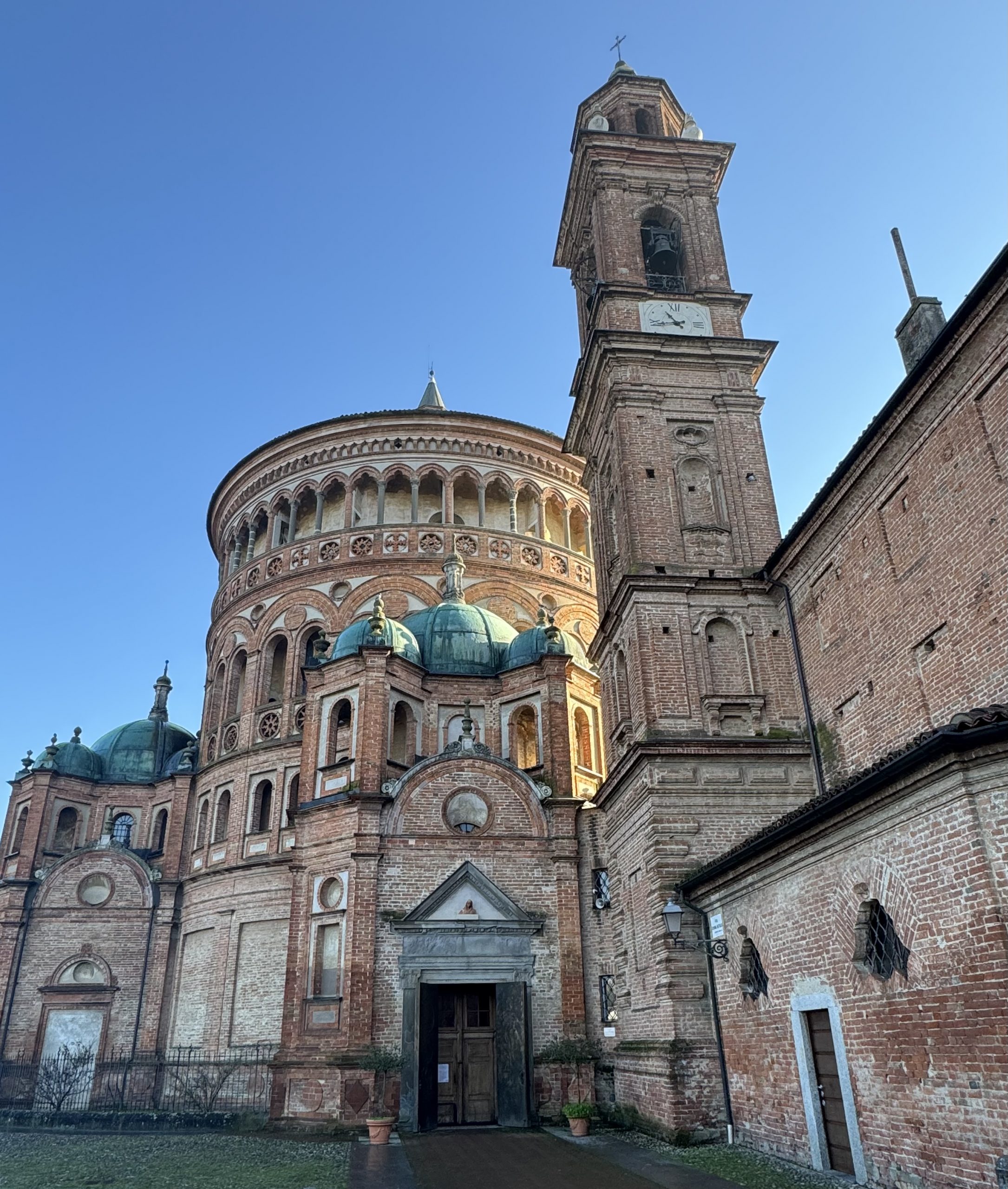
Some clubs are inseparable from their cities. Others are their cities. In Pelotas, in Brazil’s southernmost state of Rio Grande do Sul, football doesn’t just fill weekends — it defines identity. To understand this place, you have to understand Grêmio Esportivo Brasil. And to understand Brasil, you have to walk Pelotas slowly, listen carefully, and feel the weight of history in its streets.

Pelotas: A City Built on Trade, Culture, and Contradictions
Set between the Atlantic coast and the vast Lagoa dos Patos, Pelotas is a city shaped by cycles of wealth and decline. Once prosperous from the charque (jerked beef) trade, Pelotas grew grand theatres, pastel-coloured mansions, and wide European-style avenues — the architectural evidence of former riches.
Today, the city wears its past openly. The historic centre is elegant but weathered, proud but imperfect. Cafés sit inside faded buildings. Old men gather outside bakeries. Students drift between lectures and bars. Life here moves at its own pace, unbothered by modern Brazil’s obsession with speed.
And running quietly through it all is football.

The Club of the People
Founded in 1911, Grêmio Esportivo Brasil emerged when football in Pelotas belonged almost exclusively to white elites. Brasil chose a different road. It welcomed Black players rejected by other clubs and built its identity from the margins.
What was once used as an insult — Os Negrinhos — became a badge of honour. Later, the club would adopt another name that carried even greater weight: O Xavante. Inspired by Indigenous resistance and strength, the nickname came to symbolise bravery, defiance, and an unbreakable bond with the people.
Supporting Brasil has never been about glamour. It has always been about belonging.

On matchday, everything leads to Bento Freitas Stadium.
On matchday, everything leads to Bento Freitas Stadium.
There are no corporate lounges here. No polished hospitality zones. Bento Freitas is concrete, noise, flags, smoke, and sweat. The stands rise close to the pitch, trapping sound and emotion inside. When the Xavante sing, it doesn’t echo — it presses down.
Even in Série D, the stadium fills. Not out of hope for trophies, but out of duty. This is what being Xavante means: turning up regardless of logic.
For visiting supporters, Bento Freitas feels confrontational. For locals, it feels like home.
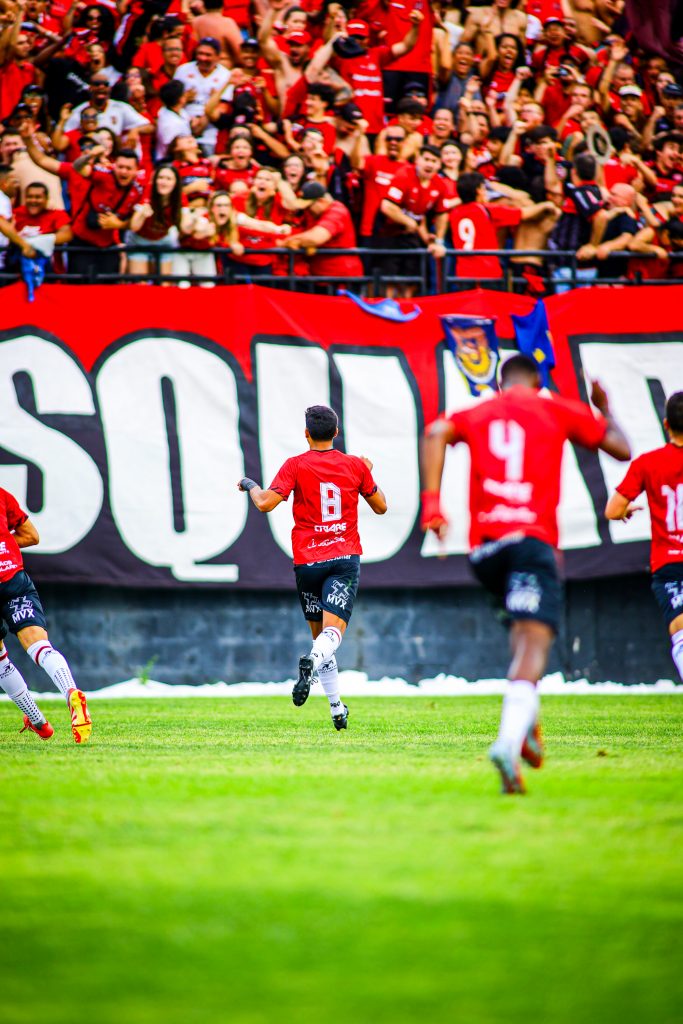
A Way of Life, Not Just a Result
To follow Brasil de Pelotas is to accept suffering as part of the deal. The club has beaten world champions, humbled Flamengo in front of 20,000 people, and flirted with the top flight — only to fall again.
Relegations came. Pain followed. Then tragedy, in 2009, when a bus accident claimed the lives of Cláudio Milar, Reginaldo, and Giovanni Guimarães. The city mourned collectively. Murals appeared. Names were sung. Memory became fuel.
This is where football in Pelotas shifts from sport to ritual.
Every chant carries history. Every scarf holds grief and pride in equal measure.

The People Behind the Badge
Brasil’s supporters call themselves A Maior e Mais Fiel — the biggest and most faithful. It’s not marketing language. It’s inheritance.
Support is passed down in kitchens and bars, from father to son, mother to daughter. Red and black shirts are worn daily, not just on matchdays. Taxi drivers talk tactics. Bakers argue about referees. Everyone has a story about Bento Freitas.
In Pelotas, football is conversation currency.

Beyond the Stadium: Living Pelotas
A weekend in Pelotas doesn’t end at full-time. It spills into bars, cafés, and late-night conversations.
Start with coffee downtown, where old theatres and colonial façades frame everyday life. Try local sweets — Pelotas is famous across Brazil for its doces, a legacy of Portuguese influence and sugar wealth. Walk toward the waterfront as the light softens, and the city feels almost Mediterranean.
At night, tables fill slowly. Conversations linger. Football inevitably enters the room.
This is not a city that performs for tourists. Pelotas doesn’t sell itself loudly — it waits to be understood.
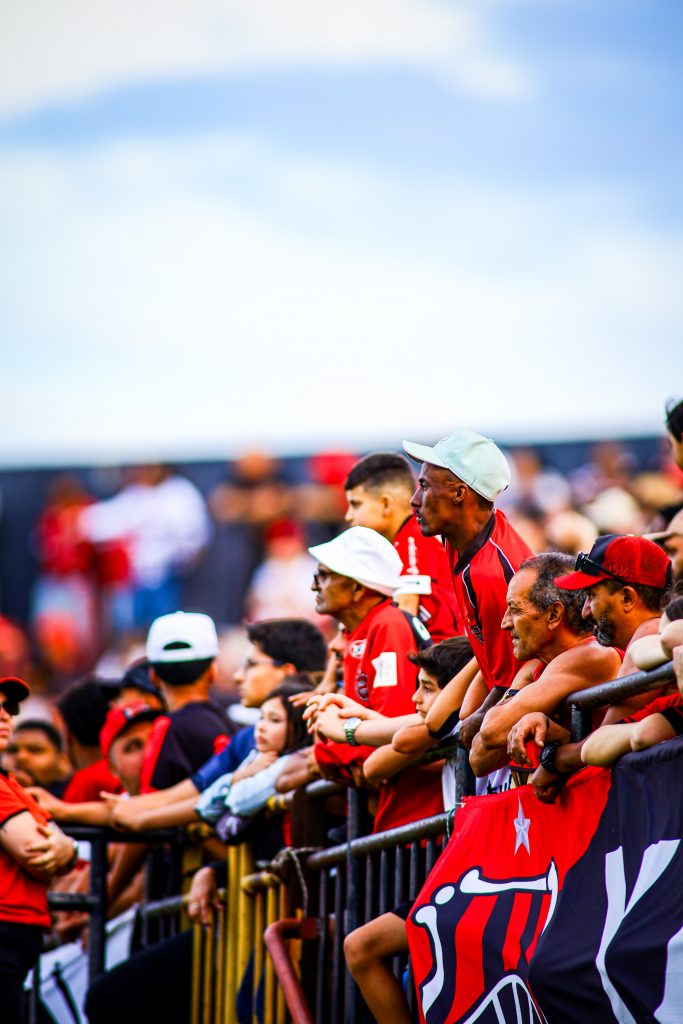
Why This Place Matters
In an era of sanitised football, Pelotas offers something increasingly rare: authenticity without performance.
Grêmio Esportivo Brasil exists outside the spotlight, powered by memory, resistance, and love. The club’s story mirrors the city itself — proud, wounded, resilient, and deeply human.
To visit Pelotas is to step into a slower rhythm of football and life. To stand at Bento Freitas is to feel what the game once was — and still can be.
This is not about trophies or trends.
It’s about roots.
It’s about people.
It’s about being Xavante.
Avante.
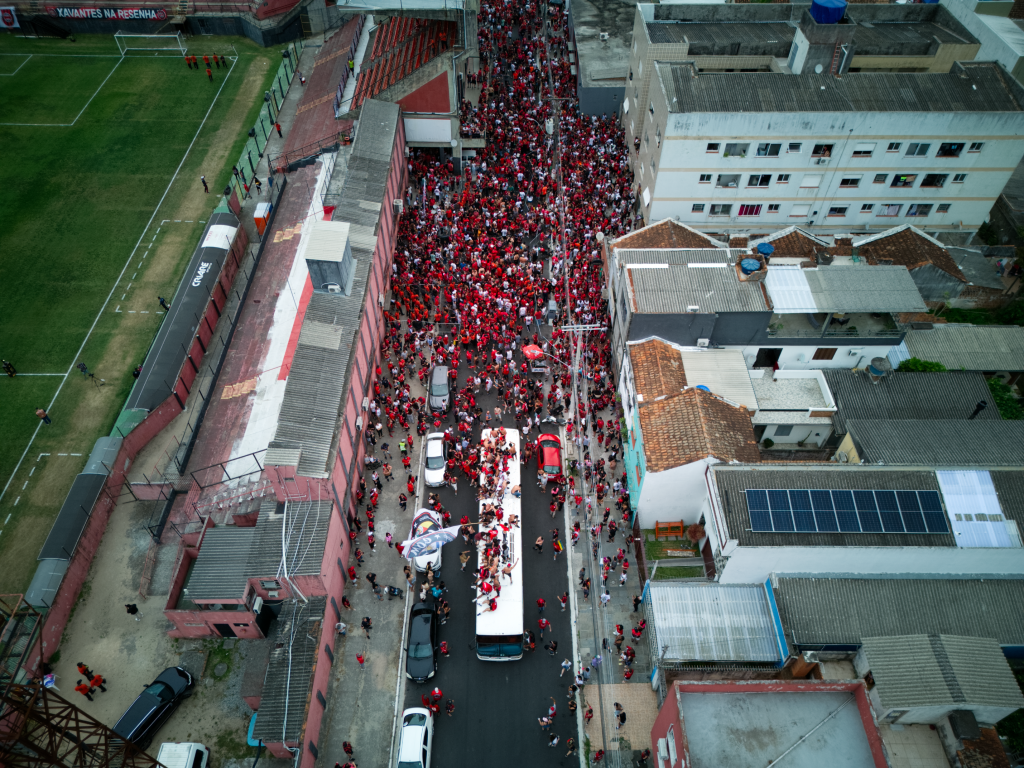
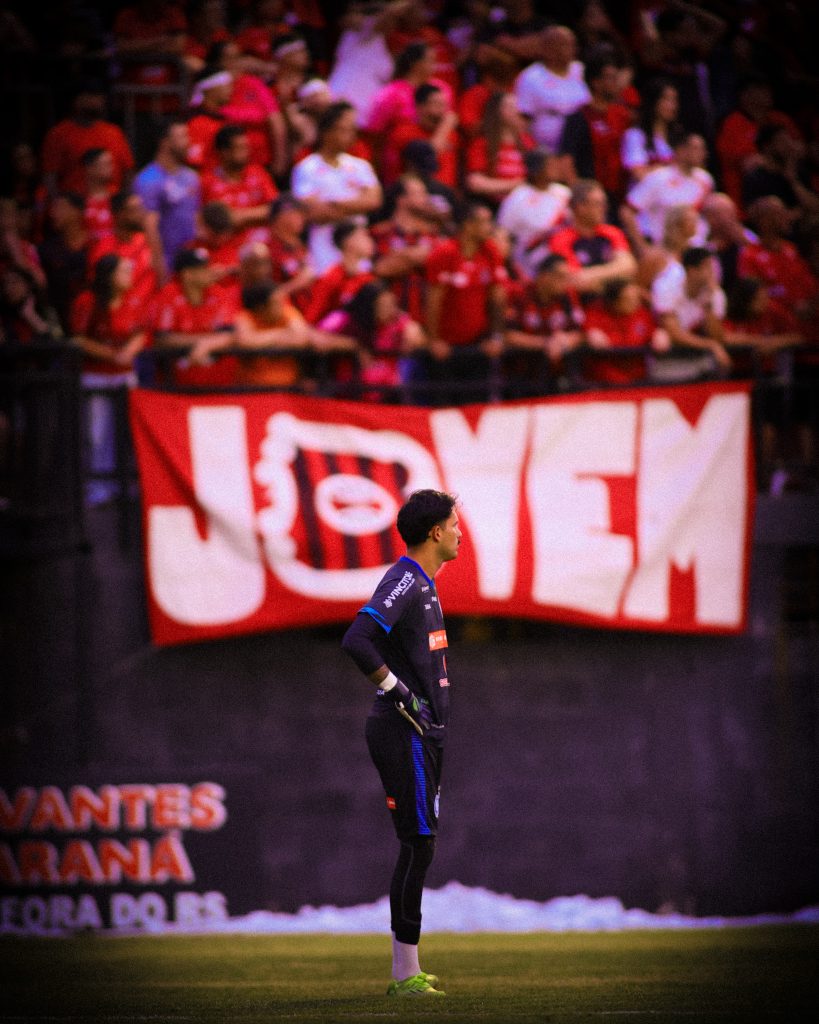
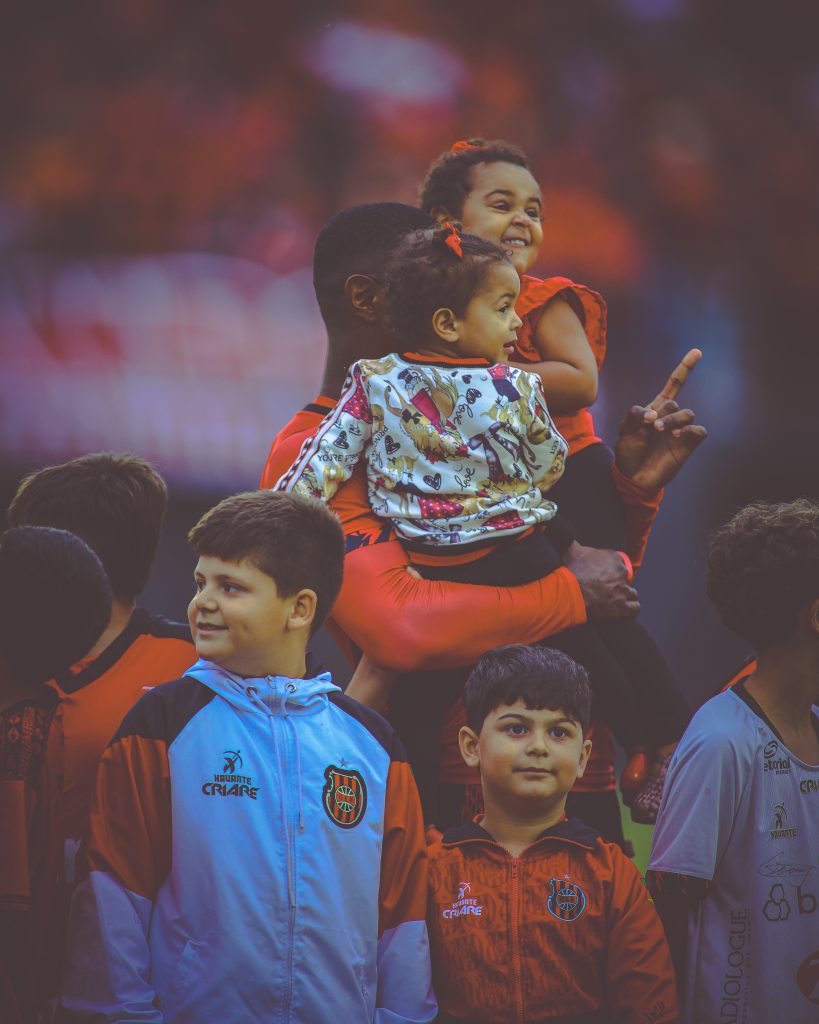
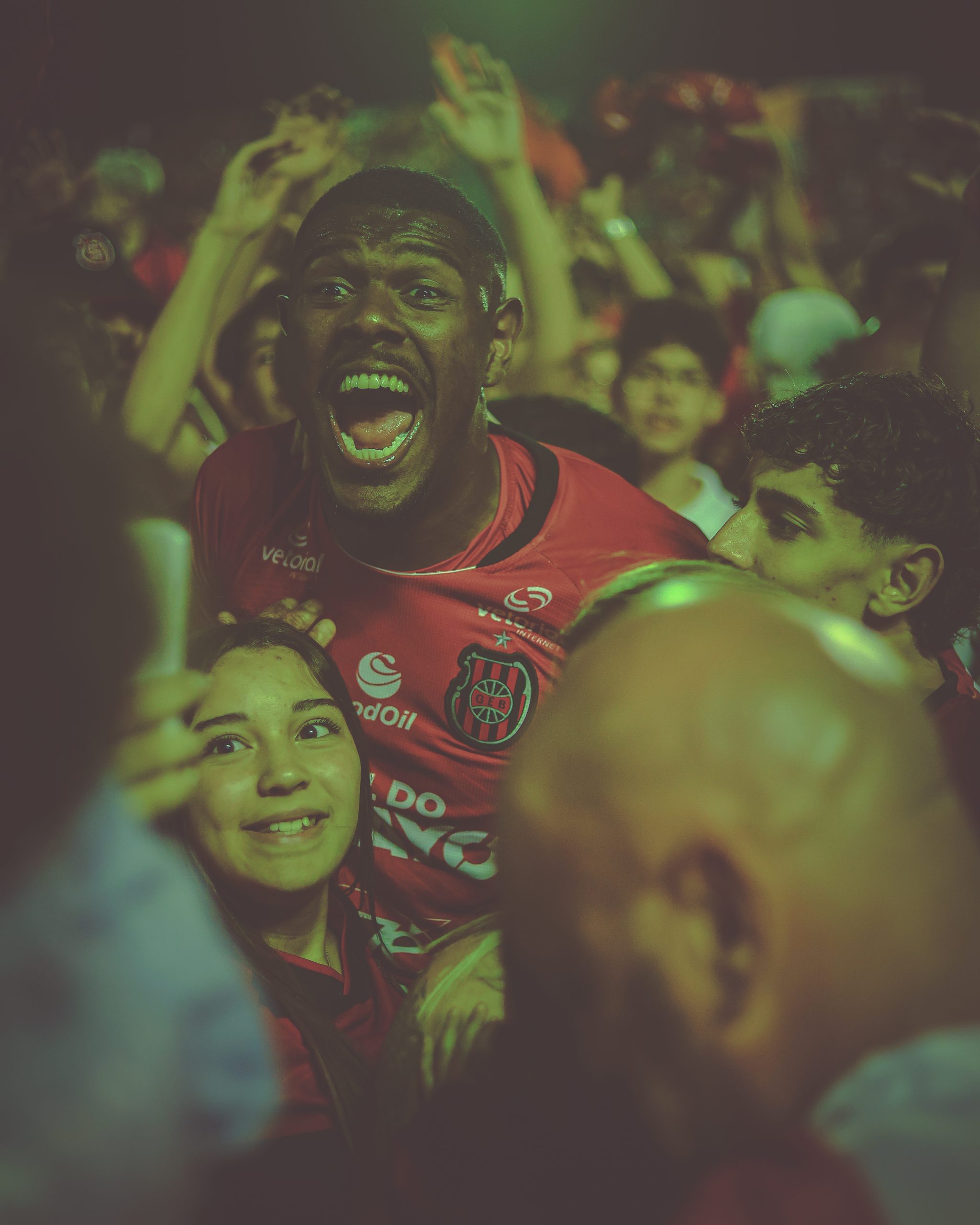
To celebrate the 80th anniversary of Sorrento Calcio, “Sorrento, Worn Over Time” is an editorial project accompanying the launch of the anniversary jersey designed by Ezeta. A story that chooses to begin with what makes this milestone truly meaningful: people, and the deep bond between a club and its city.
Shaping the visual narrative is the photographic gaze of Giuseppe Romano, who moves through Sorrento following gestures, places, and people that define the city’s identity every day. His images capture a living relationship between the jersey, the city, and those who wear it, leaving space for time rather than emphasis.
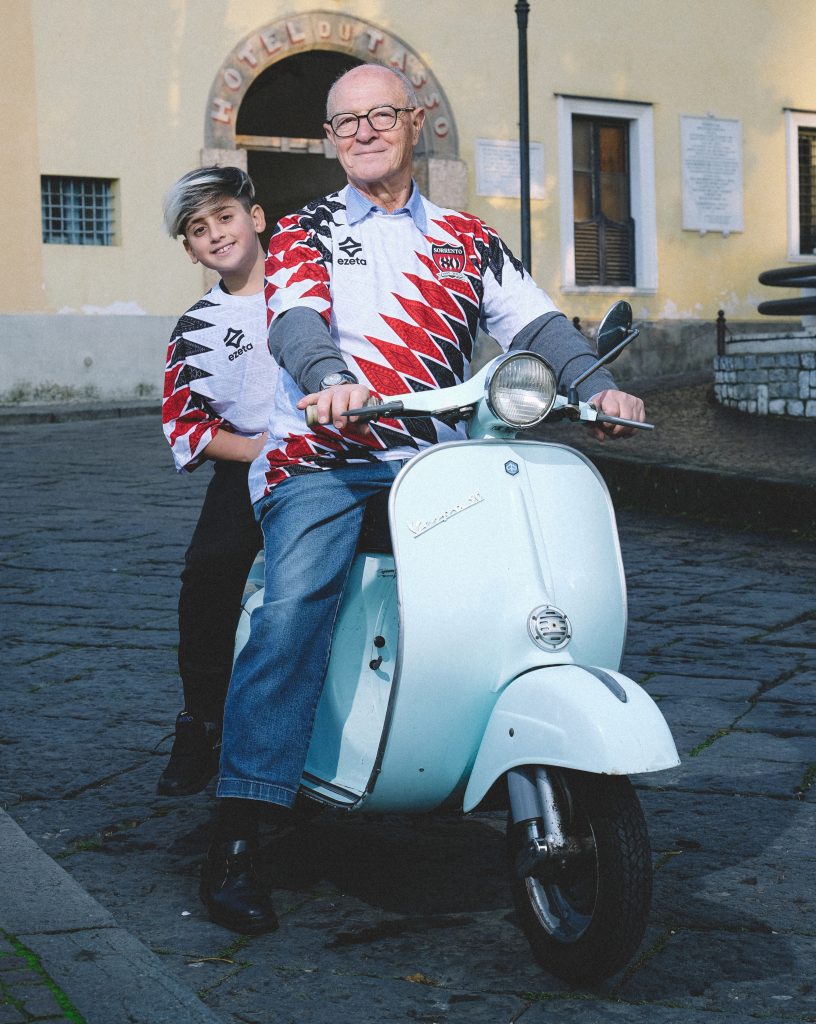
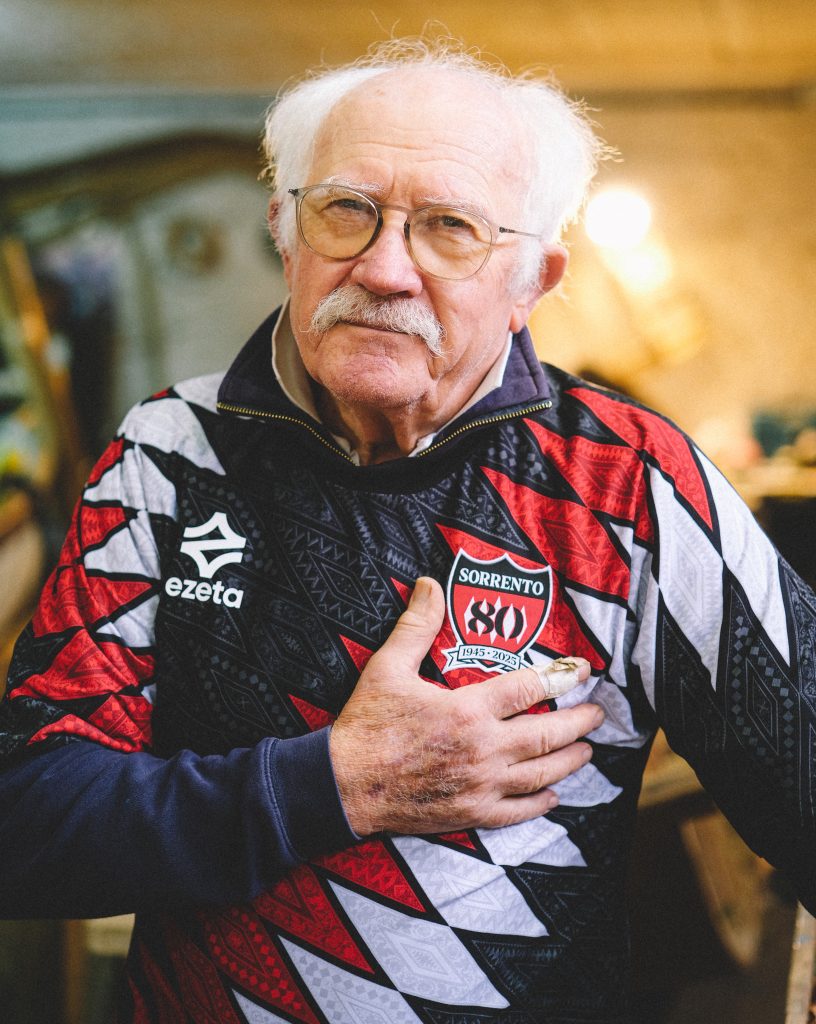
The project originates from a proposal by Ezeta, who envisioned this anniversary not as a purely aesthetic celebration but as an opportunity to give voice to a shared history. From this intuition came the collaboration with Magliofili and Sport Media House, who curated the creative direction of the project, bringing together different sensibilities and languages to build an editorial narrative that enhances the jersey’s design and cultural meaning.
This story did not start in a photographic studio, but in the streets of Sorrento. The project took shape by walking through the city, knocking on workshop doors, entering laboratories, and stopping in places of everyday life. Those who live and work in Sorrento were asked what the city represents to them, and to wear a jersey that celebrates eighty years of belonging, memory, and identity.
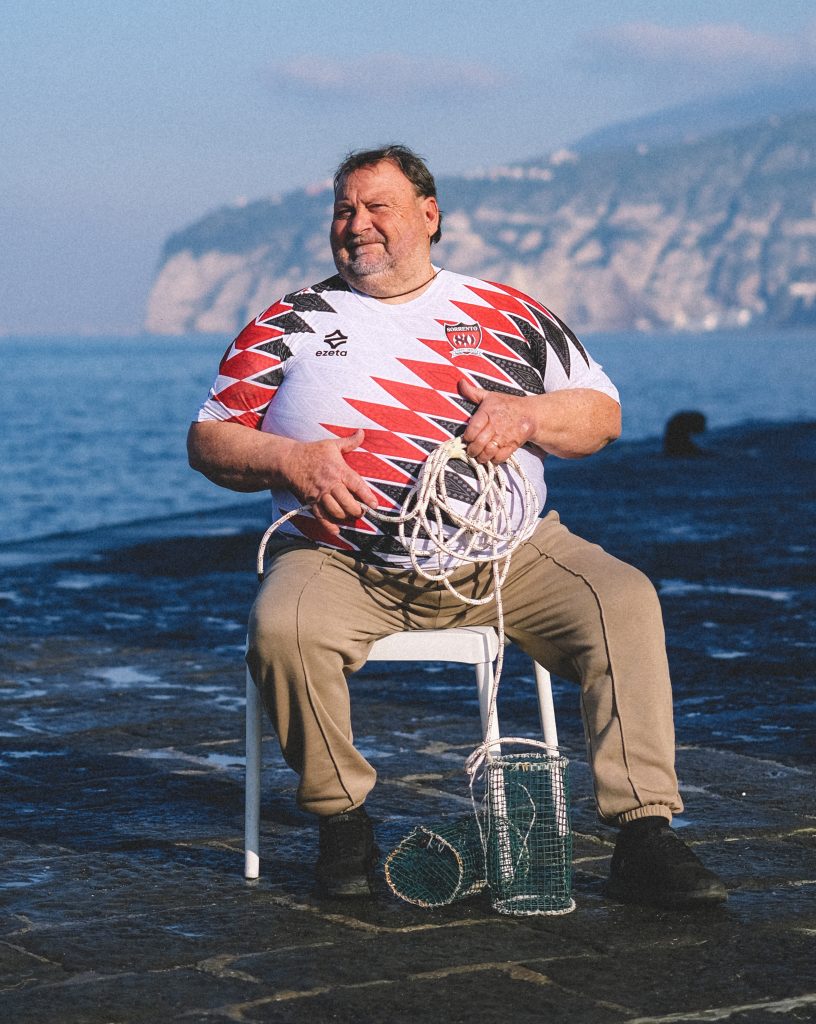
The jersey thus becomes something alive, far from a purely celebratory or symbolic representation. It is part of daily life: work, routine, effort, and joy. A legacy that is not preserved, but worn.
The two versions of the jersey, white and black, are interpreted by real citizens, chosen not as models but as protagonists. Not didactic portraits dividing generations, but images that speak of encounters, exchanges, and continuity between past and present.
Iconic and ordinary places throughout Sorrento become an integral part of the narrative. The city is not a backdrop, but a living context, naturally intertwined with the jersey and the situations of everyday life.
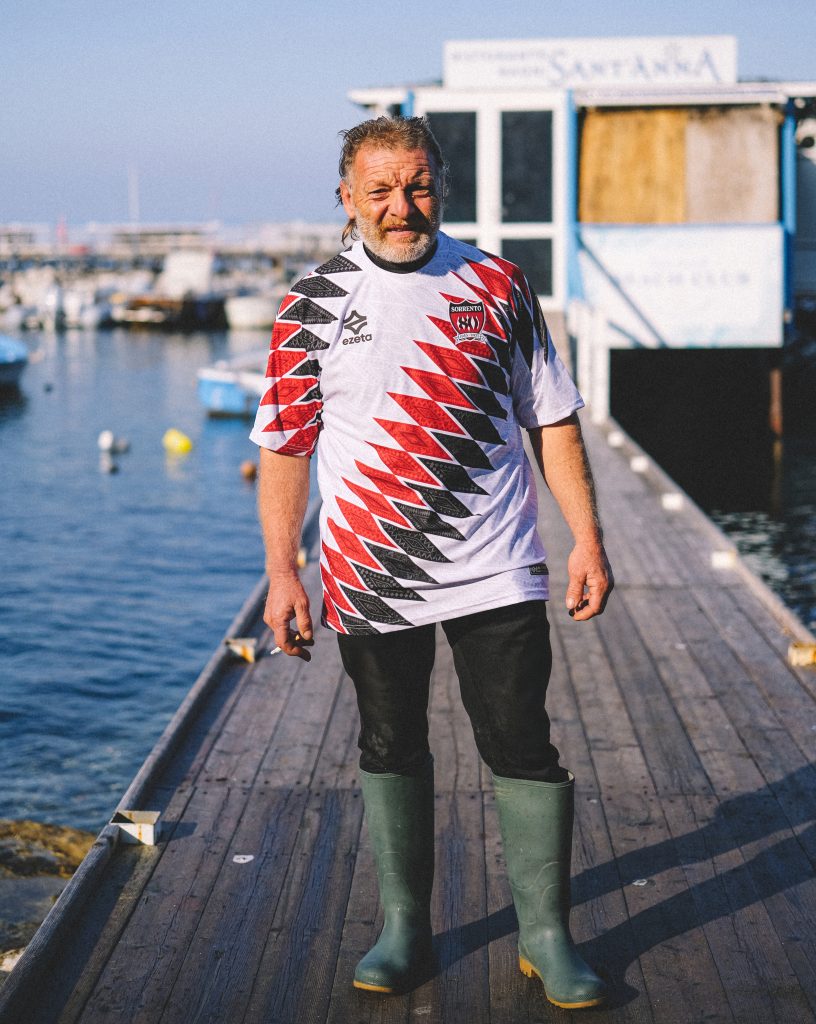
The editorial project will be presented through a selection of photographs and video content released on social channels, accompanying the launch of the anniversary jersey.
Because some stories do not belong to a single moment.
They live through time, and they continue to be worn.
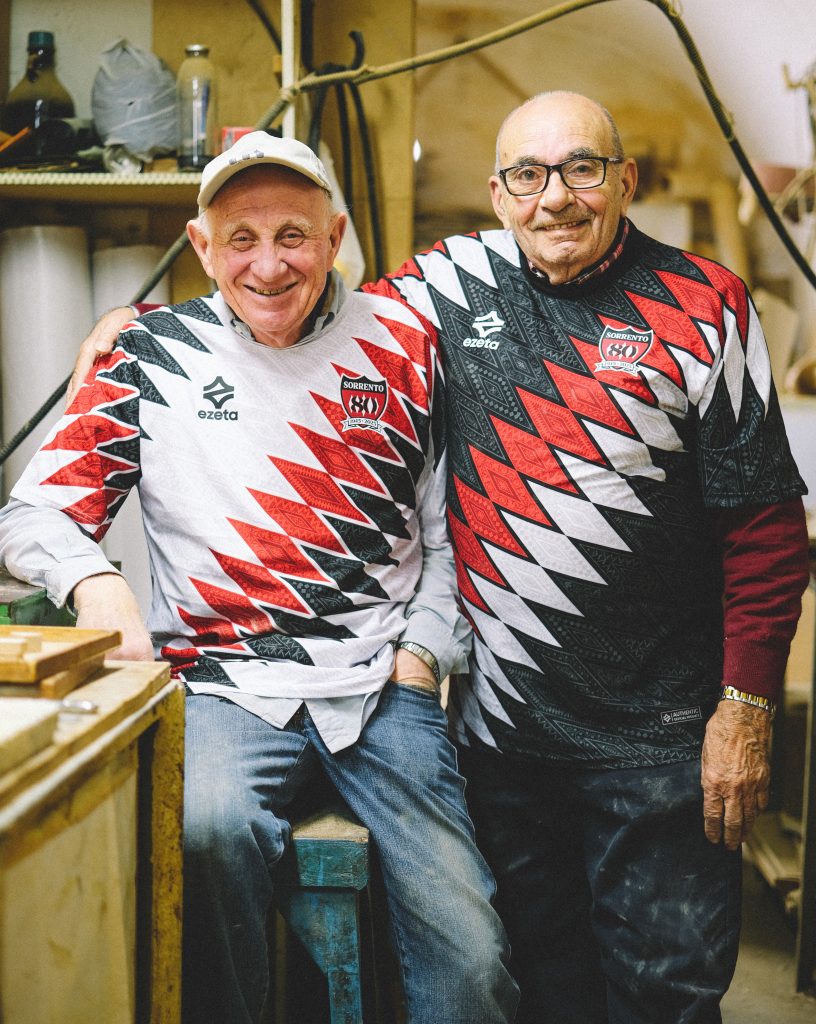
Images by Giuseppe Romano,
Kit available at: Ezeta.
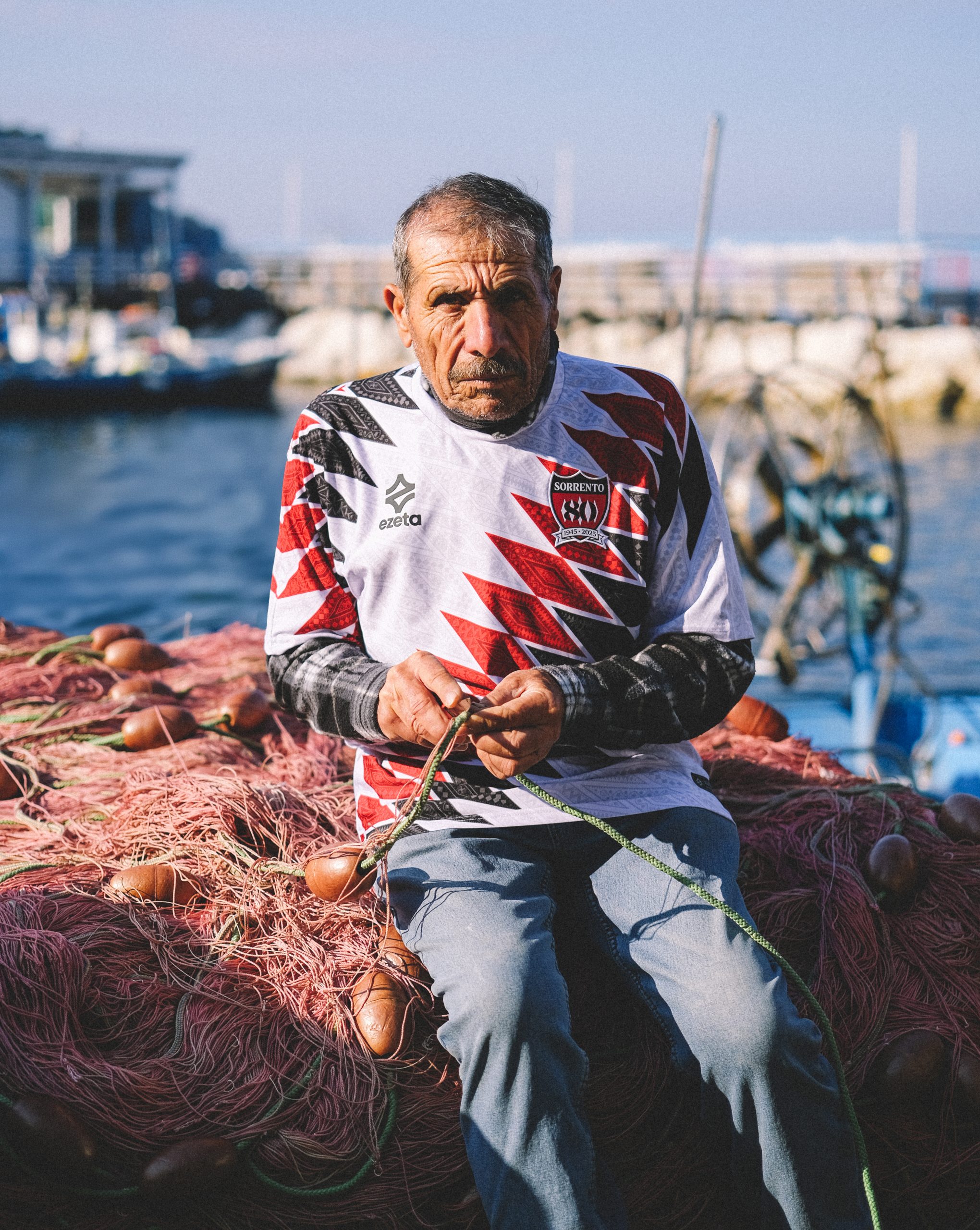
All words and images: Imma Rhamely Borrelli
They are quieter than the stories of the ultras, perhaps, but no less rich — lives shaped by football and devotion.
A December Ritual
December 8th marks the unofficial beginning of the Christmas holidays in Italy. Homes are dressed with fairy lights and mistletoe, while cities illuminate towering trees in both grand piazzas and quiet neighbourhood squares.
I, on the other hand, spend this day at the Partenio–Lombardi Stadium in Avellino for a Serie B clash between Avellino and Venezia.

Outside the Ground
The stadium’s perimeter walls tell their own story — a collage of murals and stickers, both historic and contemporary. In the car park opposite, makeshift stalls sell scarves and gadgets, while kiosks offer sandwiches and soft drinks. The air is thick with smoke, chatter, and that familiar pre-match adrenaline.
I follow the flow of supporters and enter the Tribuna Terminio. I never quite make it to my assigned seat in the press box, choosing instead the balcony. In Avellino, people are hospitable, open, and generous — something that cannot be taken for granted. They have no hesitation in making space for me, even as a foreigner with a camera slung around my neck, offering me a perfect vantage point of the pitch.

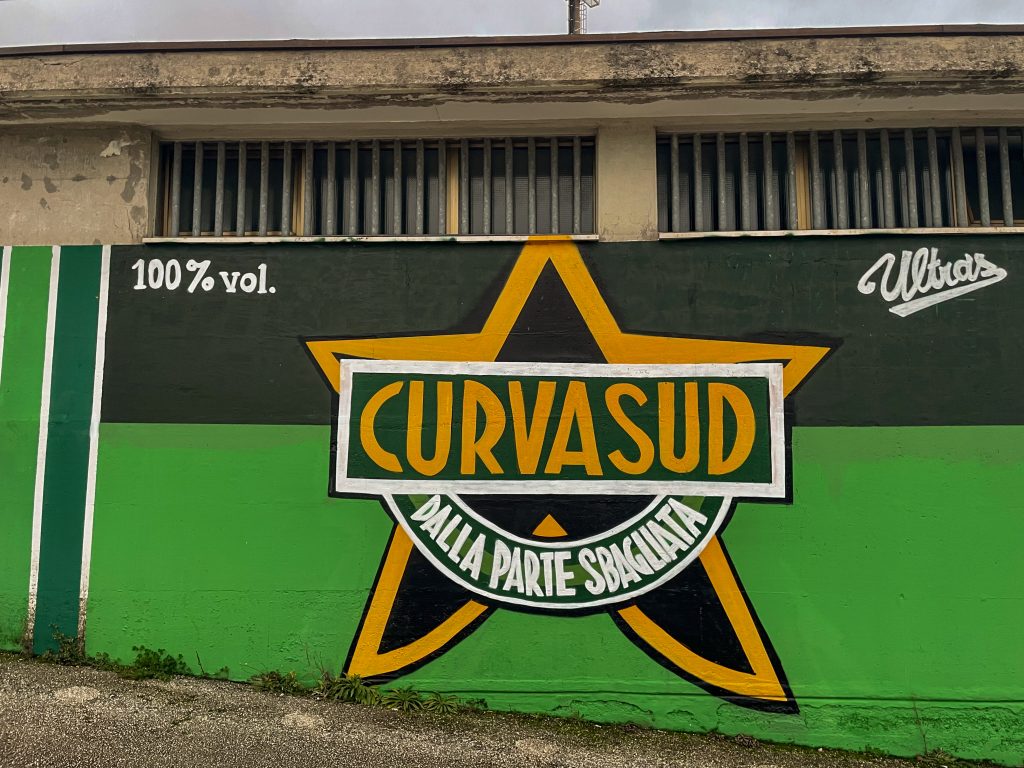
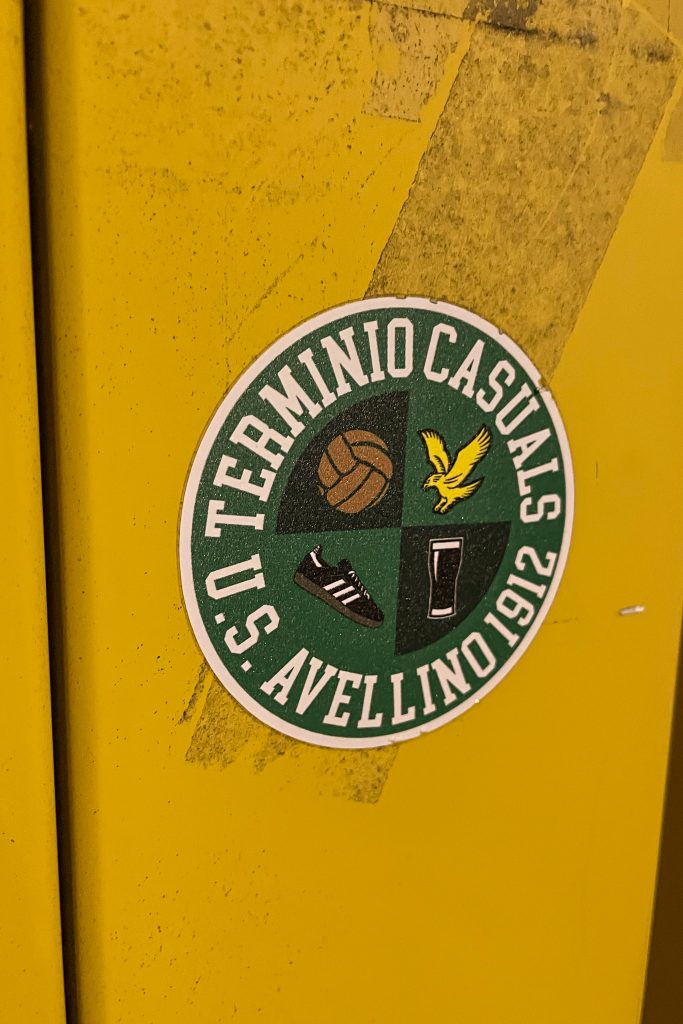
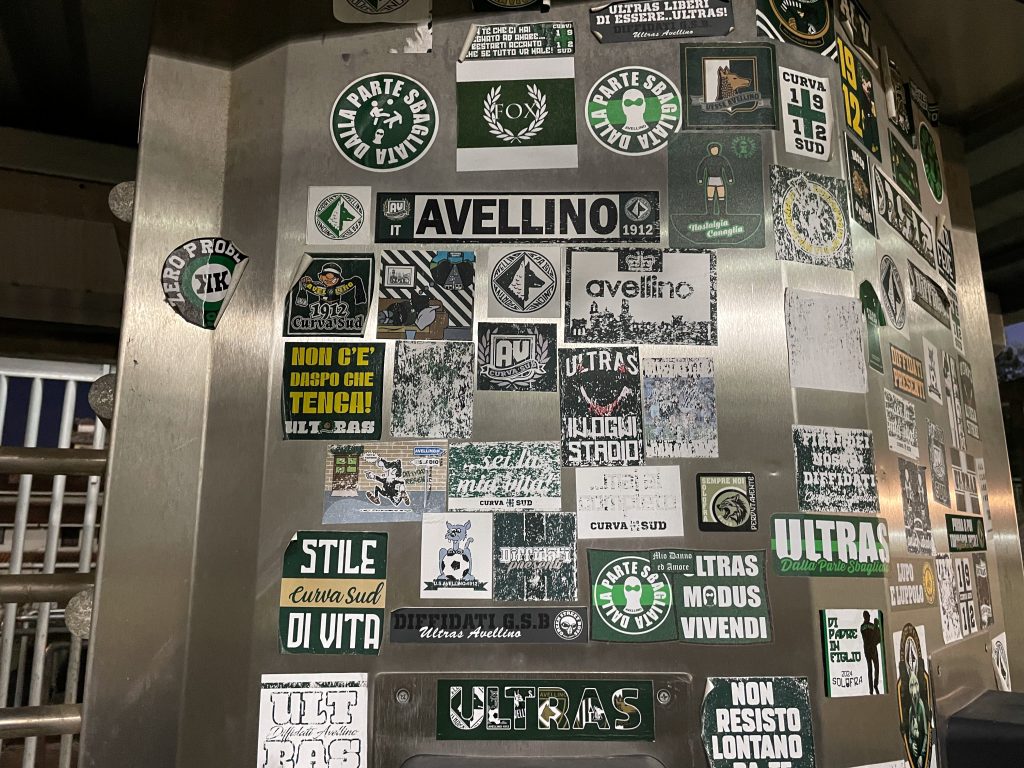
Colours from the Away End
According to official figures, around 120 Venezia supporters are present. My side-on view of the away section is partial, but close enough to hear them clearly during the brief moments when the home curva allows itself a pause. They are colourful, armed with flags, and in the first half even risk bare-chested chants. A strong showing, both in voice and presence.
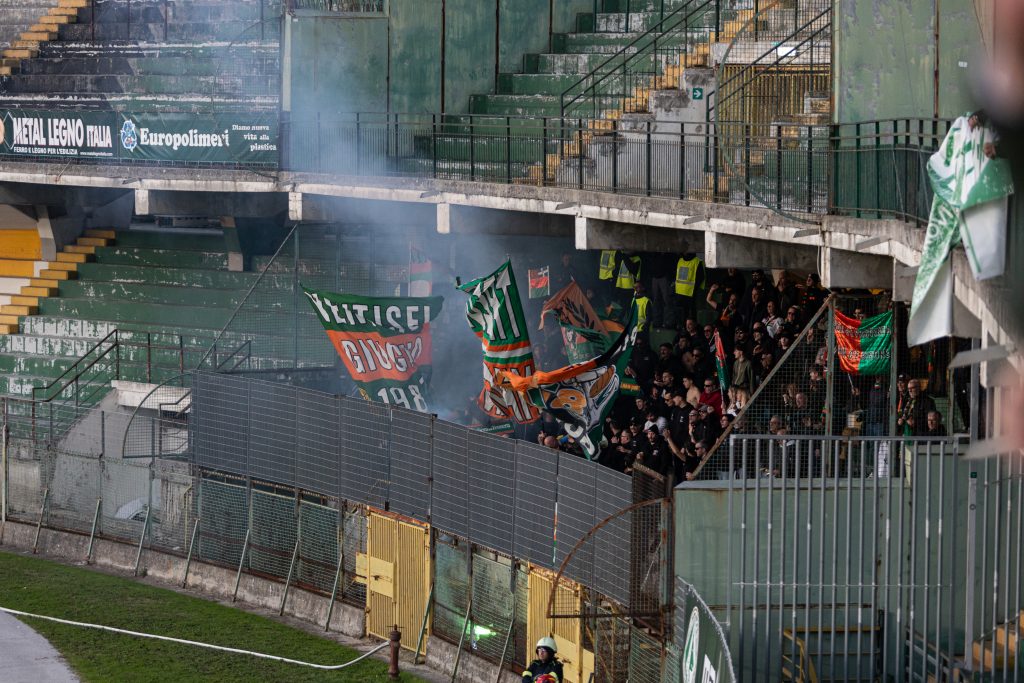
The Heartbeat of the Curva Sud
The Curva Sud of Avellino, however, is a spectacle in itself. Hands rise into the air as voices thunder “LUPI!” before the flags of the various groups begin to wave in unison. It is a ritual, a collective ignition.
Watching a match from within the stands is something entirely different from viewing it from the sidelines, where attention gravitates towards technical details and tight angles. Among the fans, football becomes a collection of lives and stories.


Sunlight, Smoke, and Song
Beside me stands Mr Vincenzo, listening to live commentary through a small radio pressed to his ear. He tells me he has been coming to the stadium for forty years. He recalls journeys by train and bus, always following Avellino, always faithful, a true lupo. These encounters are only possible through proximity. They are quieter than the stories of the ultras, perhaps, but no less rich — lives shaped by football and devotion.
A generous winter sun warms the green land of Irpinia and those of us in the stands. The feeling of satisfaction I experience here — in this exact place — is complete and impossible to replicate elsewhere.
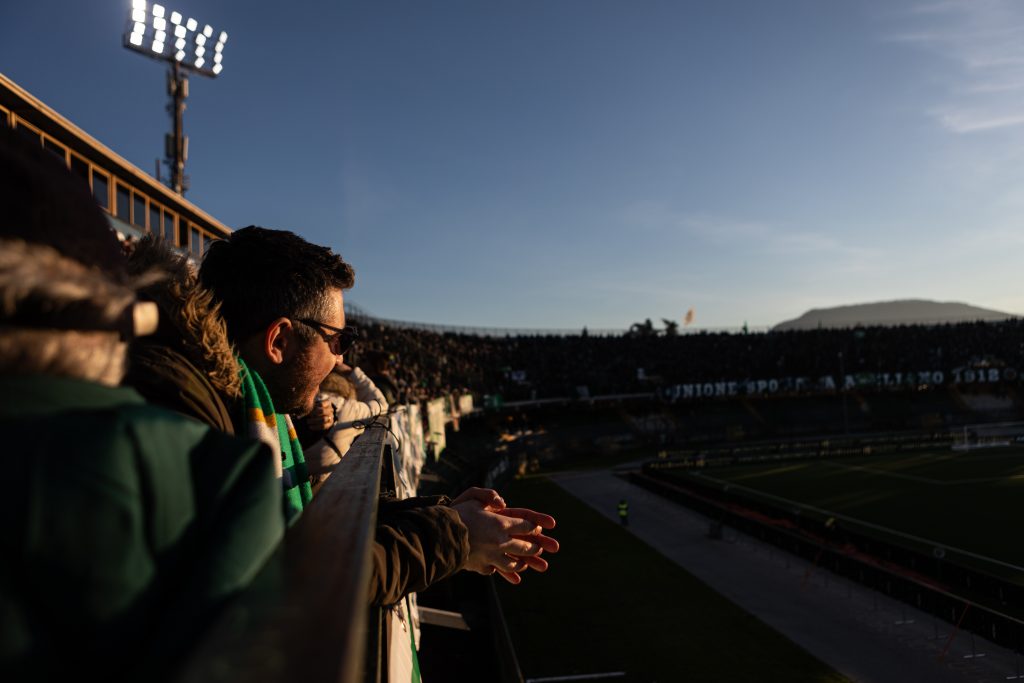
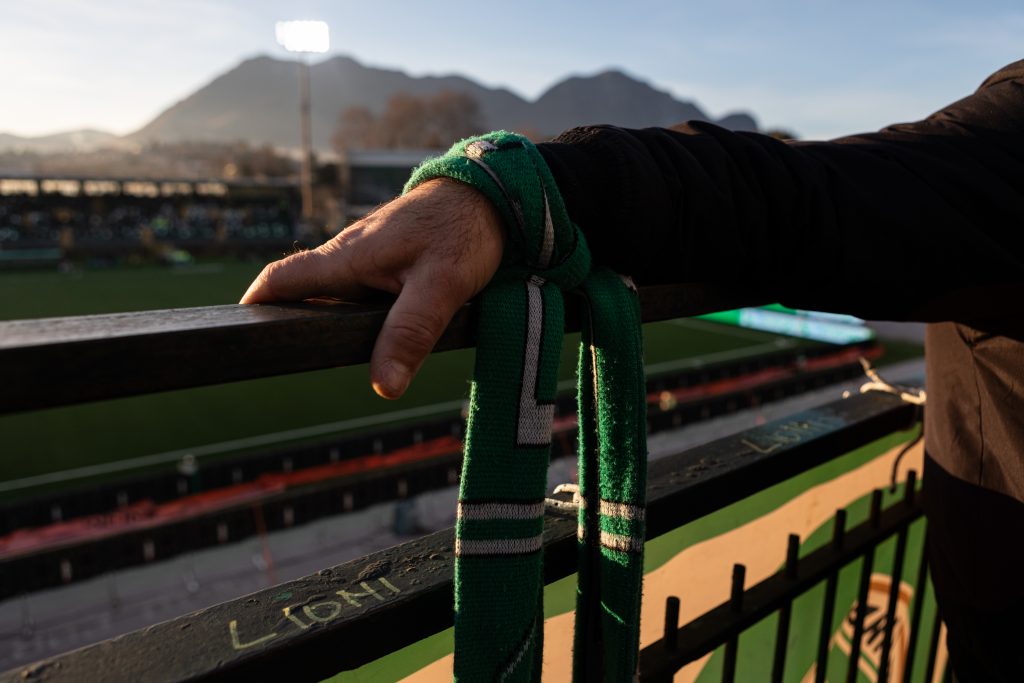
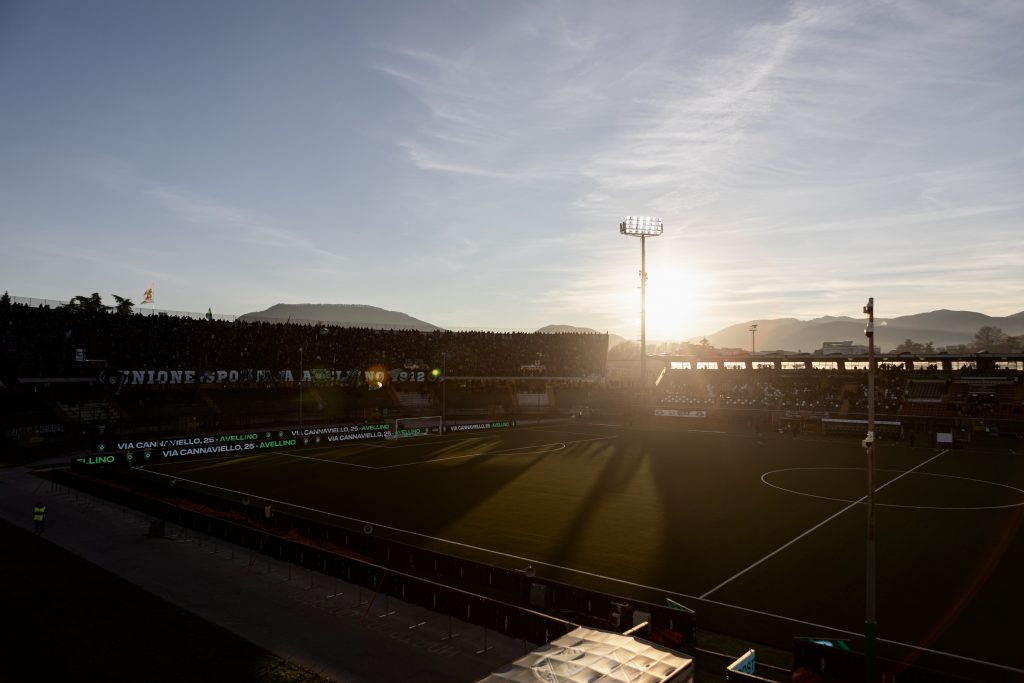
On the pitch, the match is lively. The crowd moves in rhythm with the game, voices rising and falling with every passage of play. When Avellino score, the stadium seems to shake. “Forza lupi!” shout the boys beside me, offering peanuts bought at the bar. One of them wears a faded, well-worn scarf — a living object that has clearly witnessed many afternoons like this.
Smoke bombs flare intermittently between the away section and the Curva Sud. A series of spectacular saves sends Vincenzo into rapture. He turns to me proudly: “Have you seen how beautiful my Avellino is?”
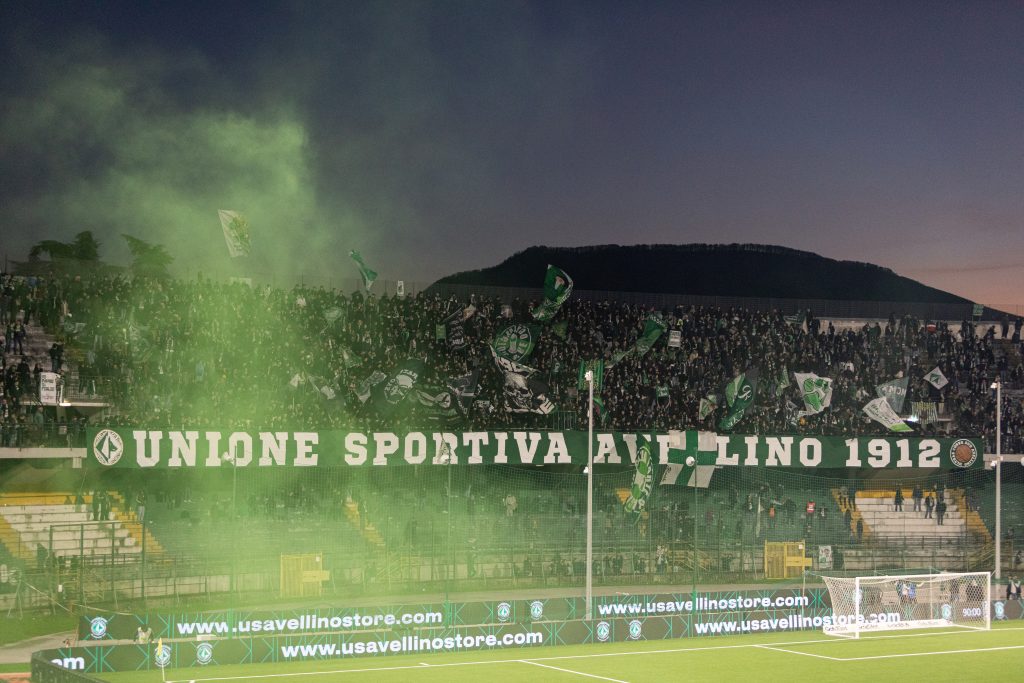
A Tense Finish
In the final minutes and added time, it becomes impossible not to put the camera aside and simply watch. The curva presses relentlessly, as does the entire stadium. Venezia score, but VAR intervenes — offside. The final whistle confirms a 1–1 draw.
At full time, the stadium becomes a wall of green scarves.
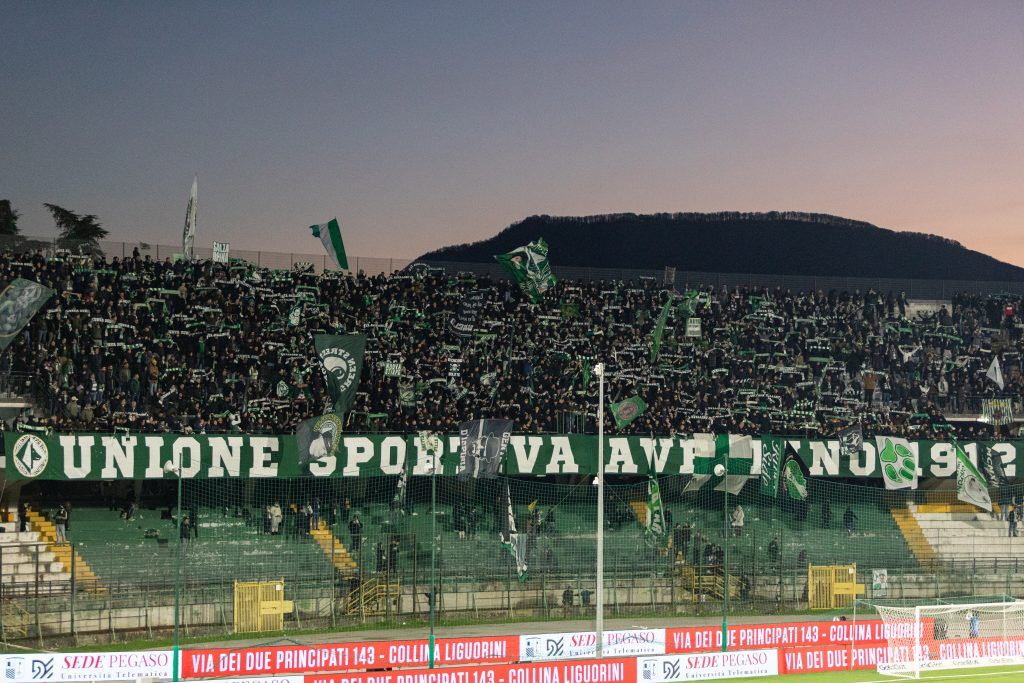
Lingering Moments
No one seems in a hurry to leave. While the away fans wait to be escorted out, the Curva Sud’s “third half” unfolds — chants of unity, freedom for ultras, and the right to travel freely. Eventually, the stewards arrive, gently urging people to clear the steps.
On my way out, I stop once more to photograph the stickers around the turnstiles. Leaving something beautiful is never easy, but memory helps soften the departure — sometimes even before the moment has fully passed.
Back in the car, as traffic inches forward and warm air fills the cabin, I begin to organise the experience in my mind, hoping to write about it with the care it deserves.
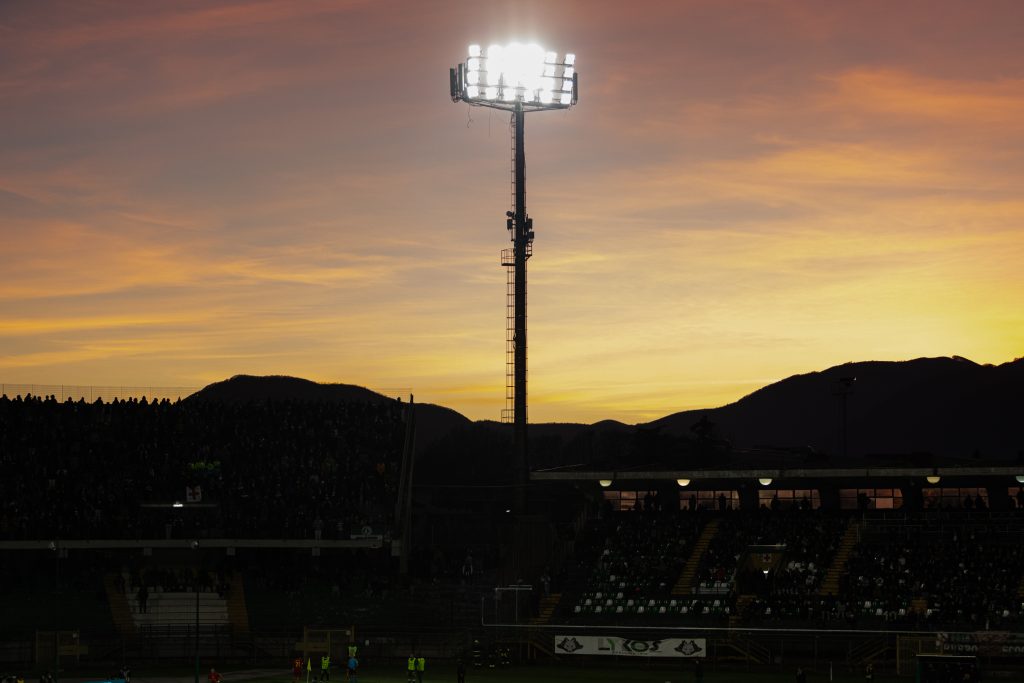
All words and images: Imma Rhamely Borrelli
